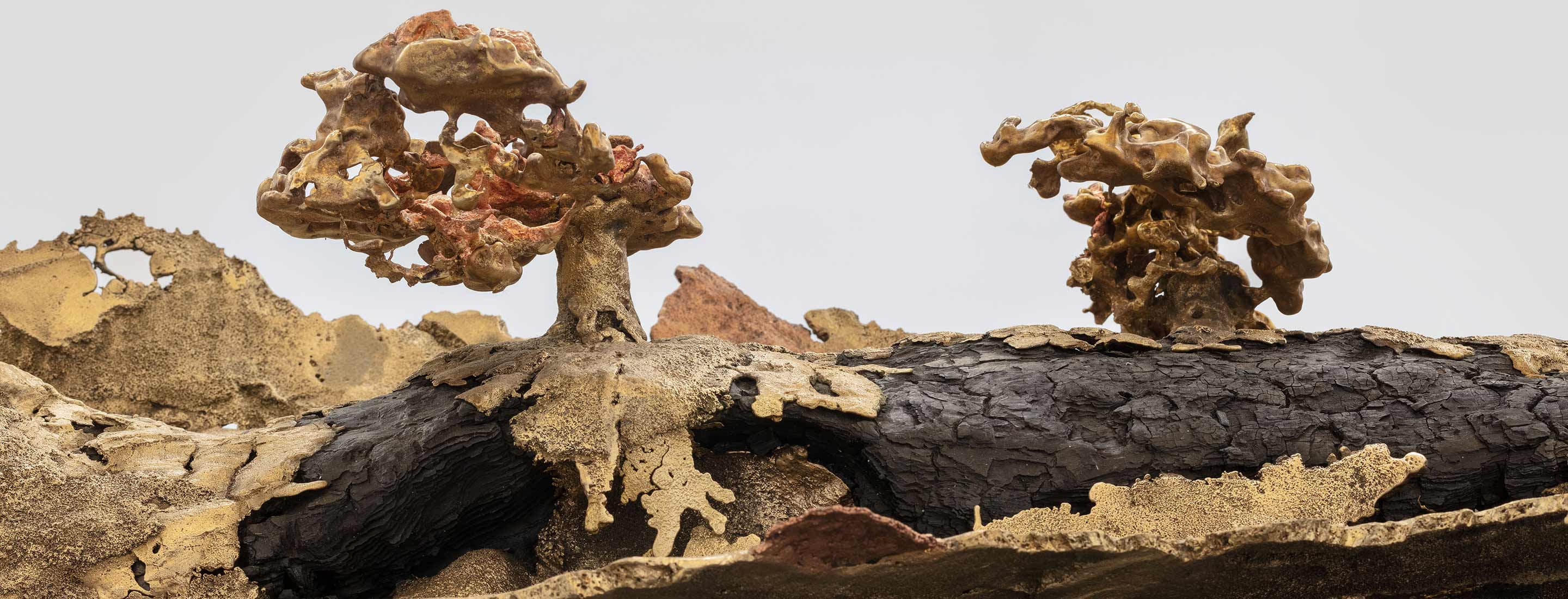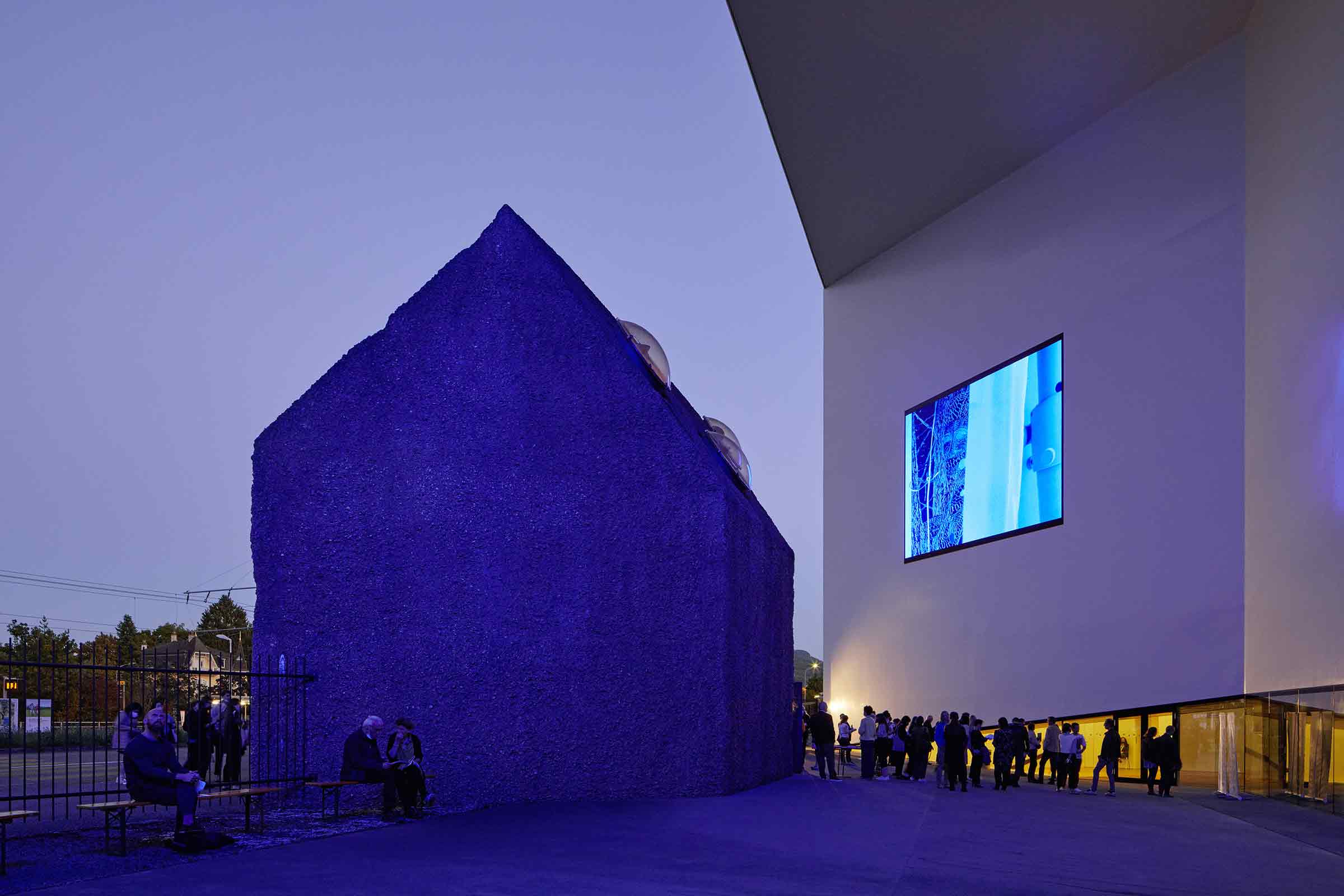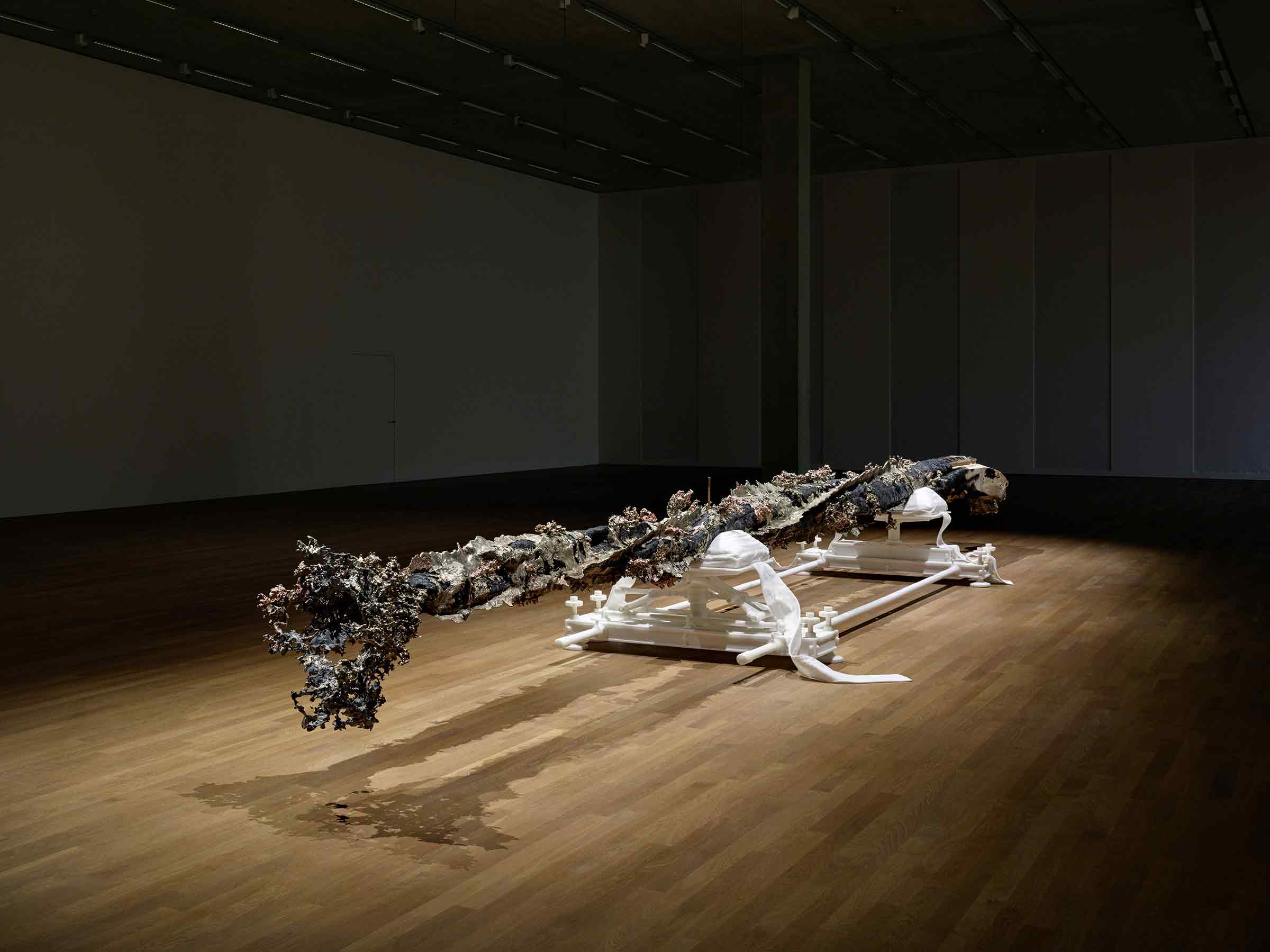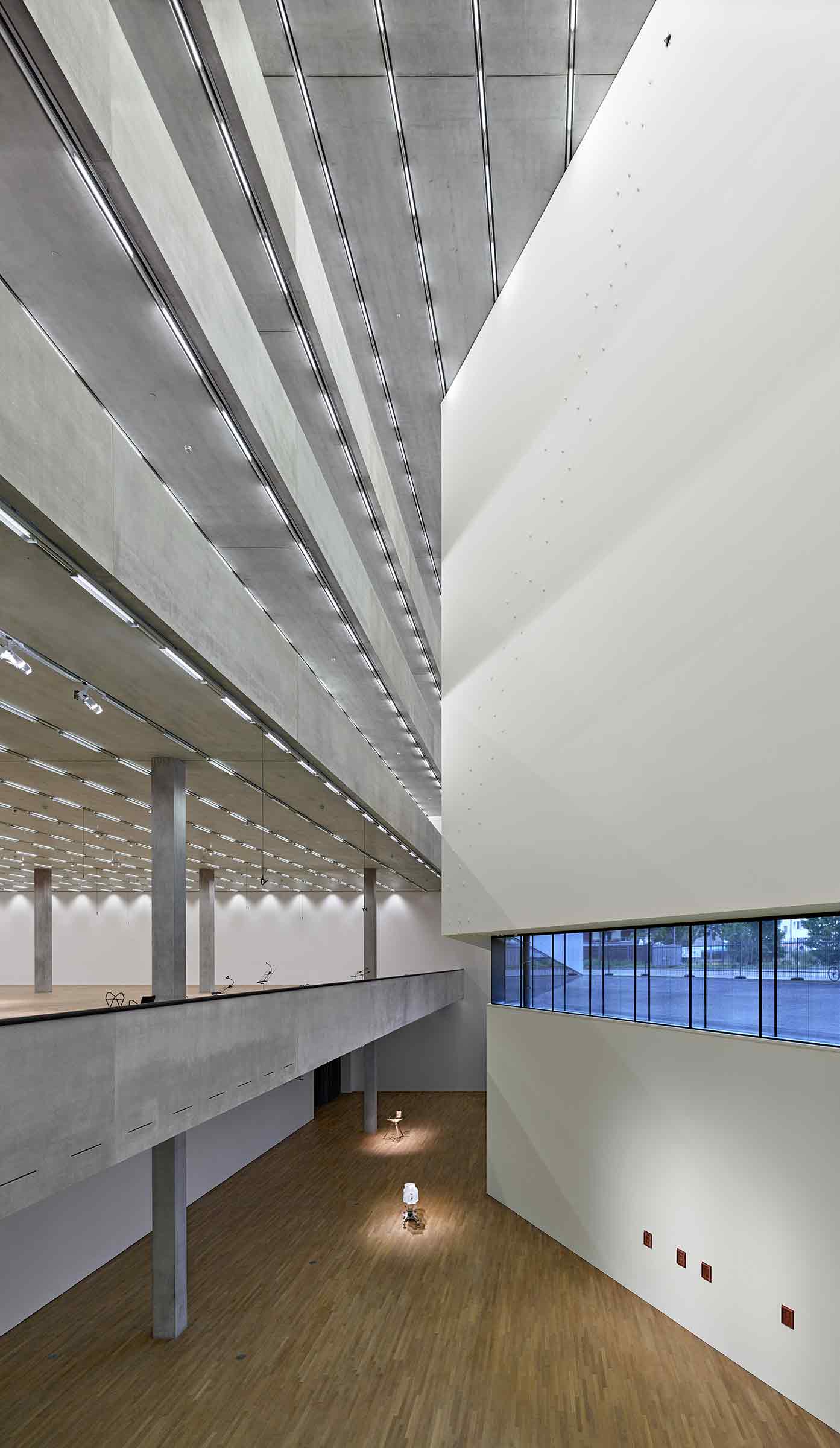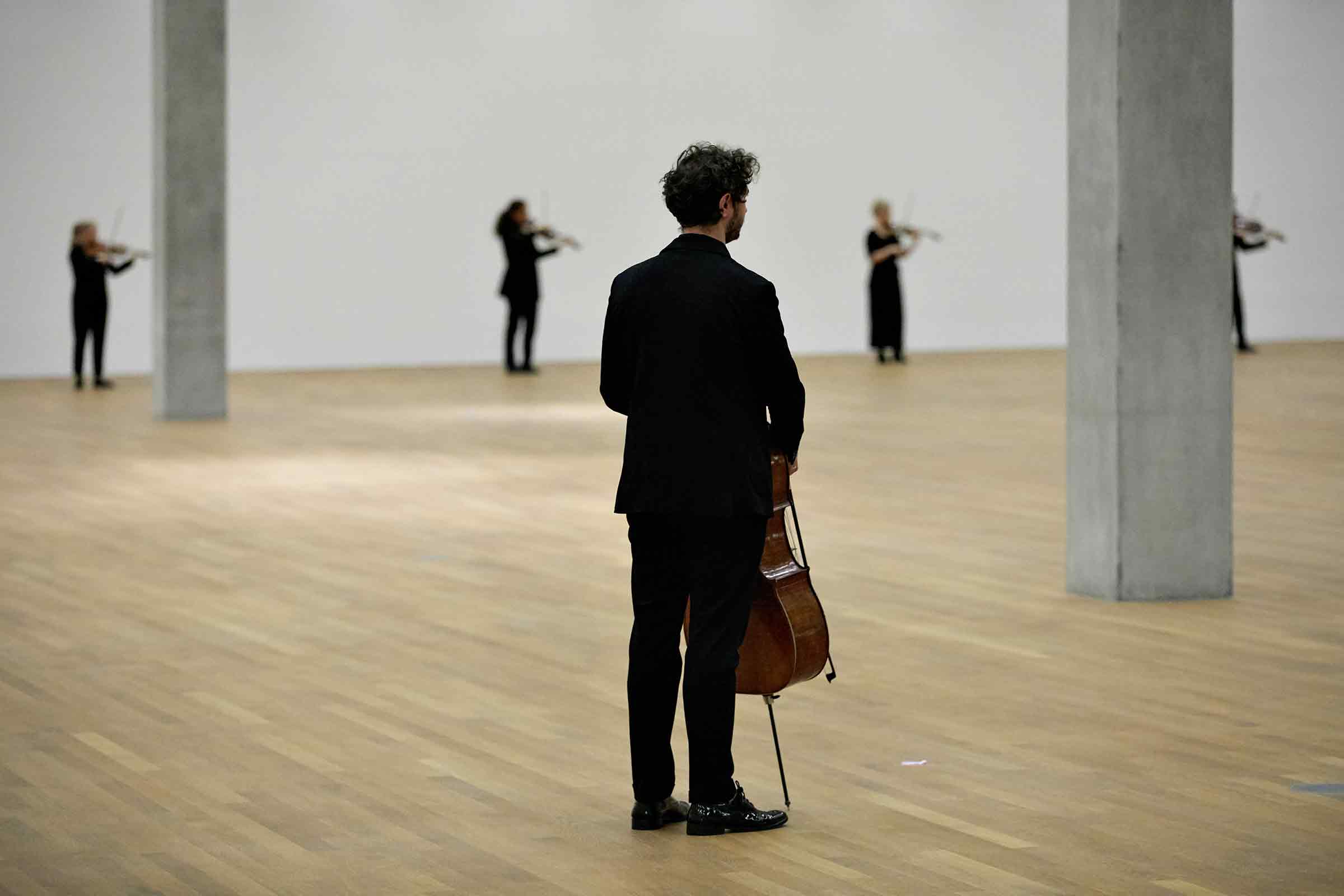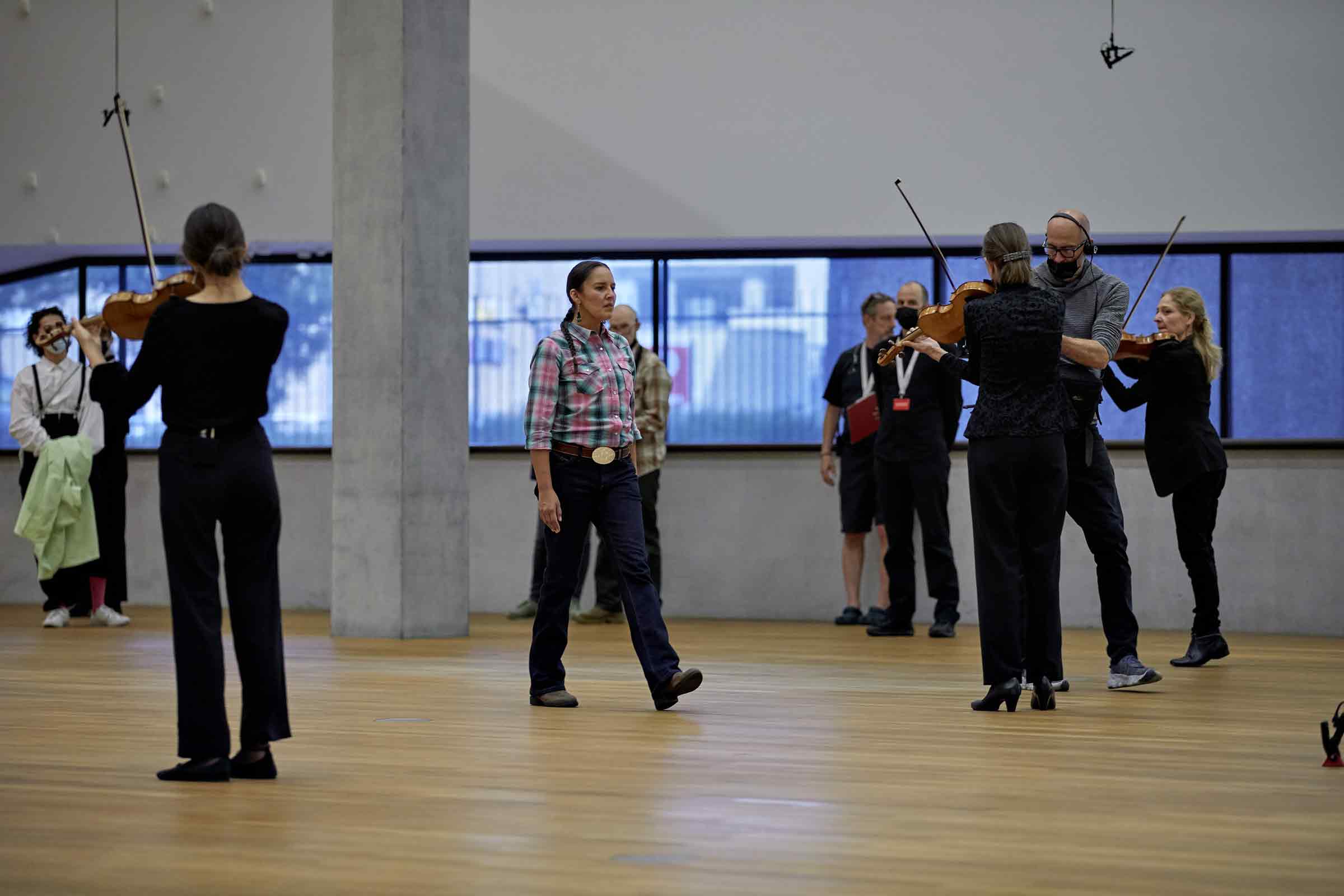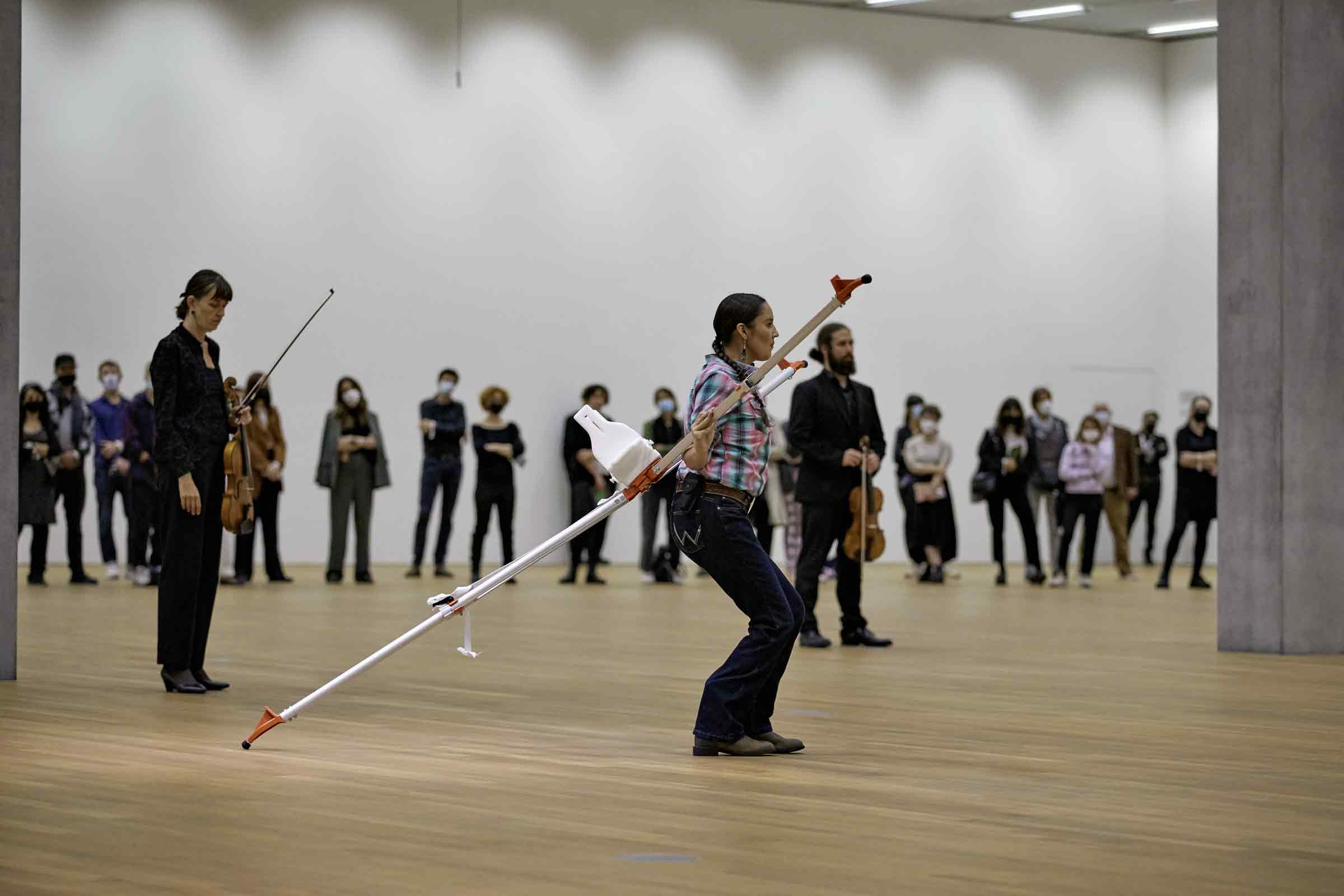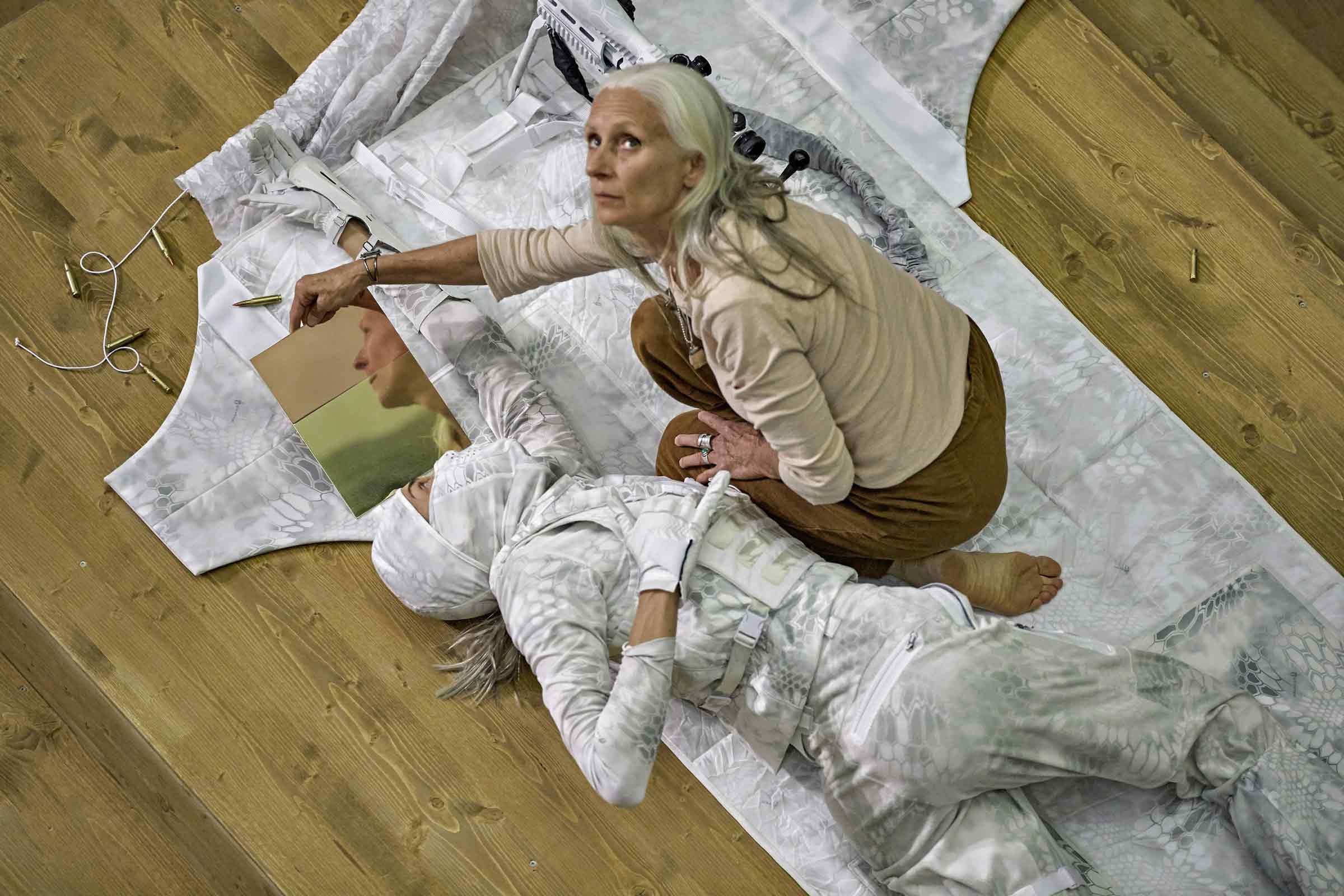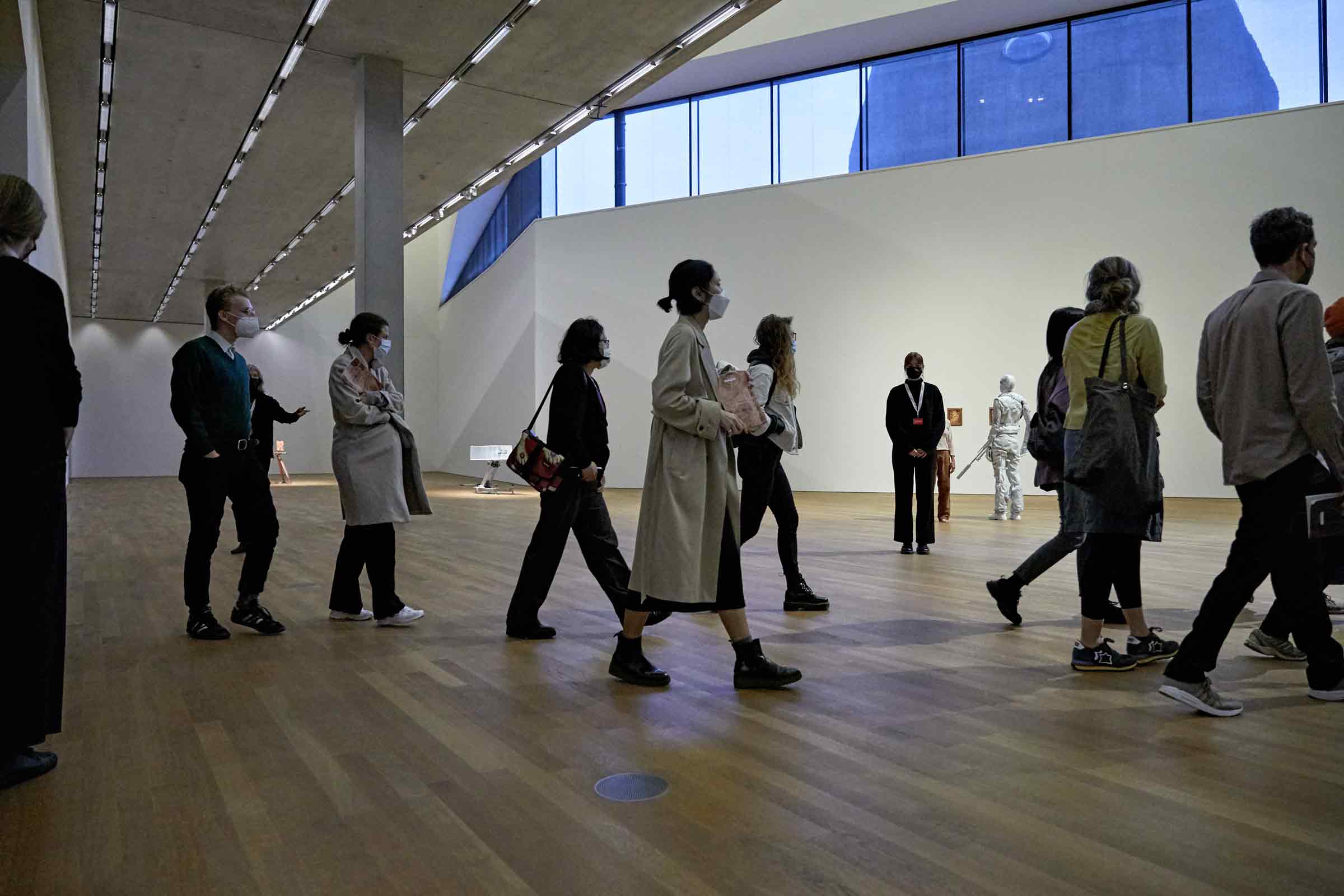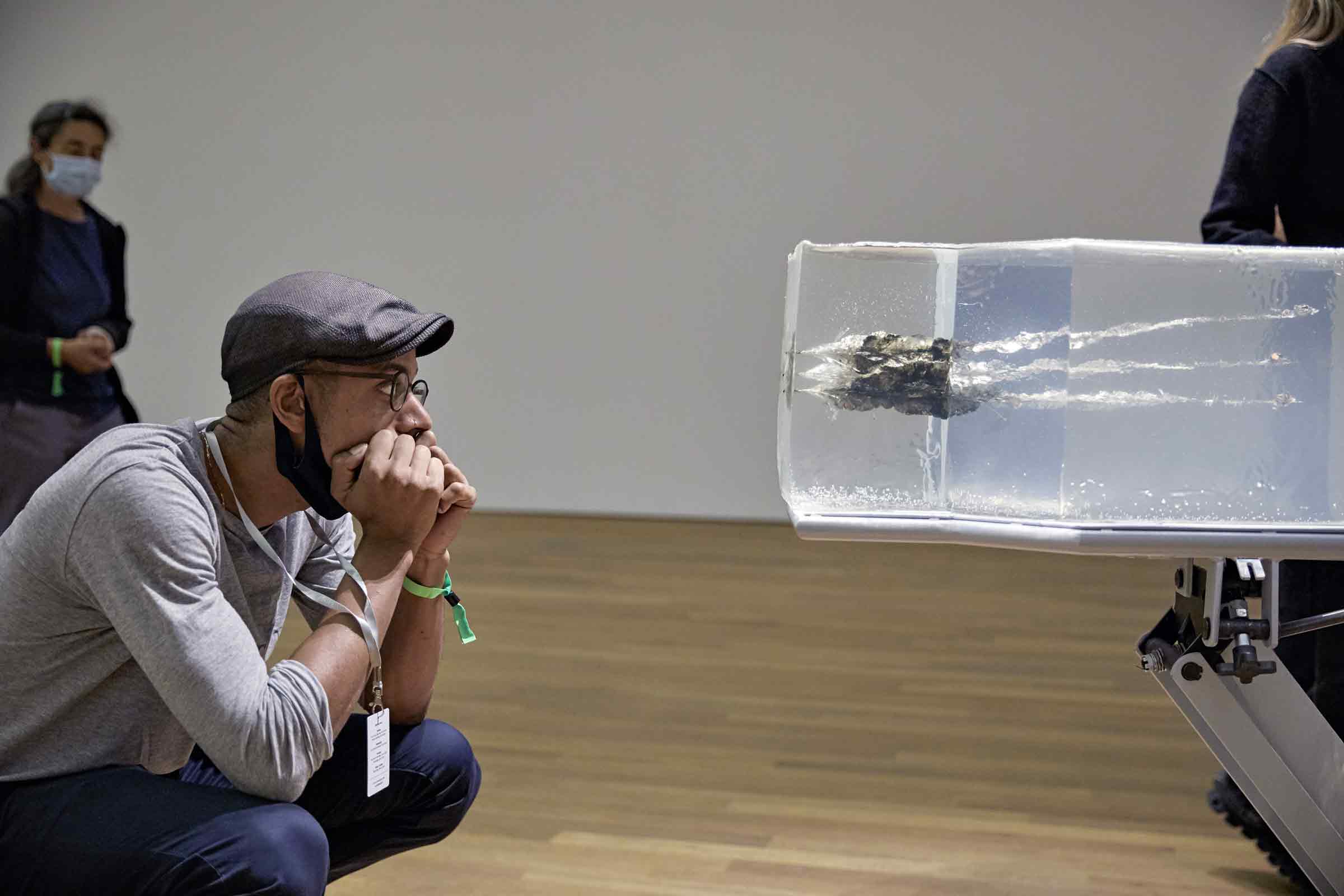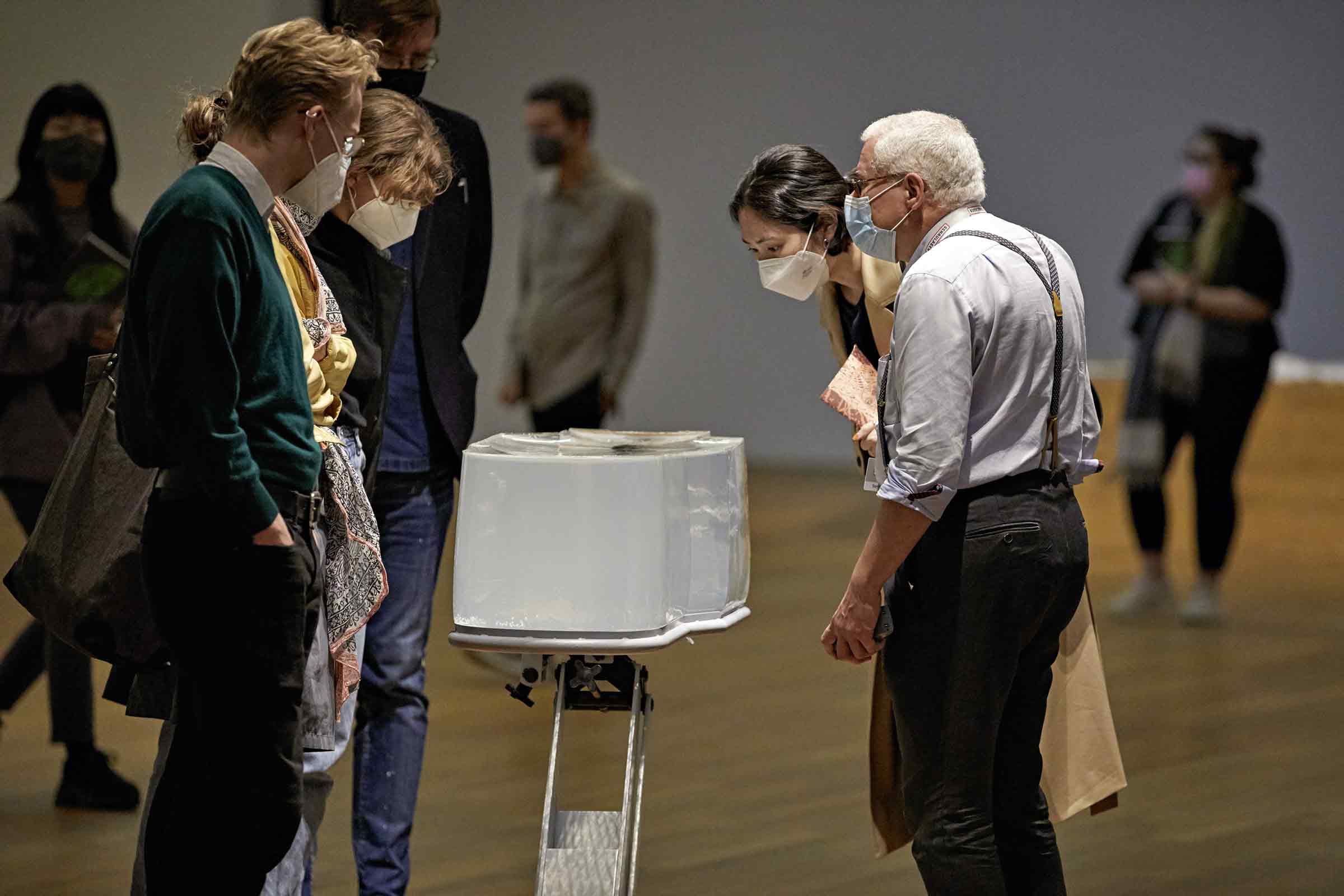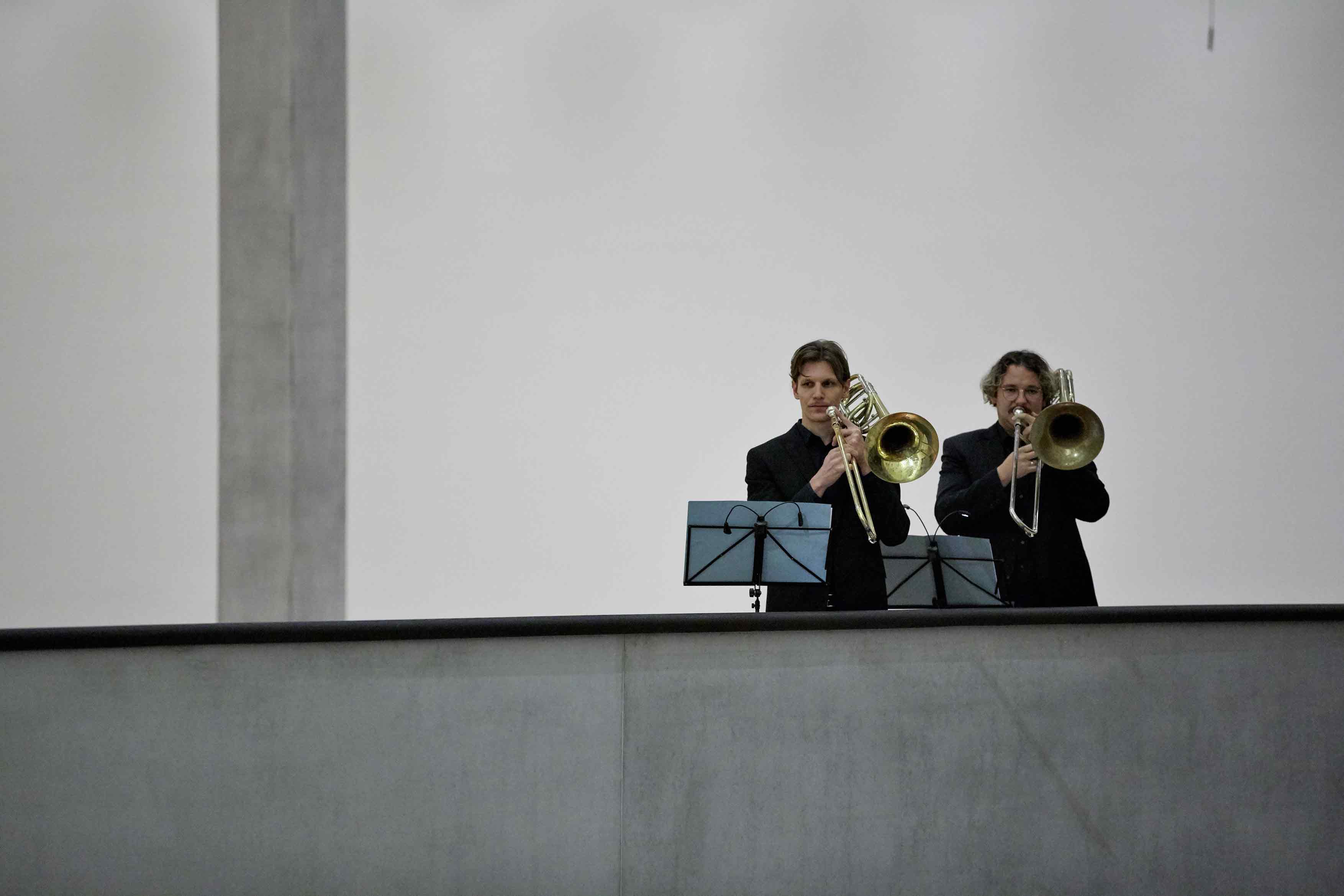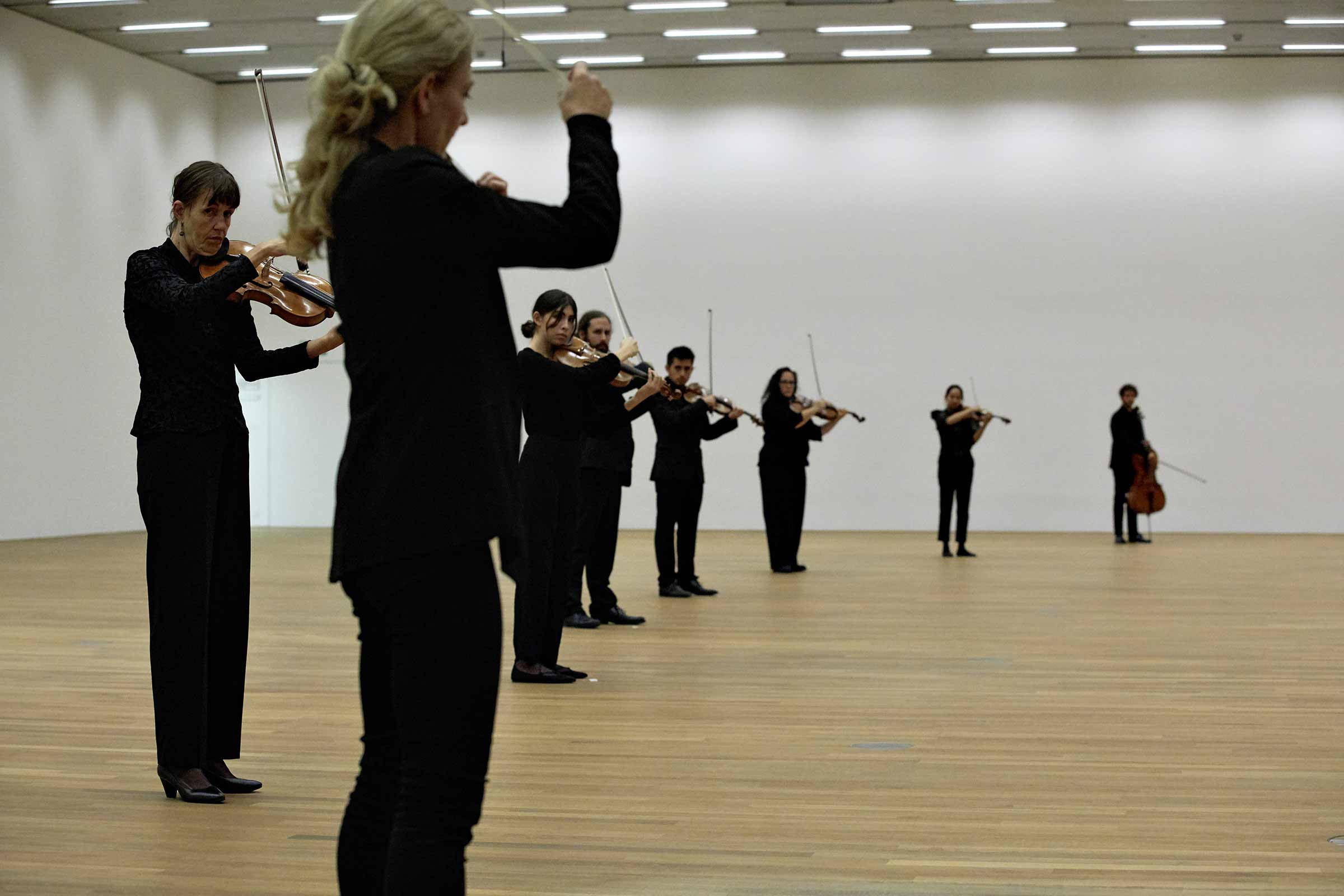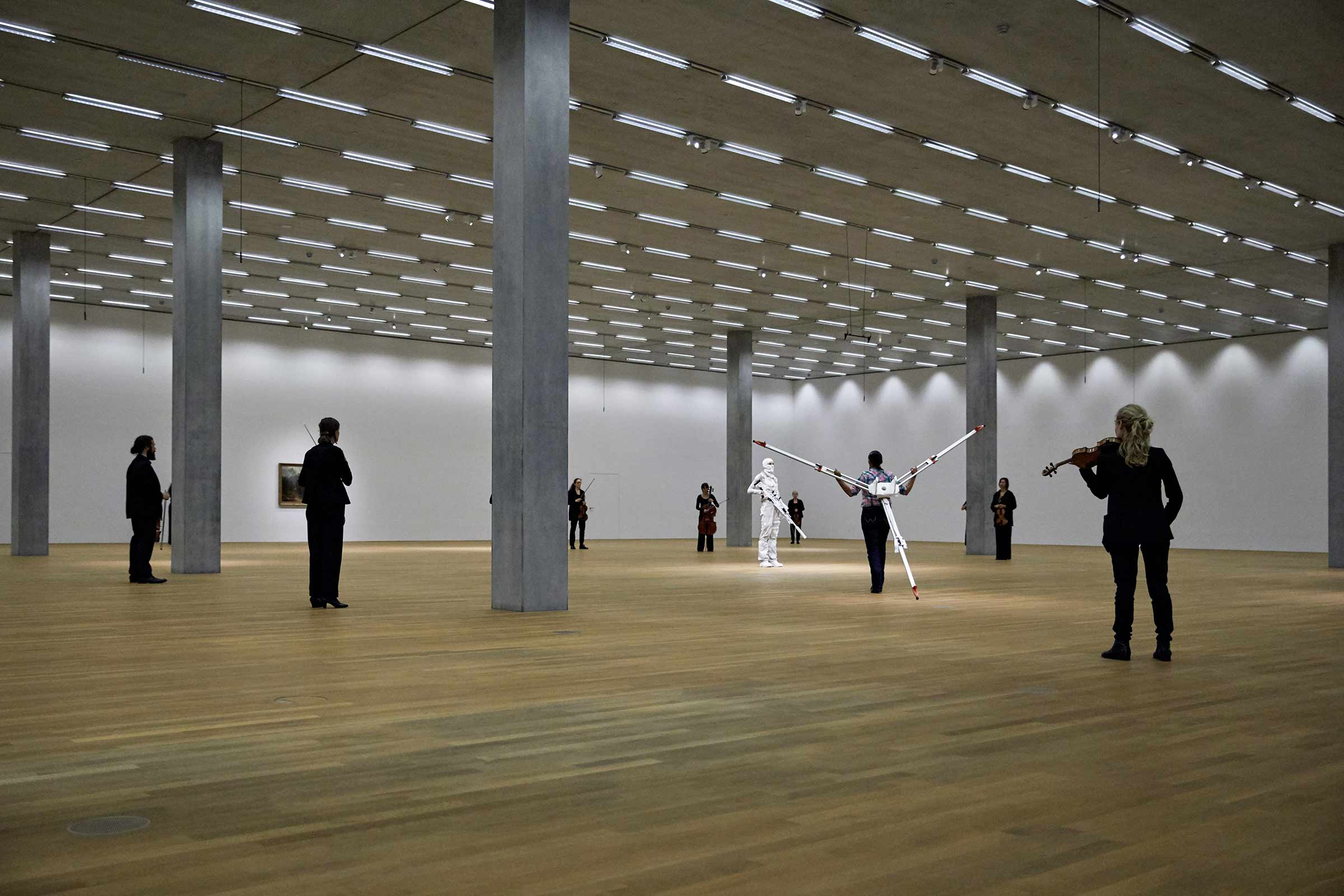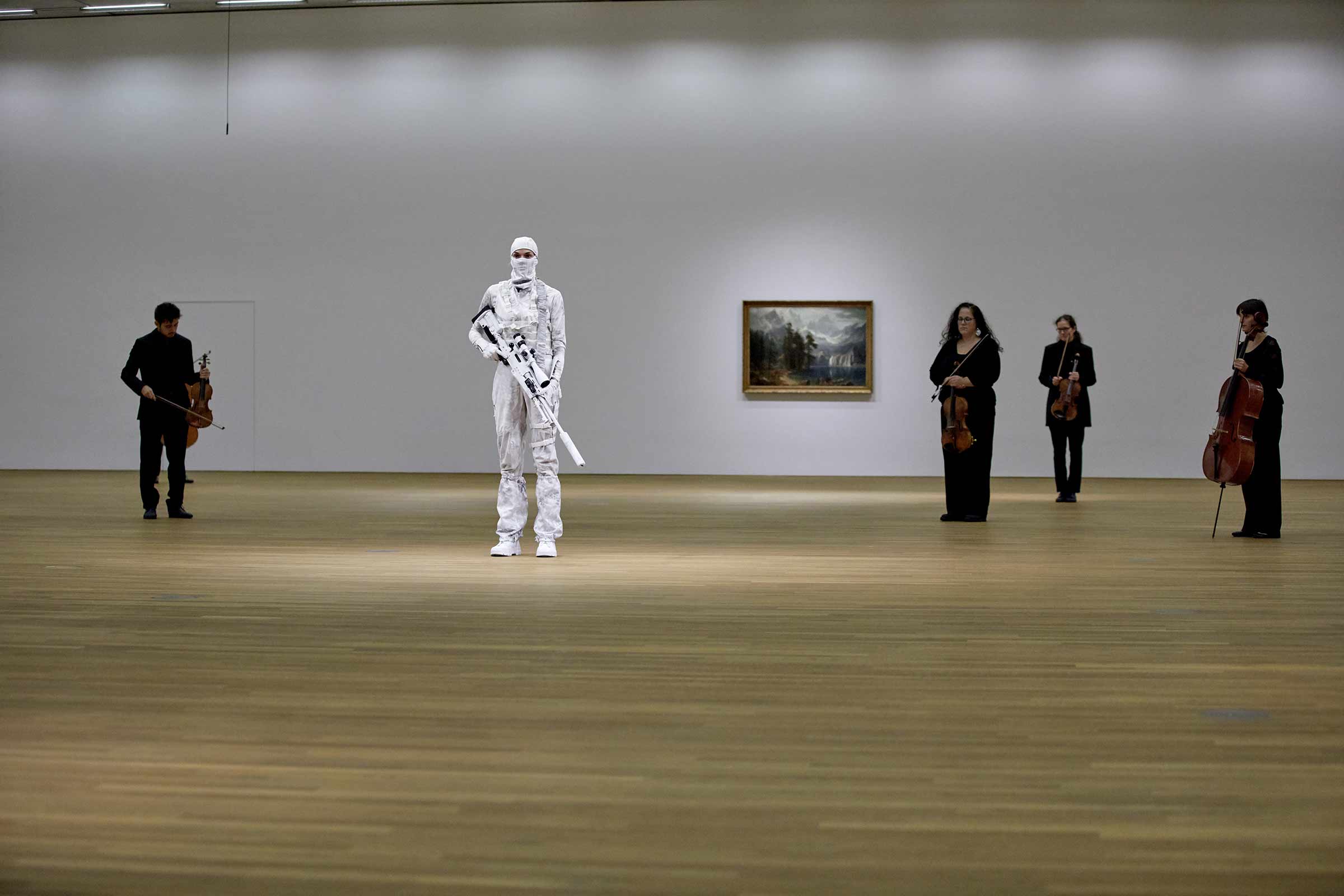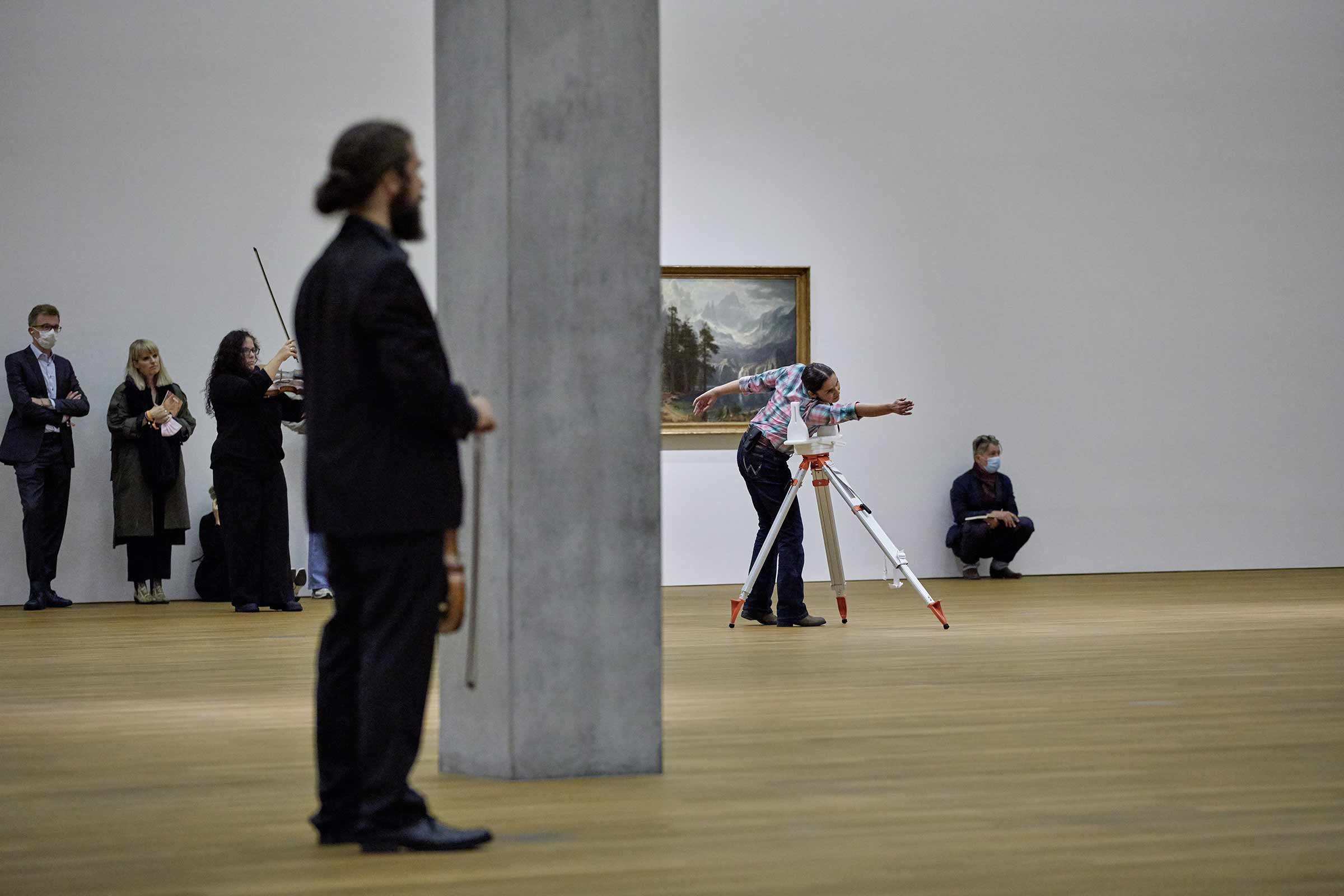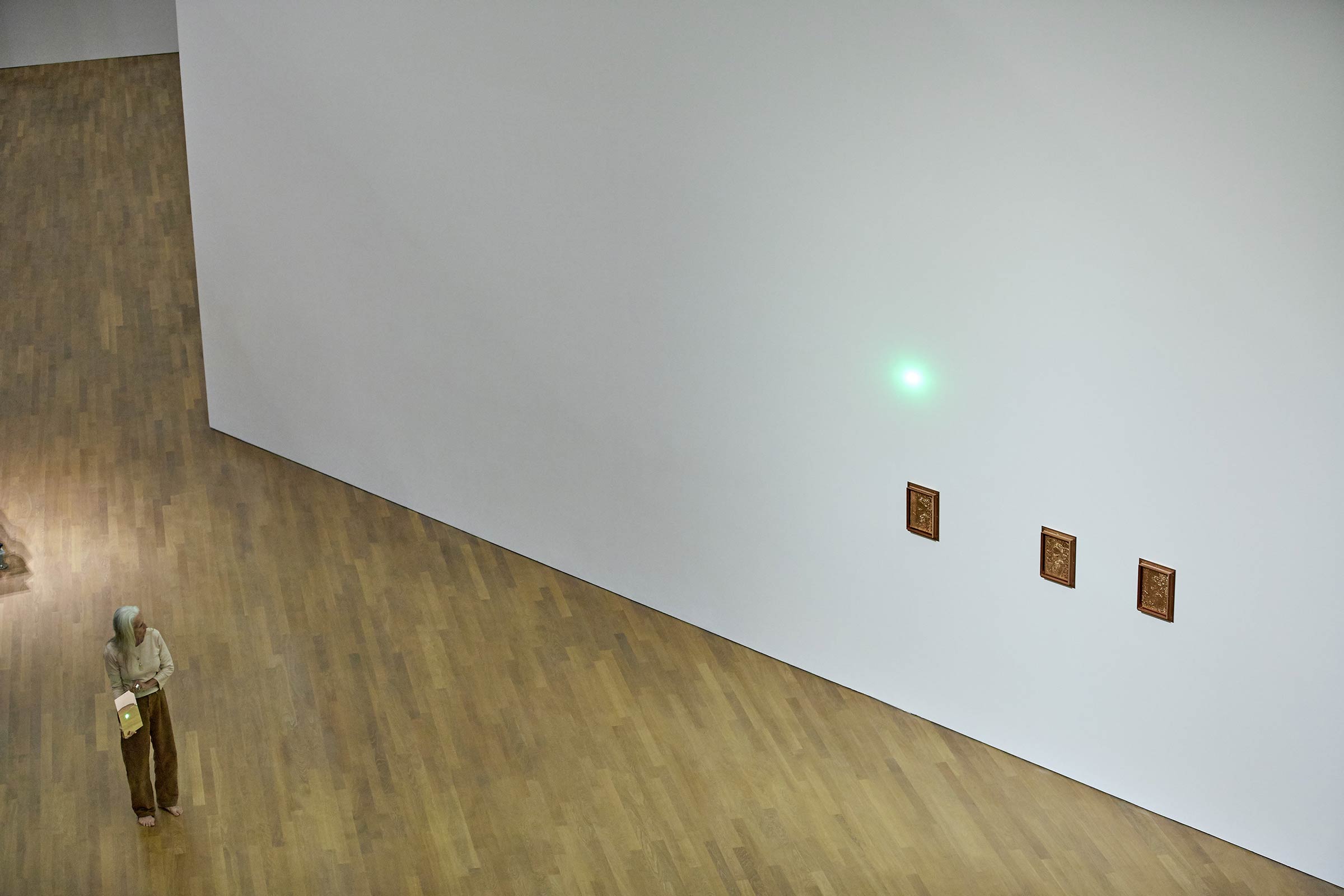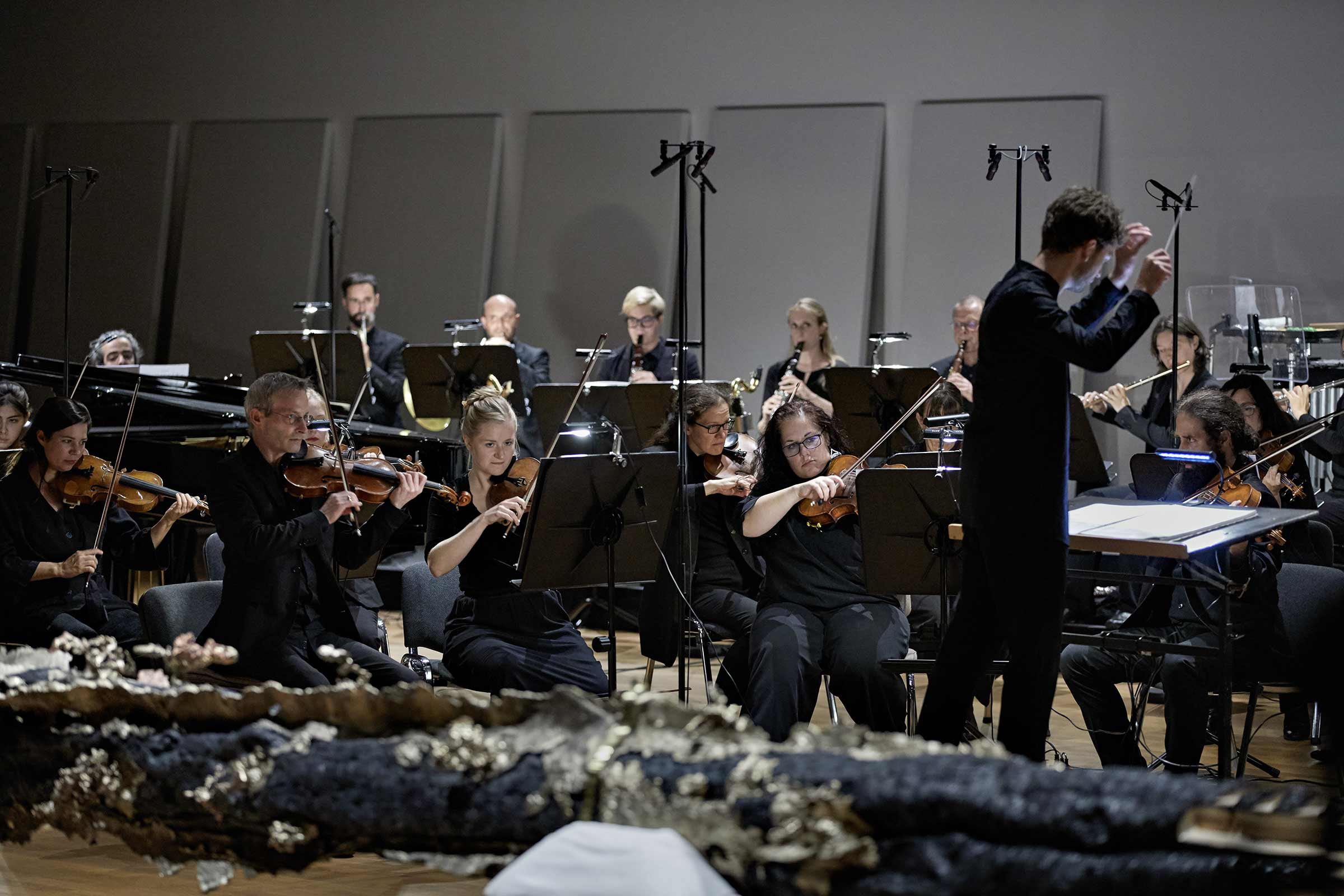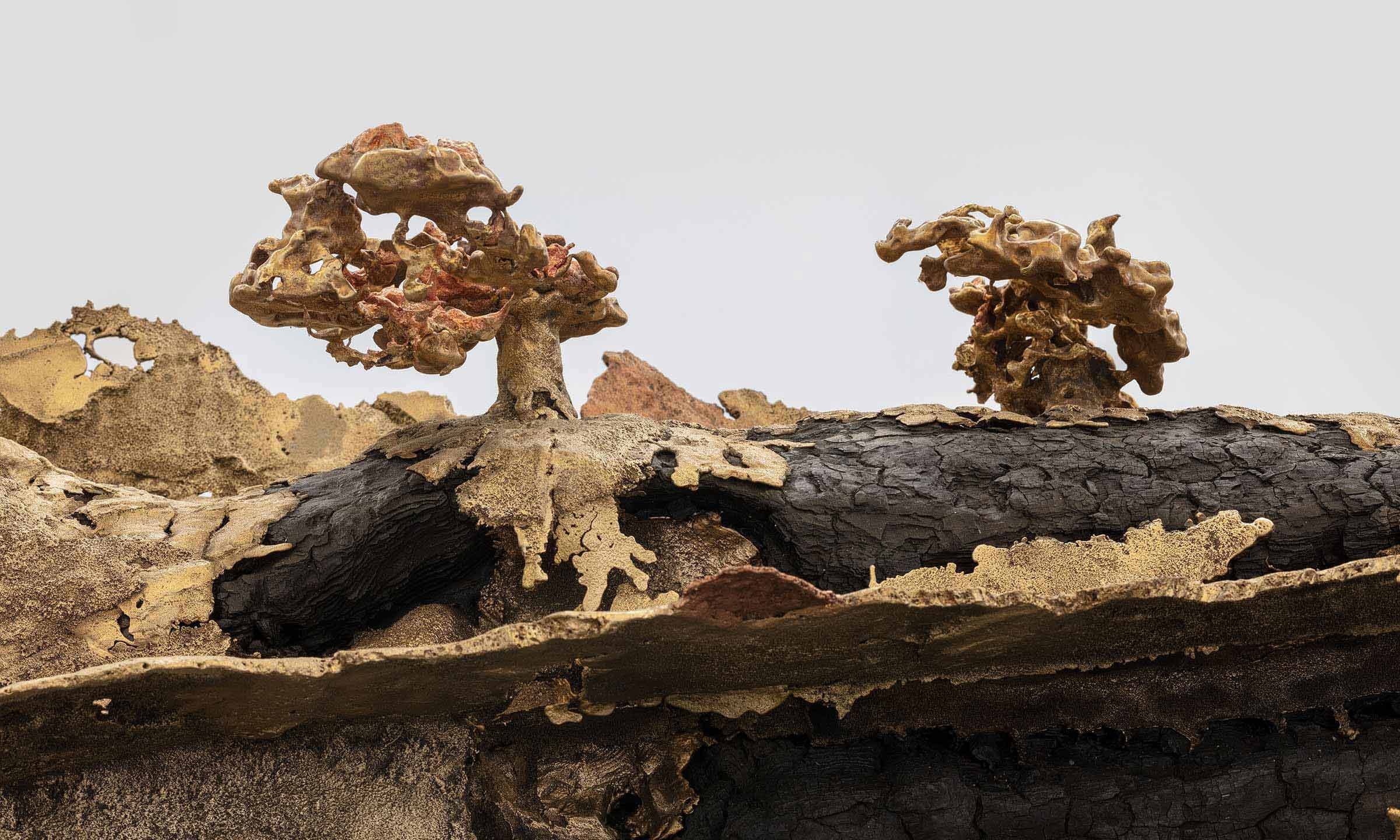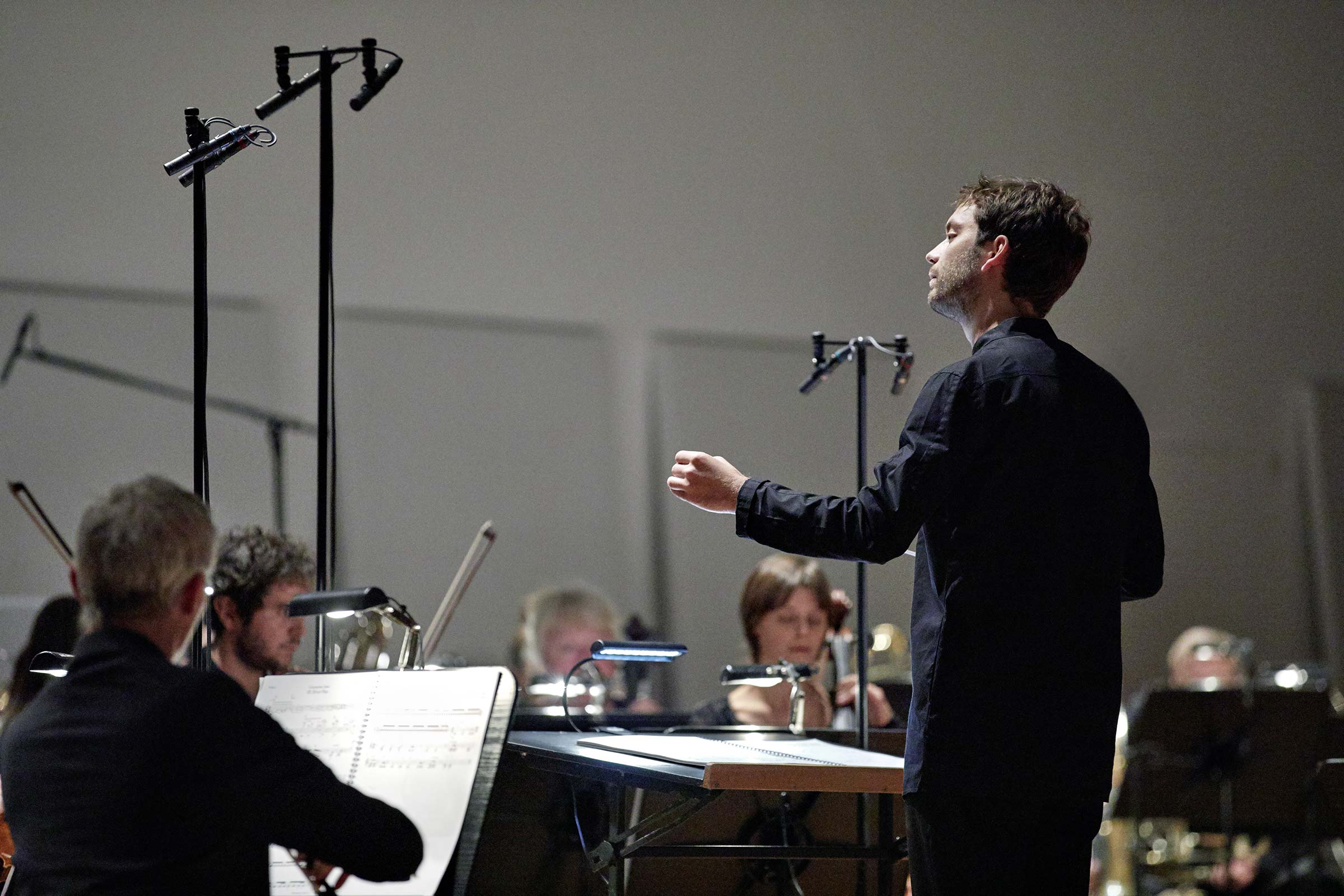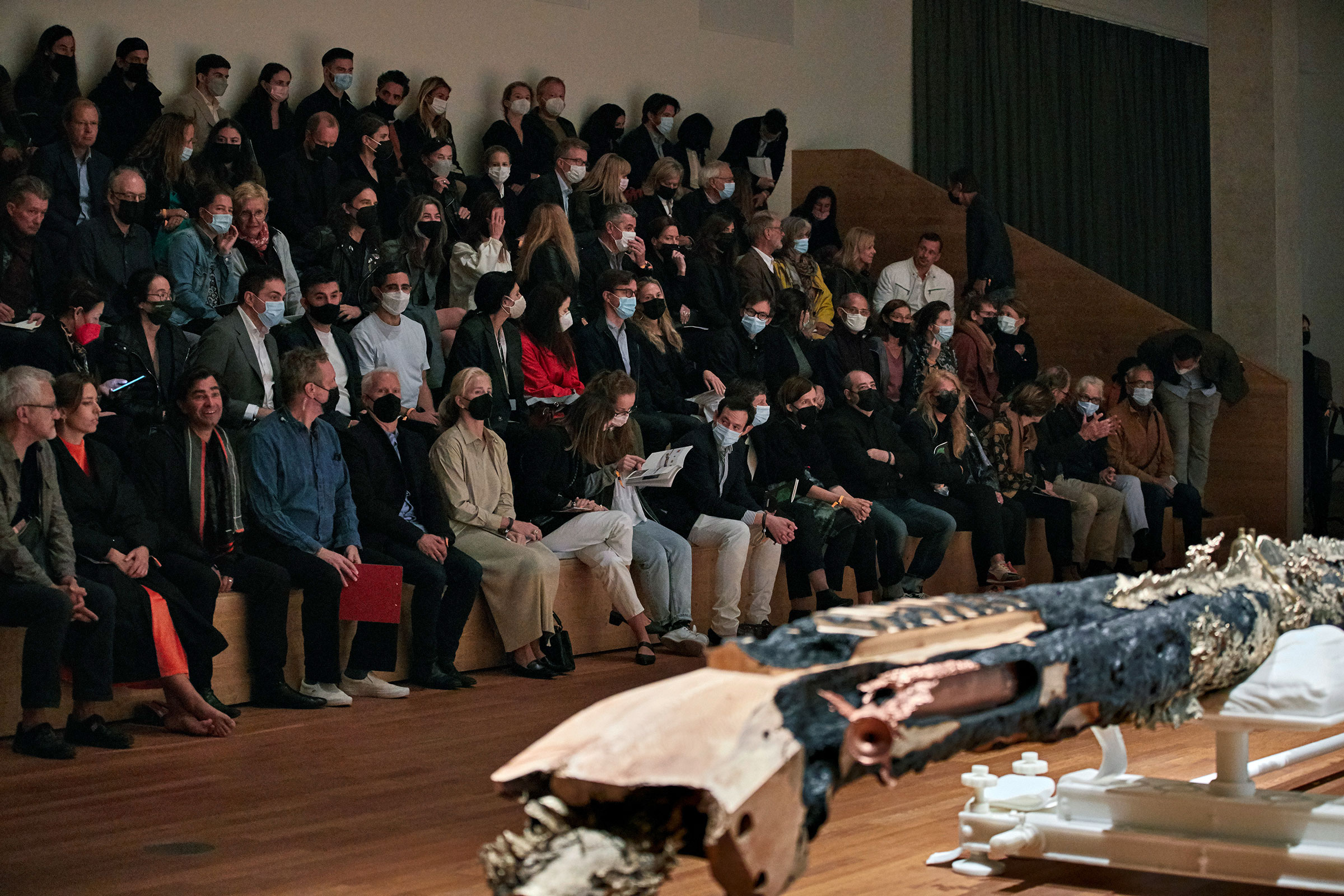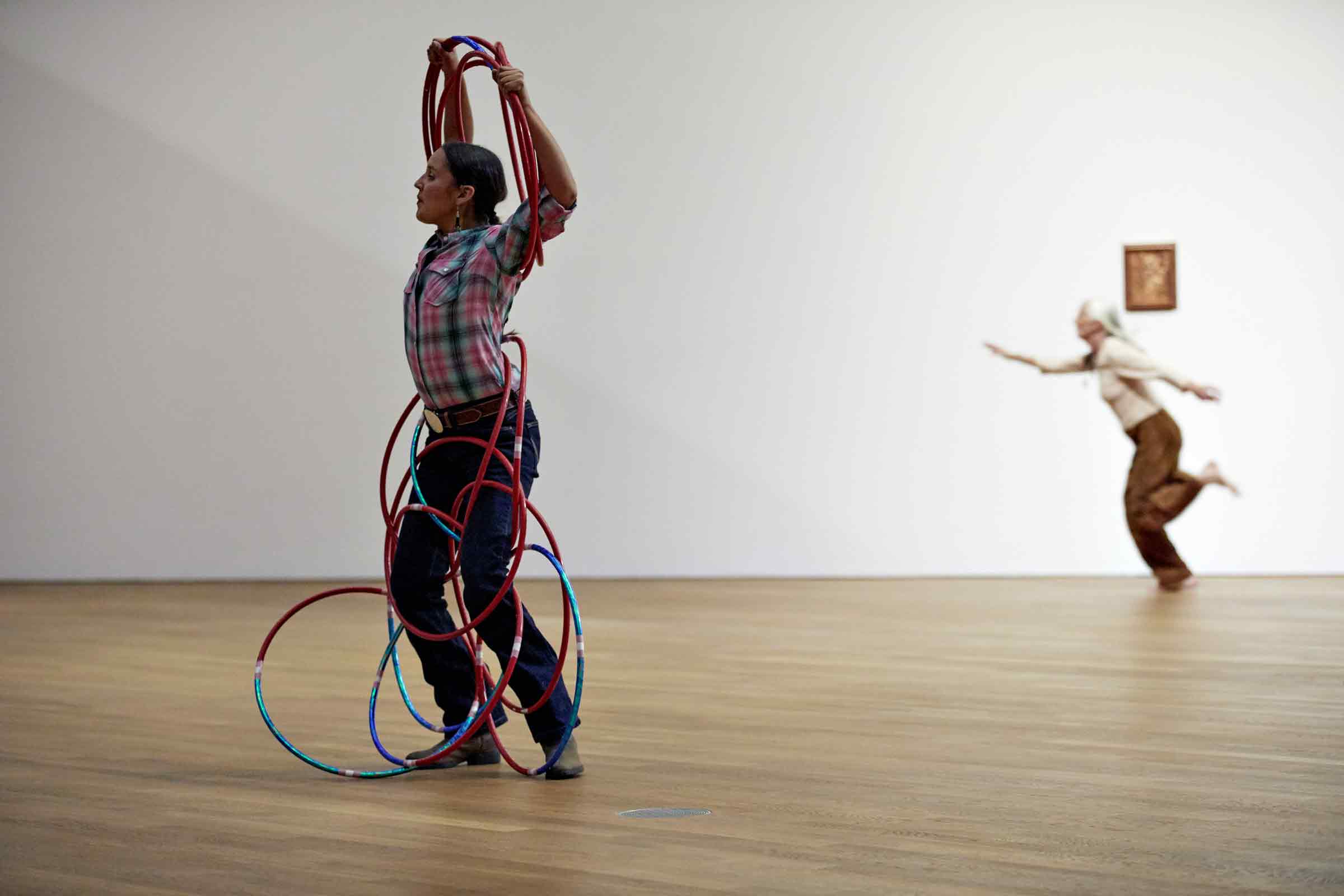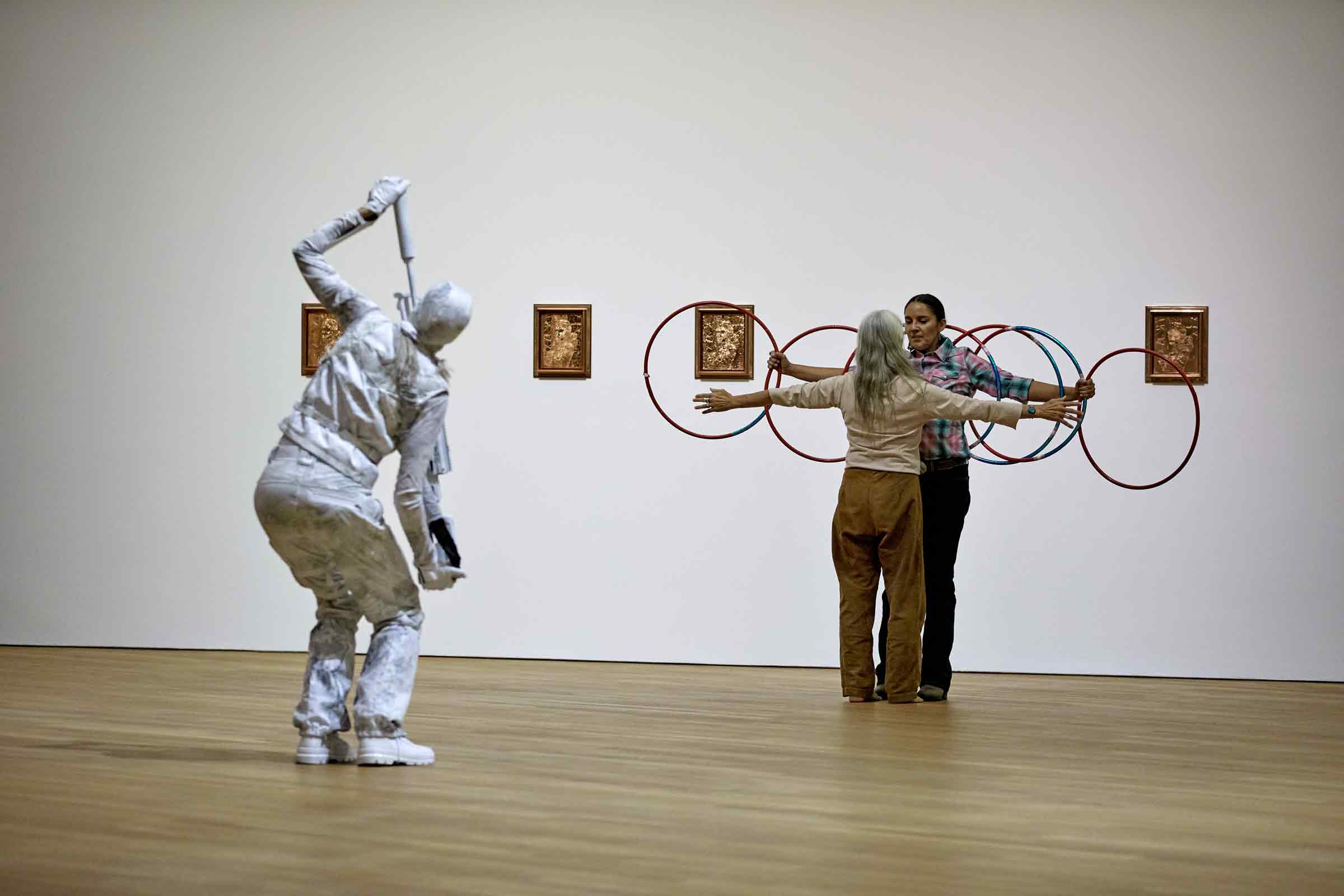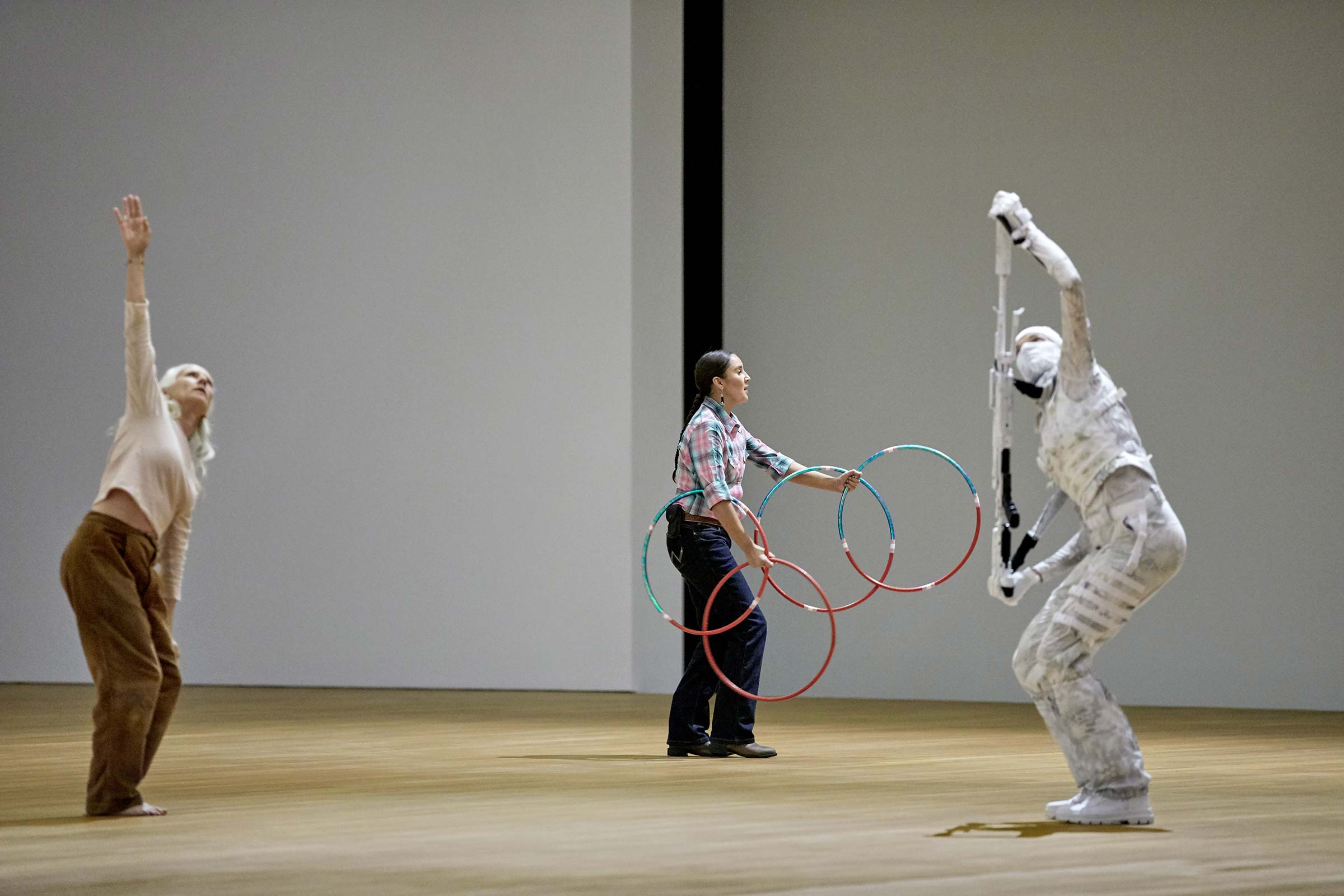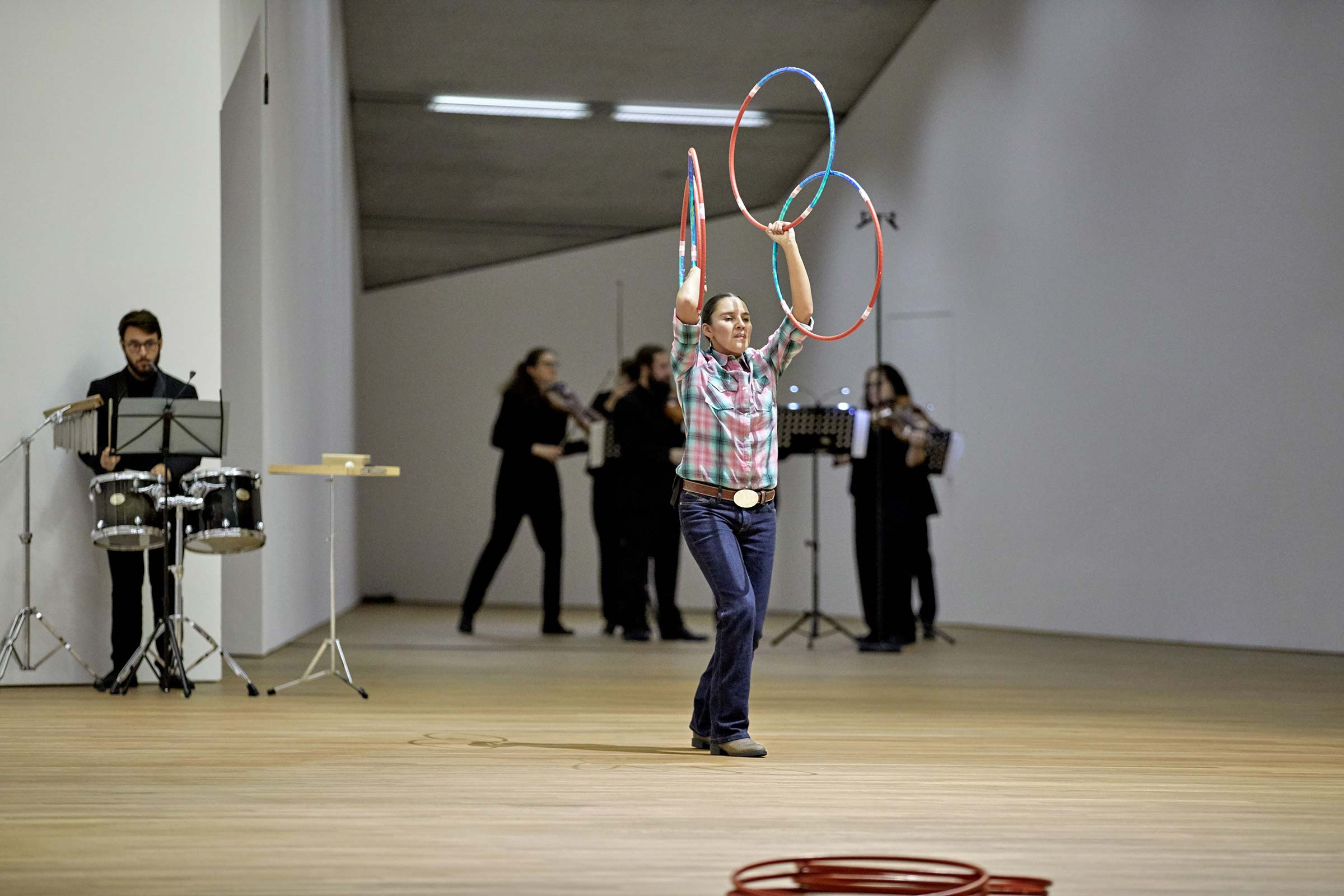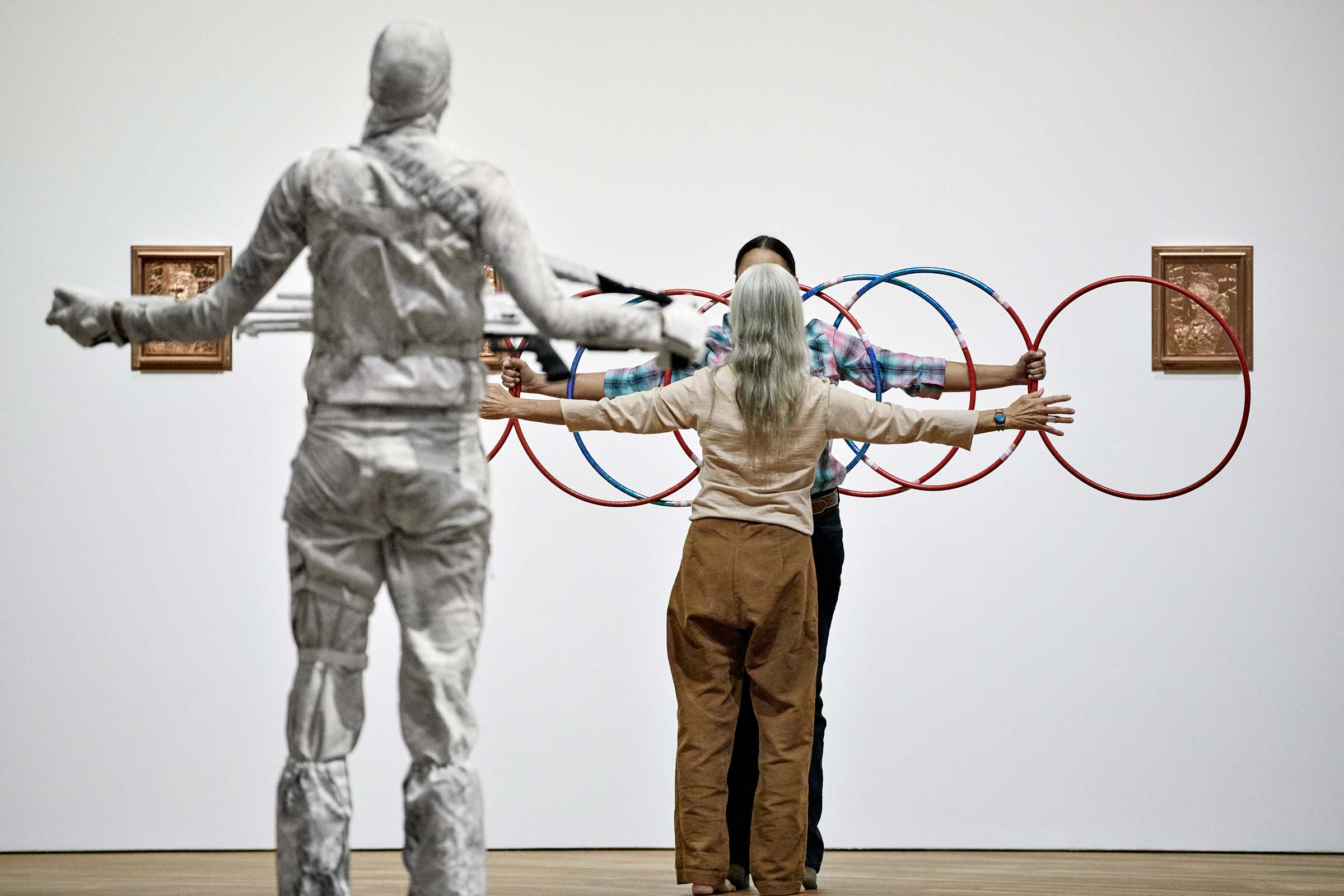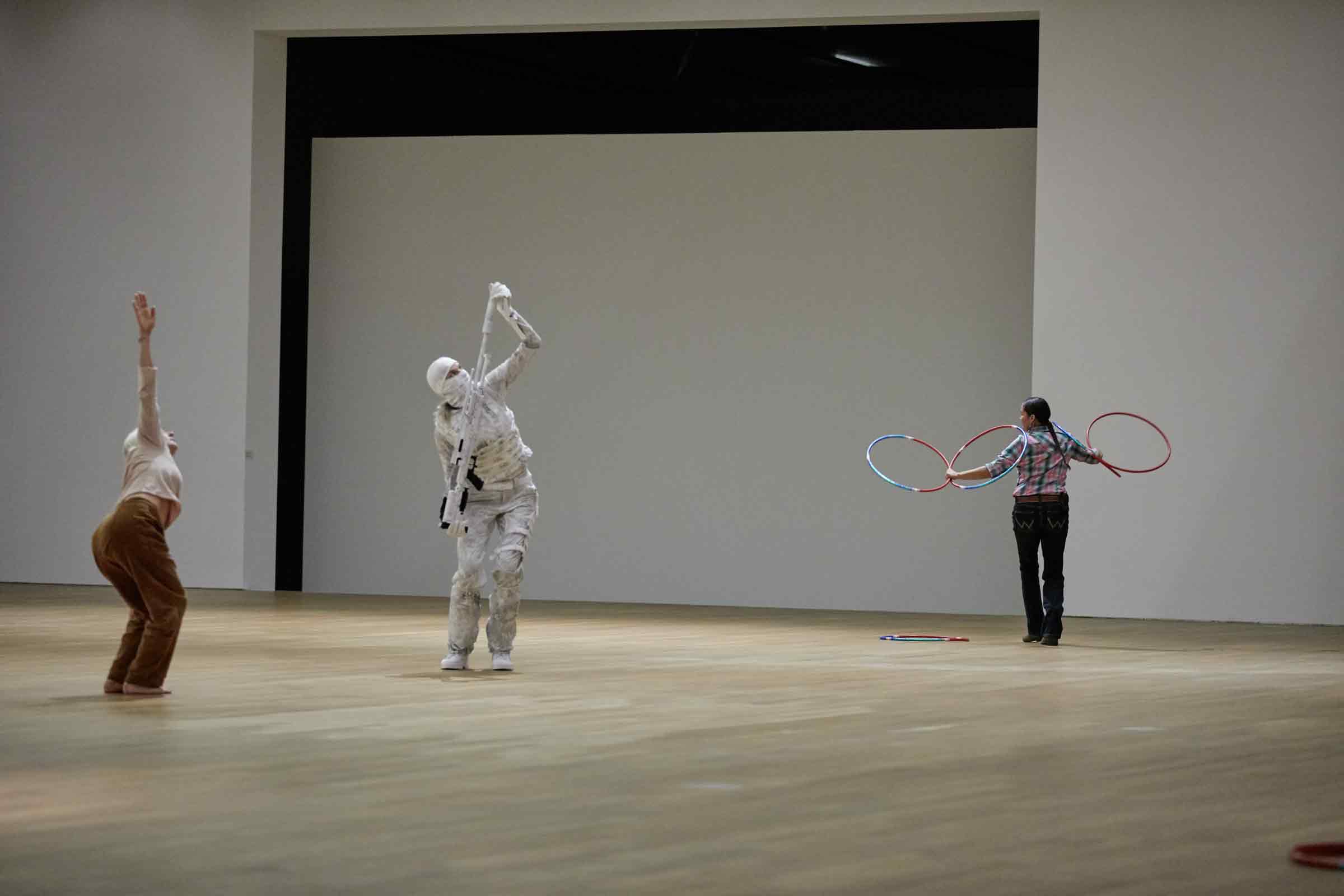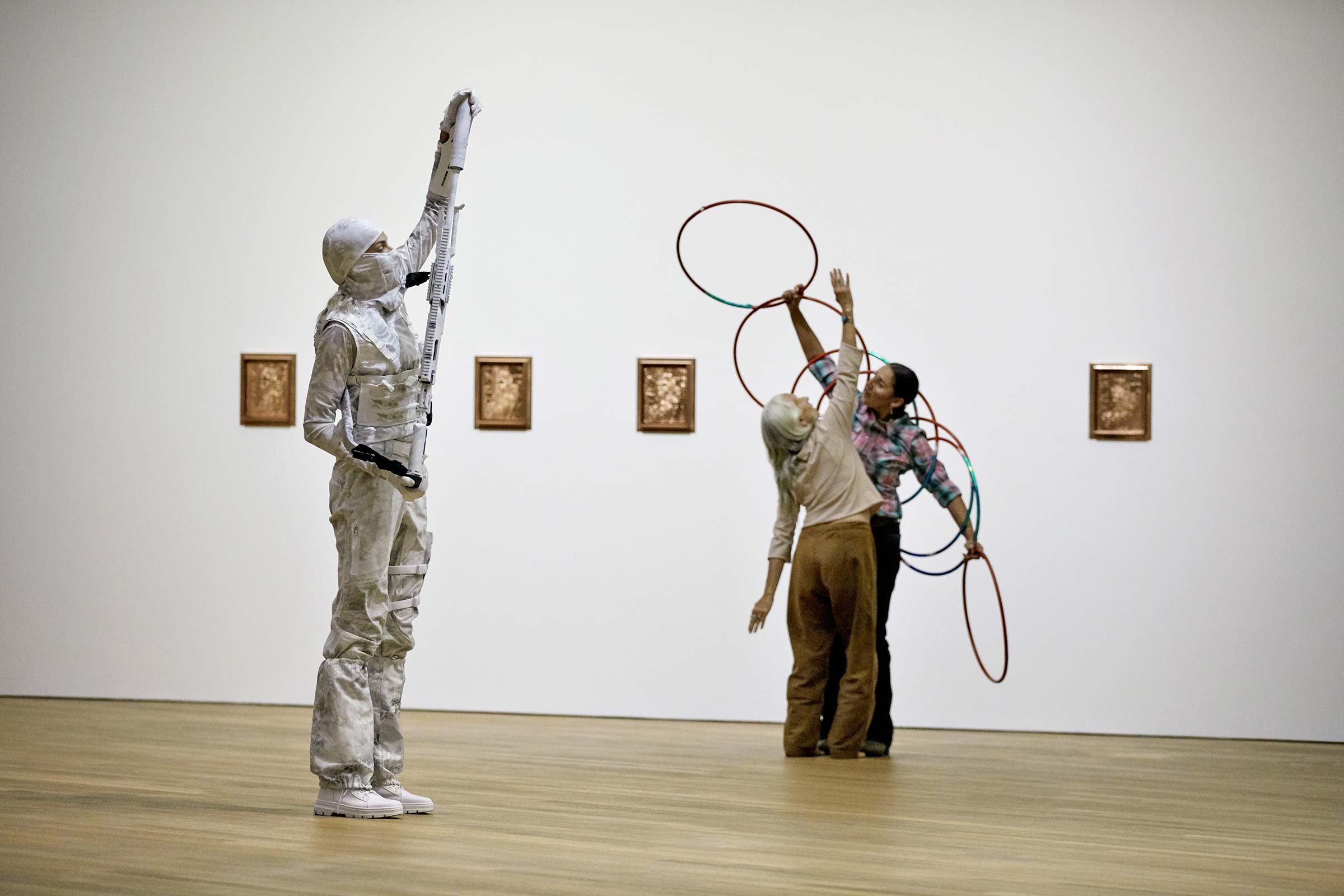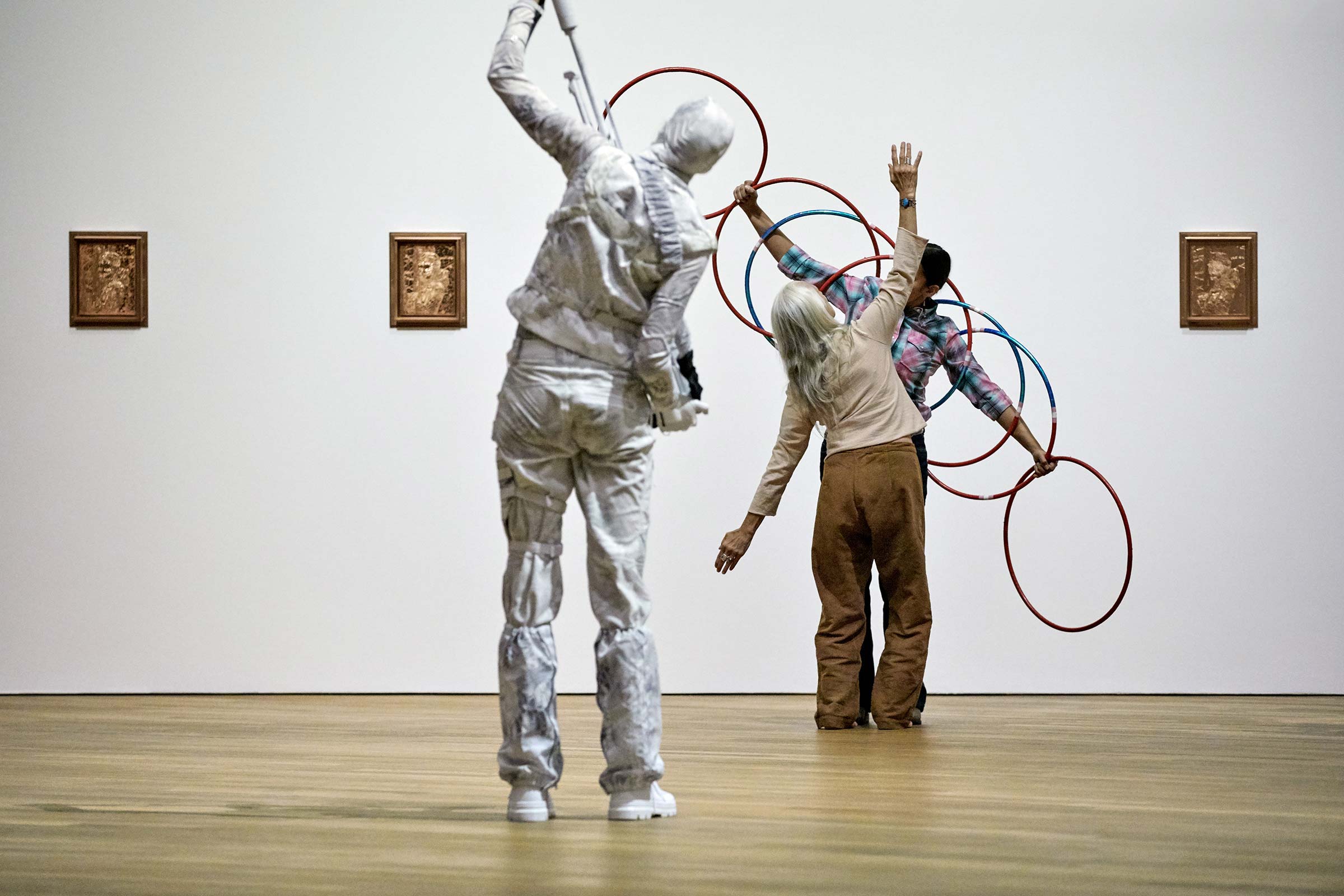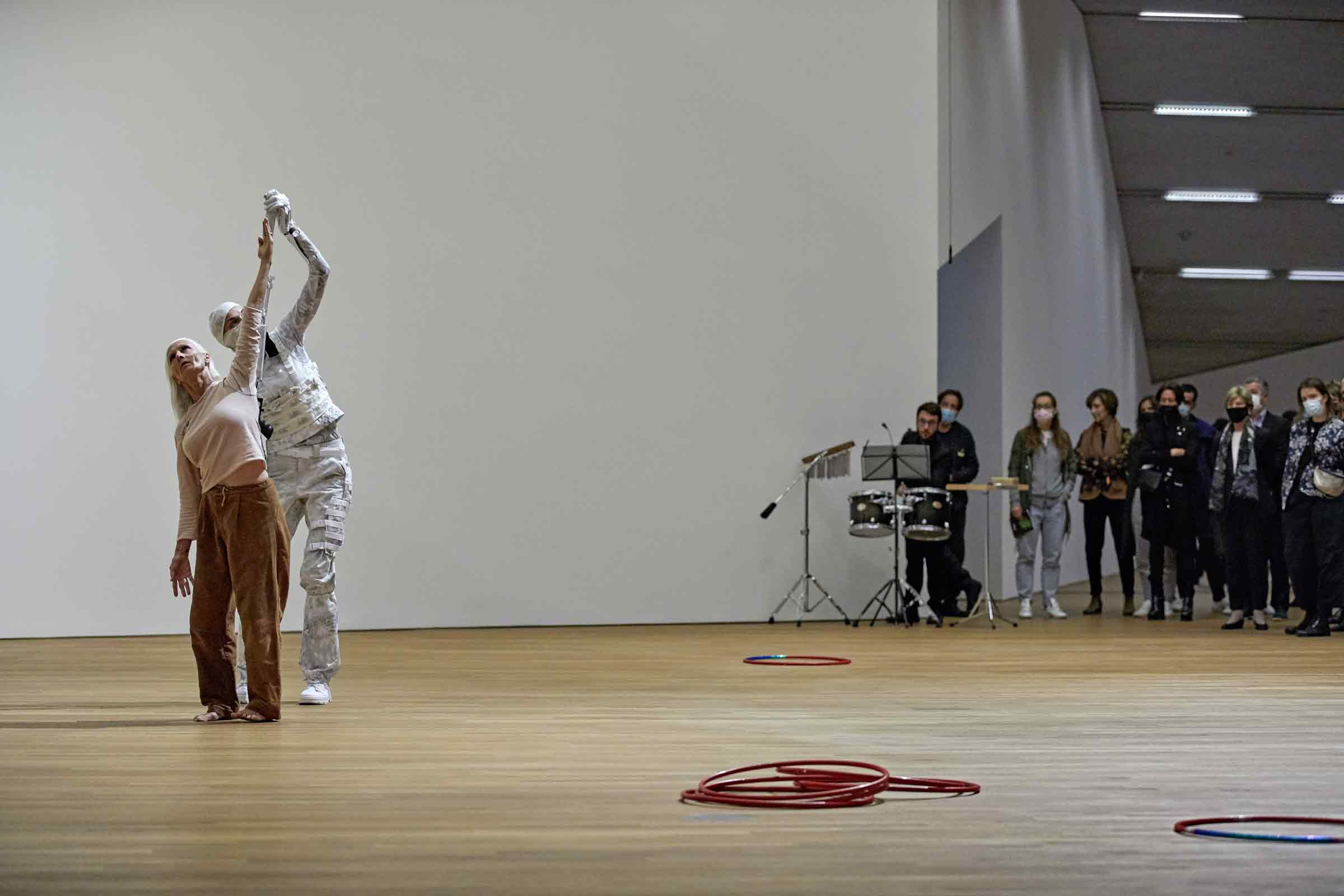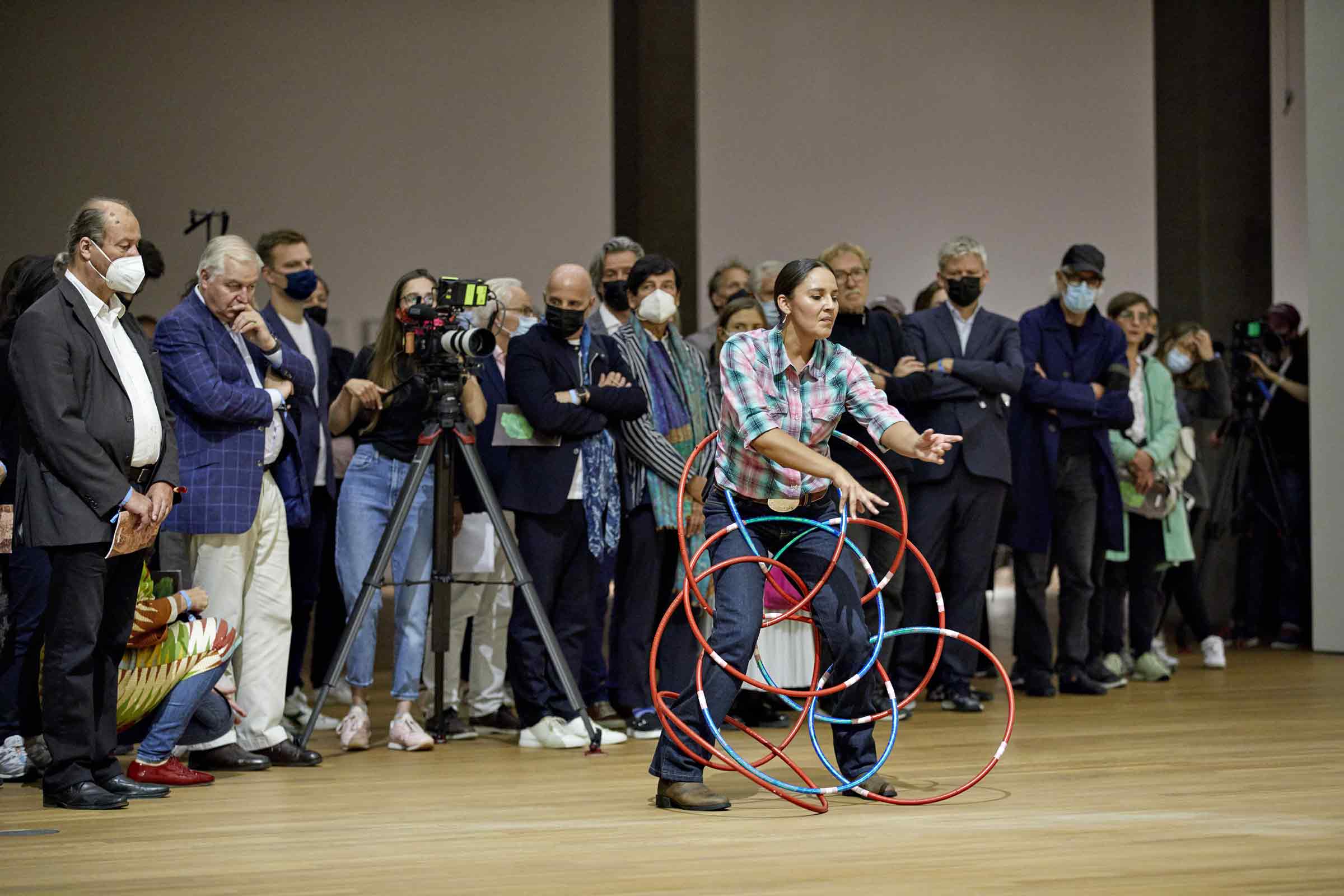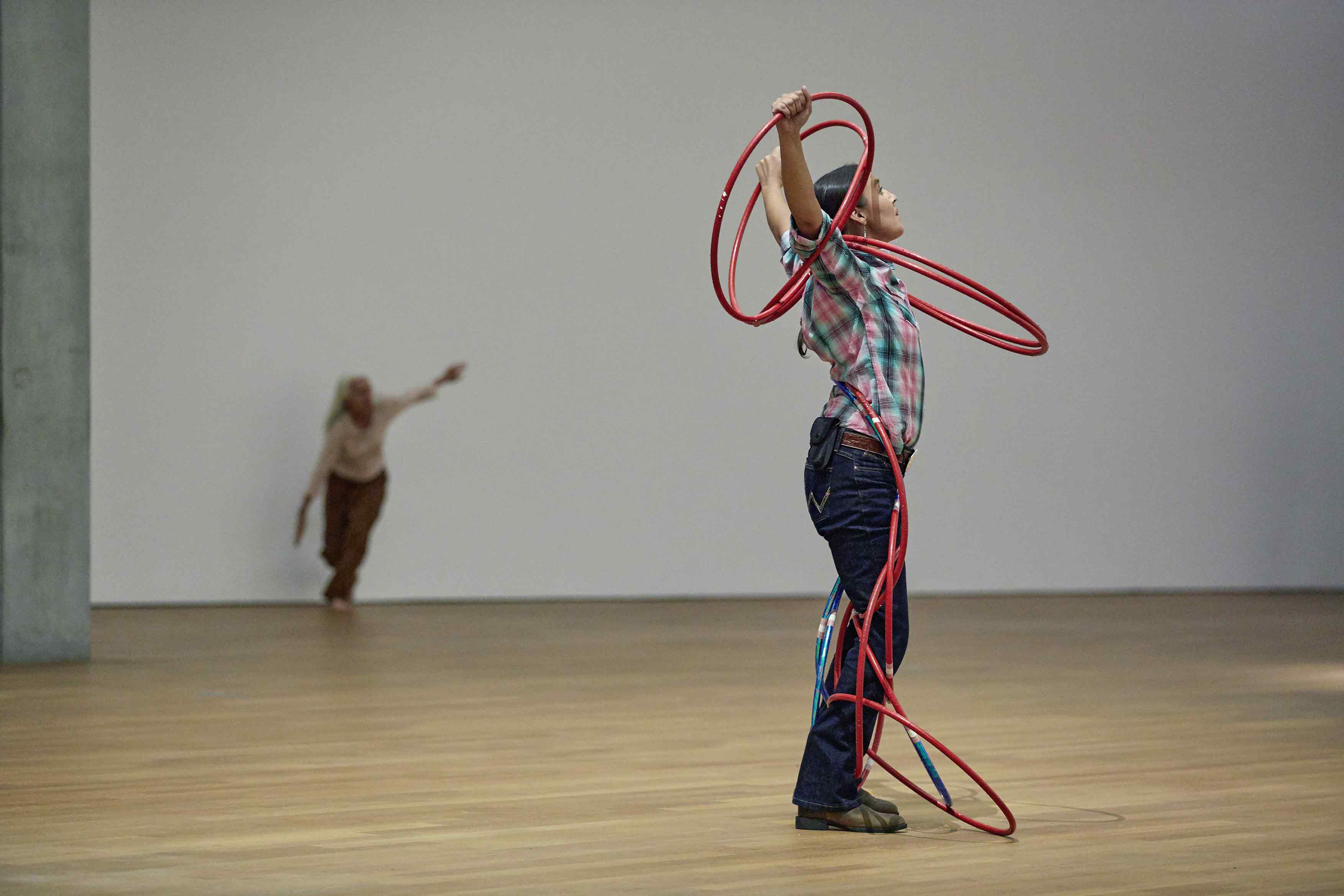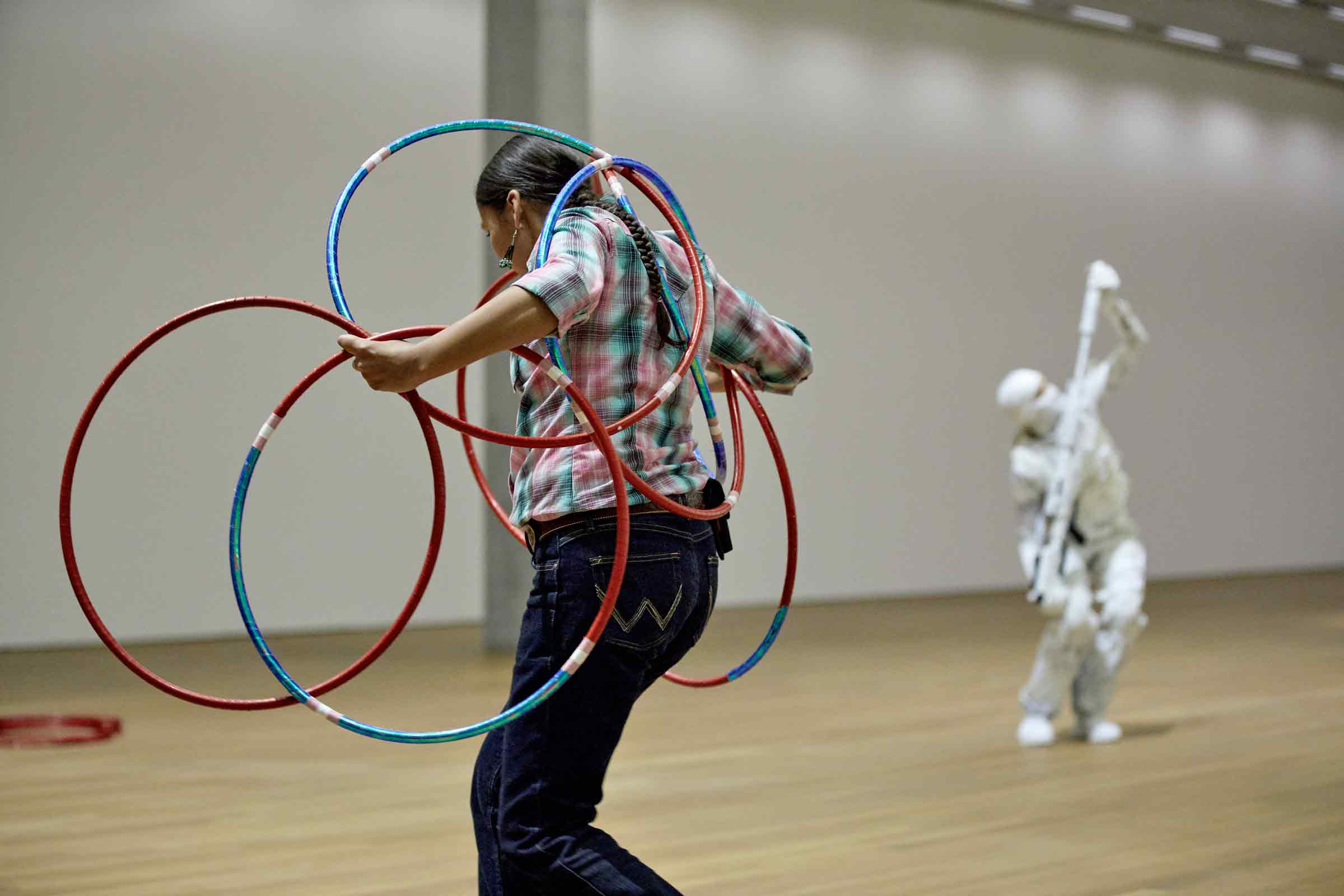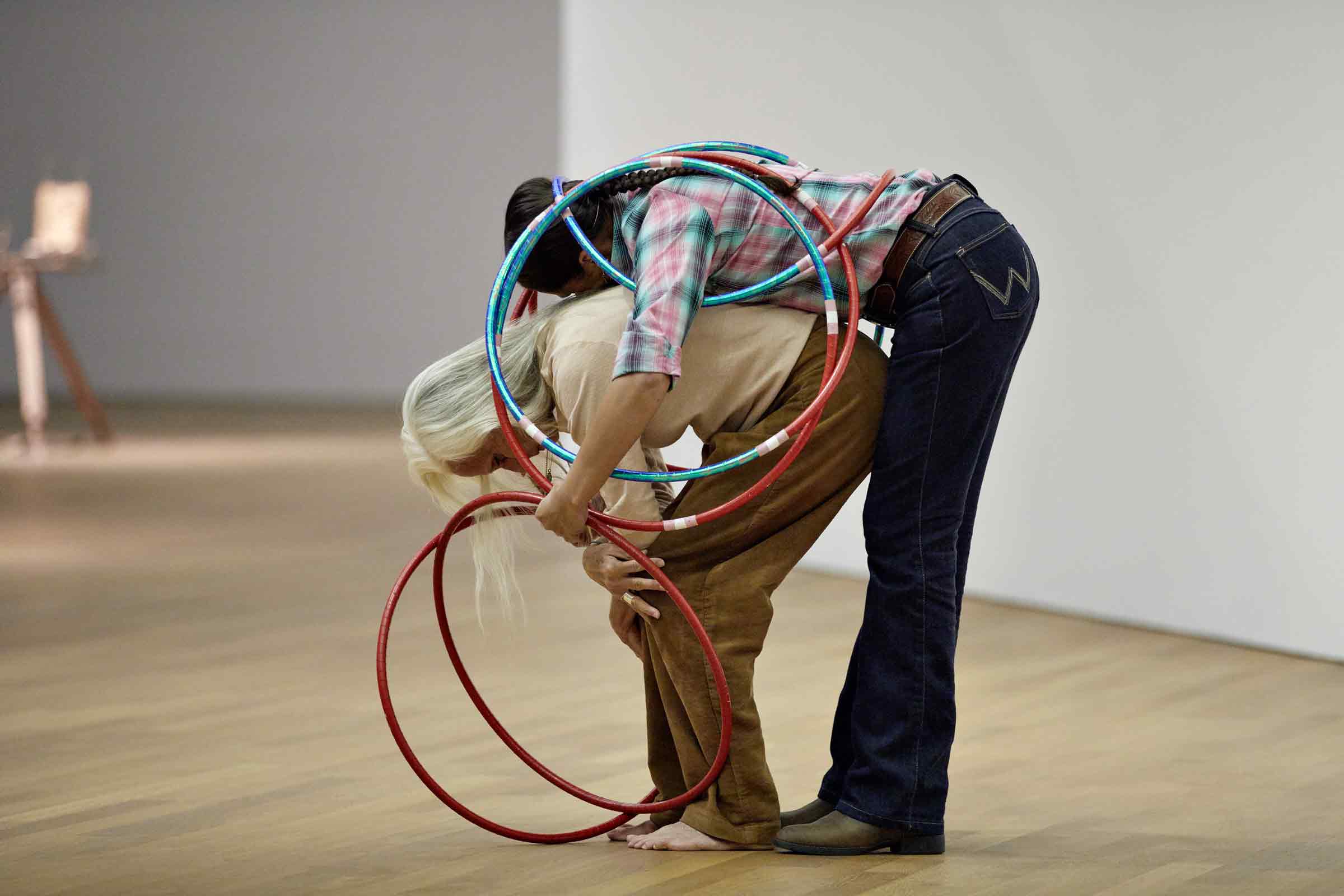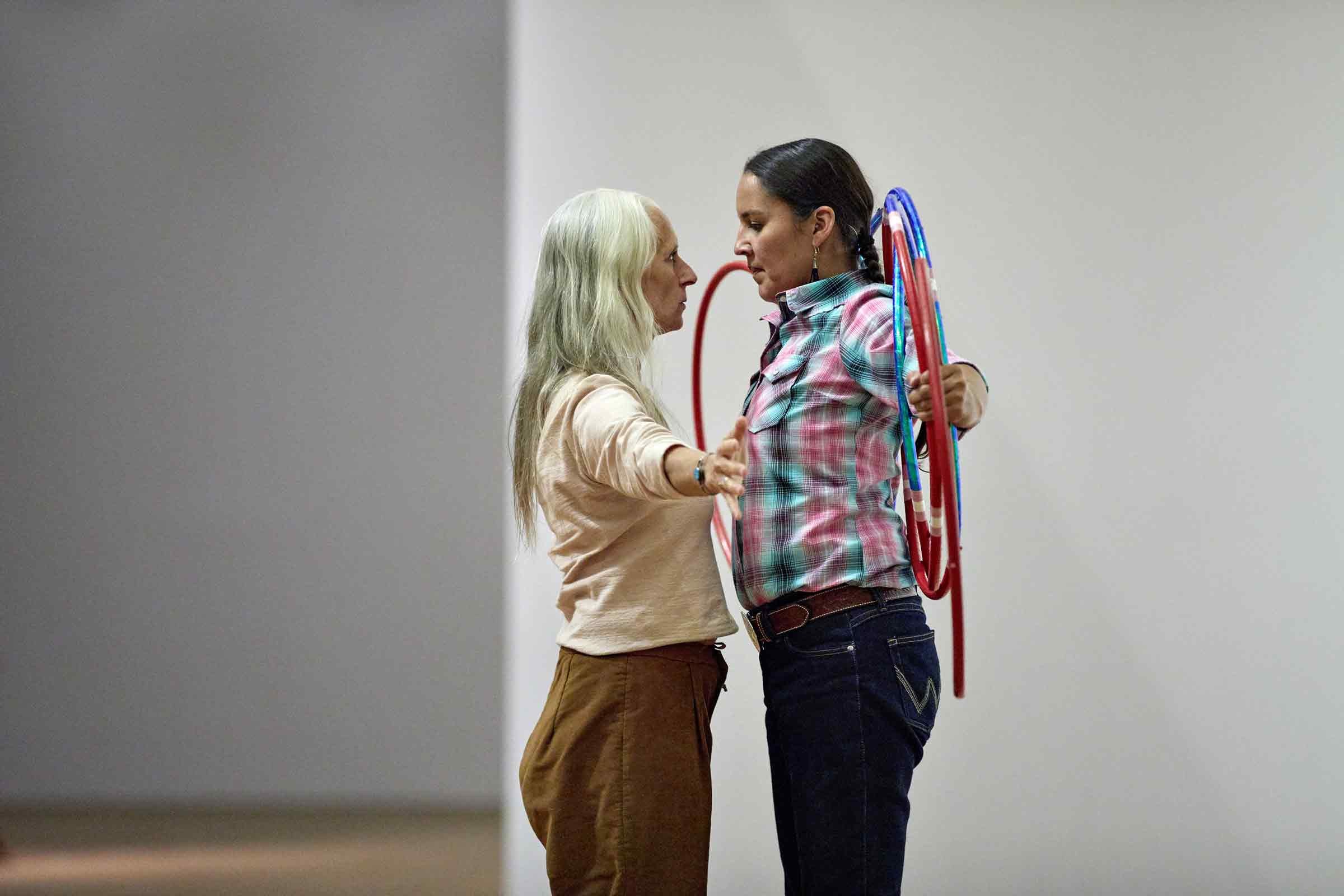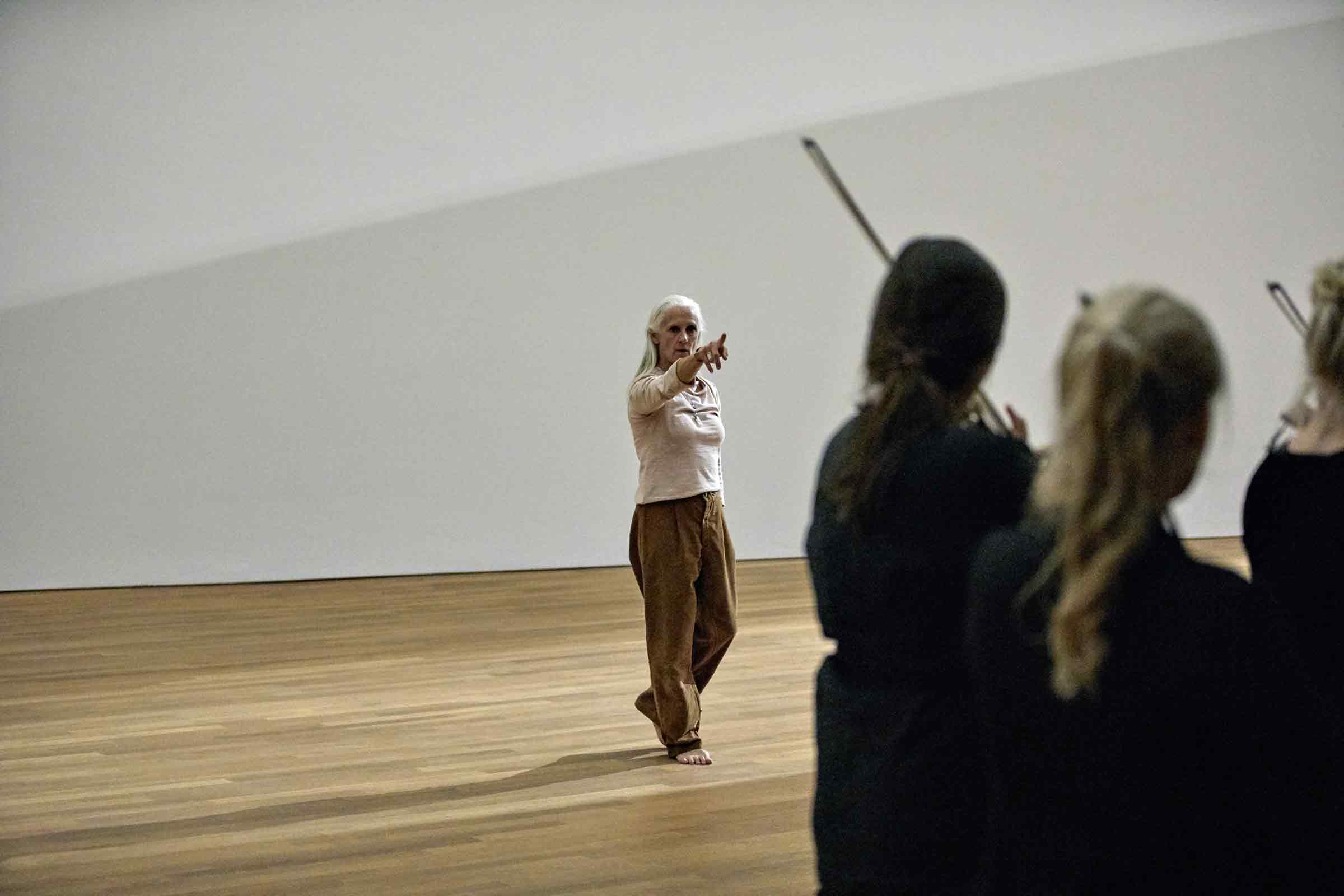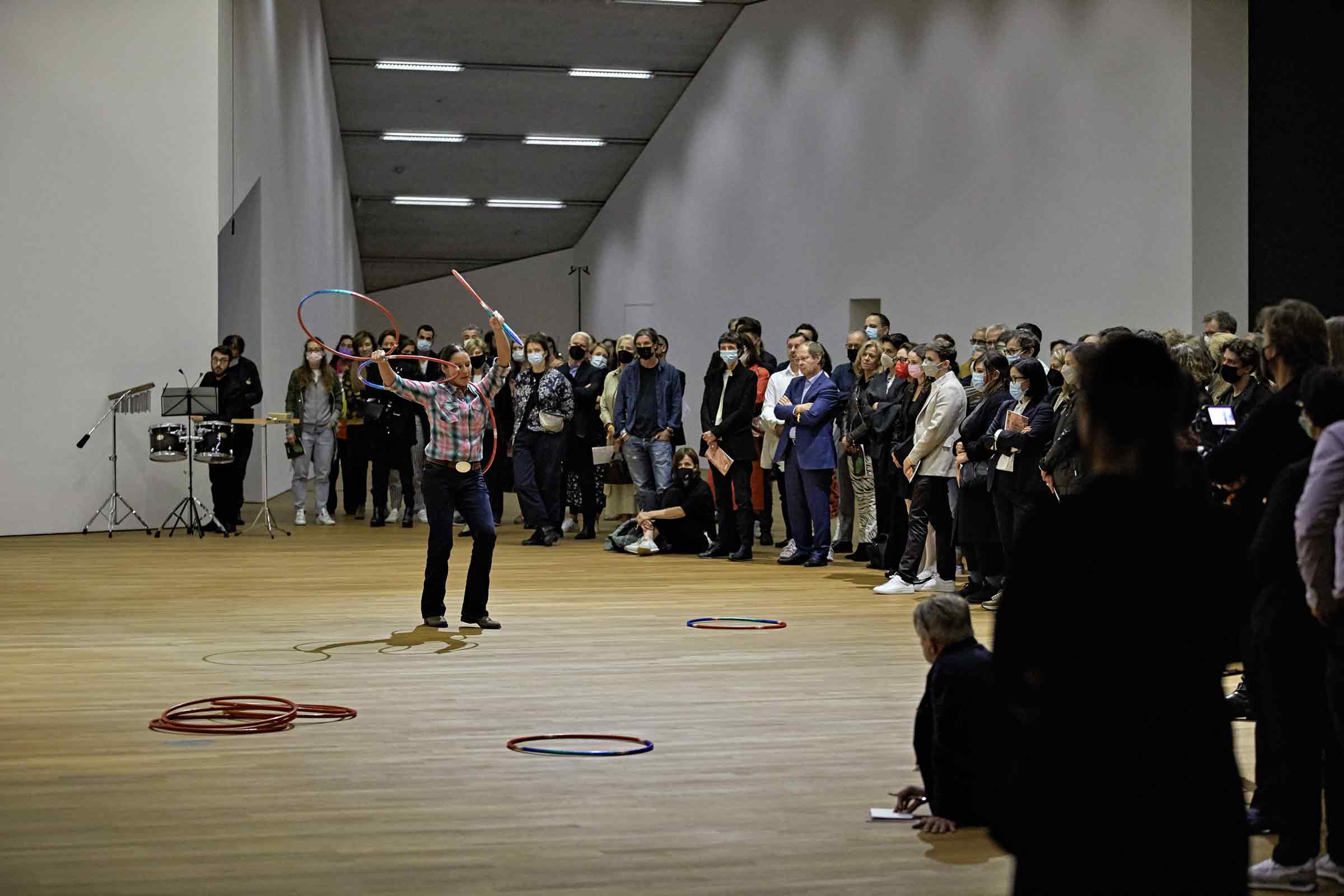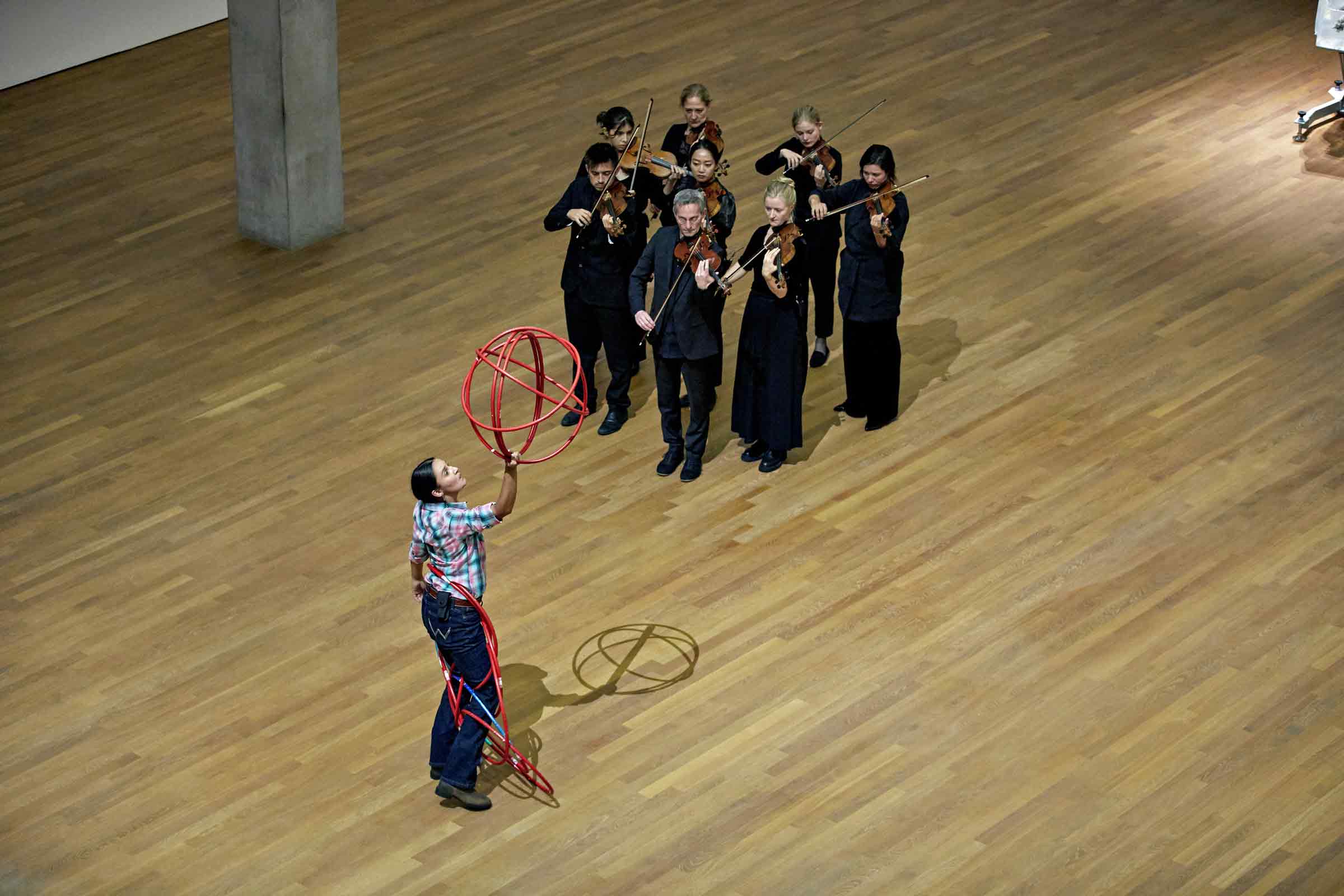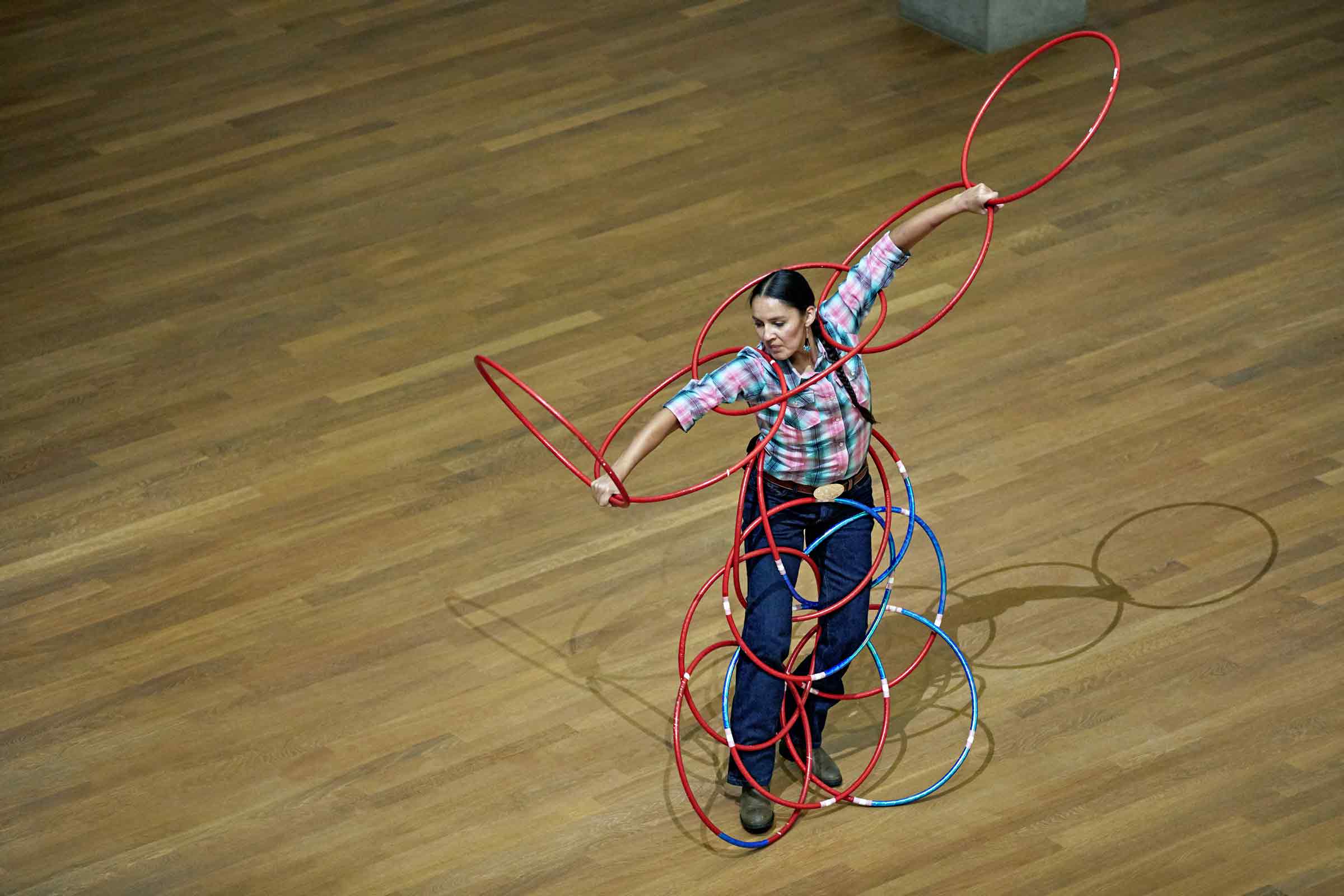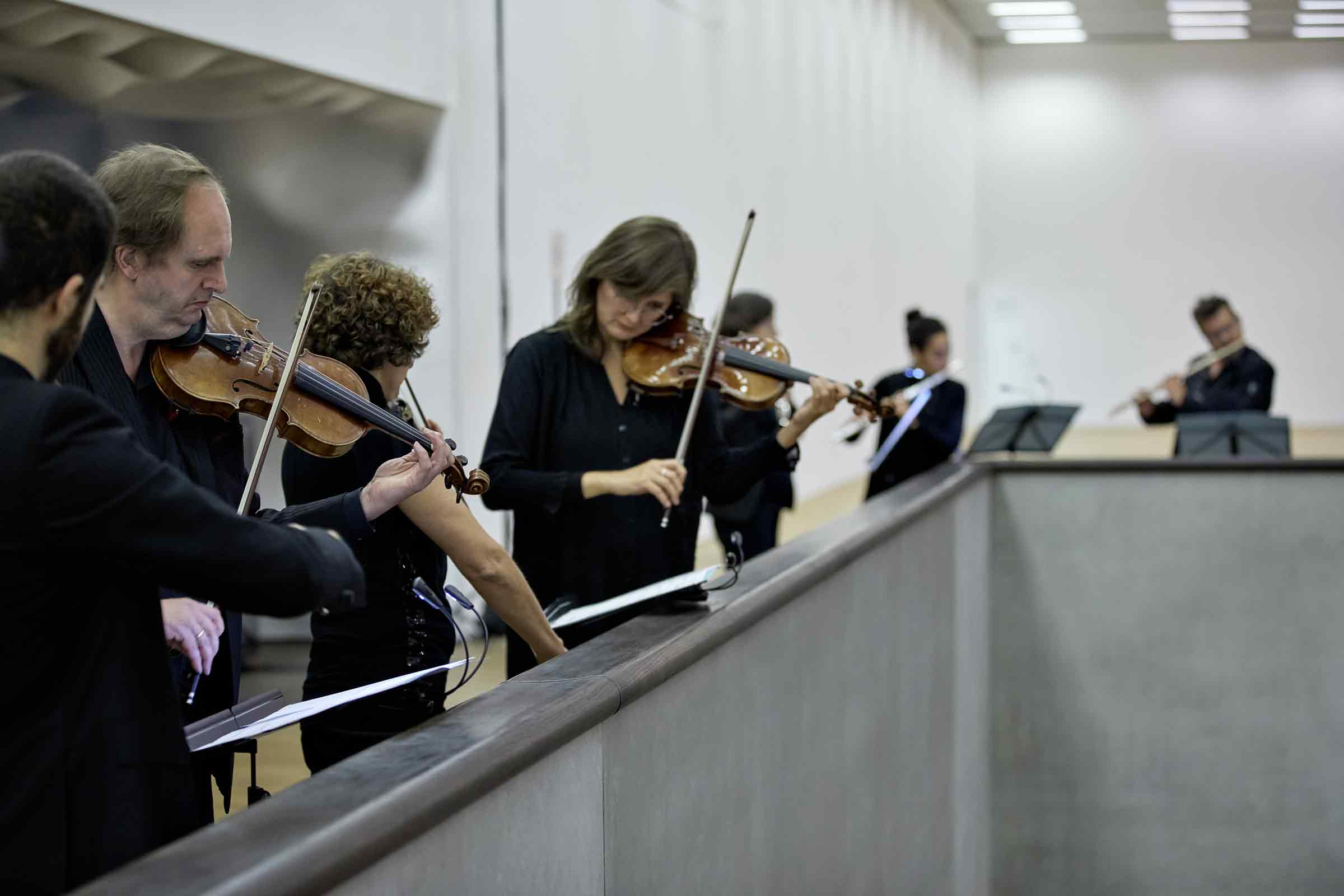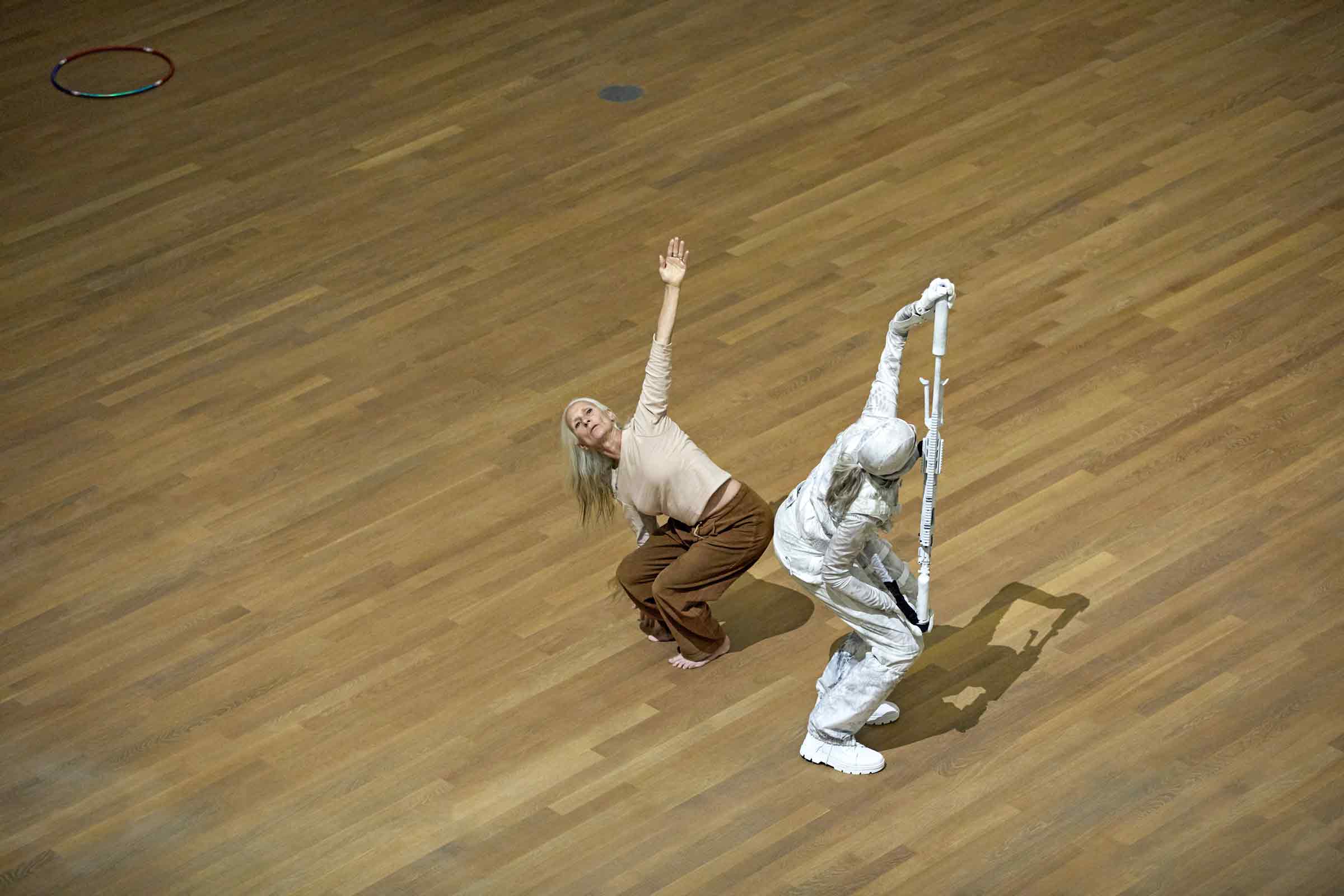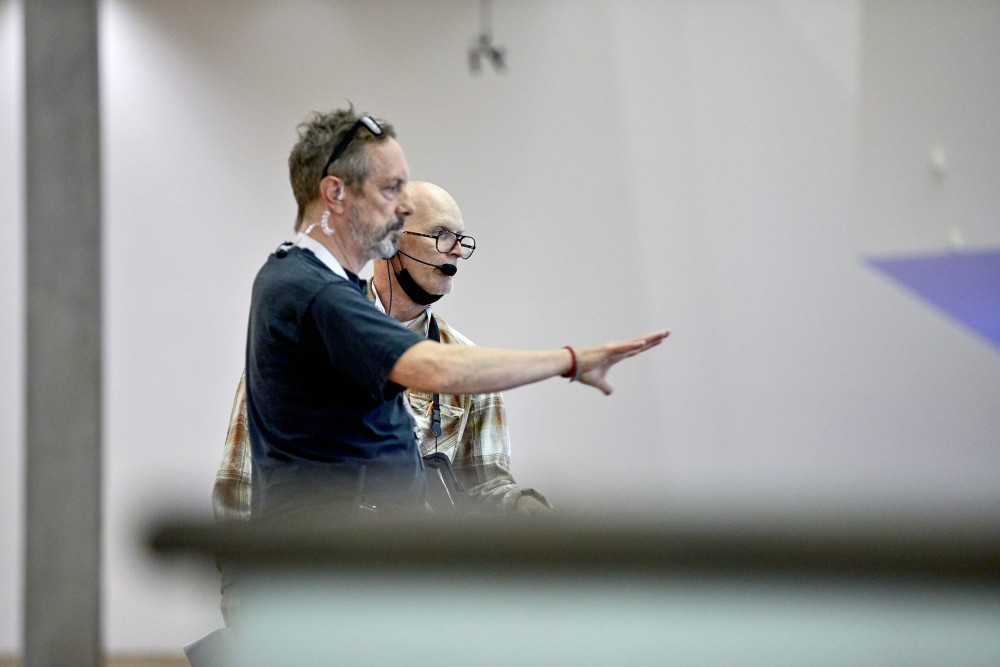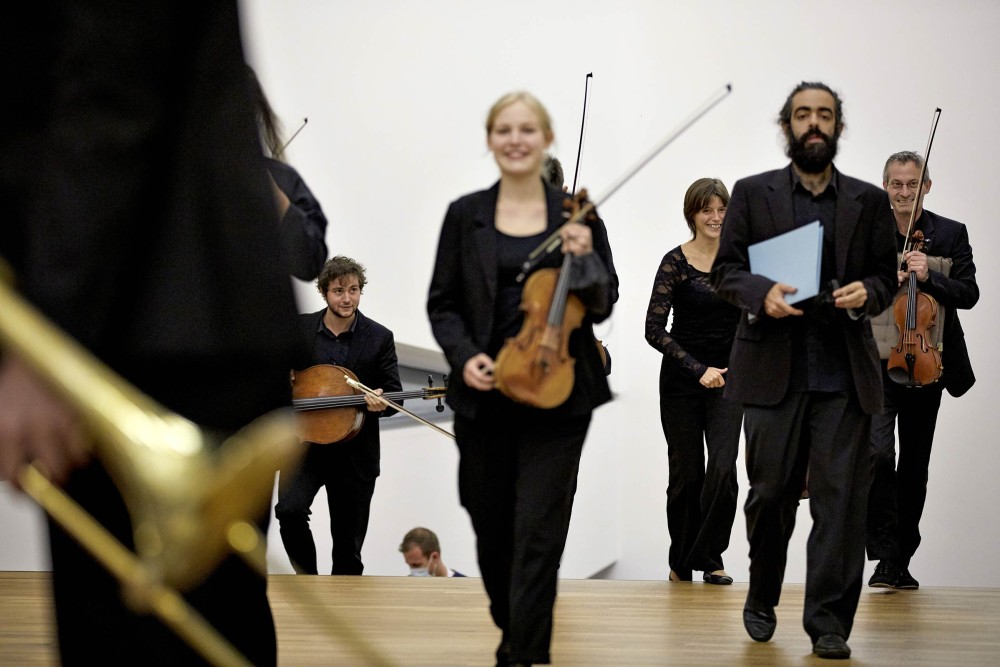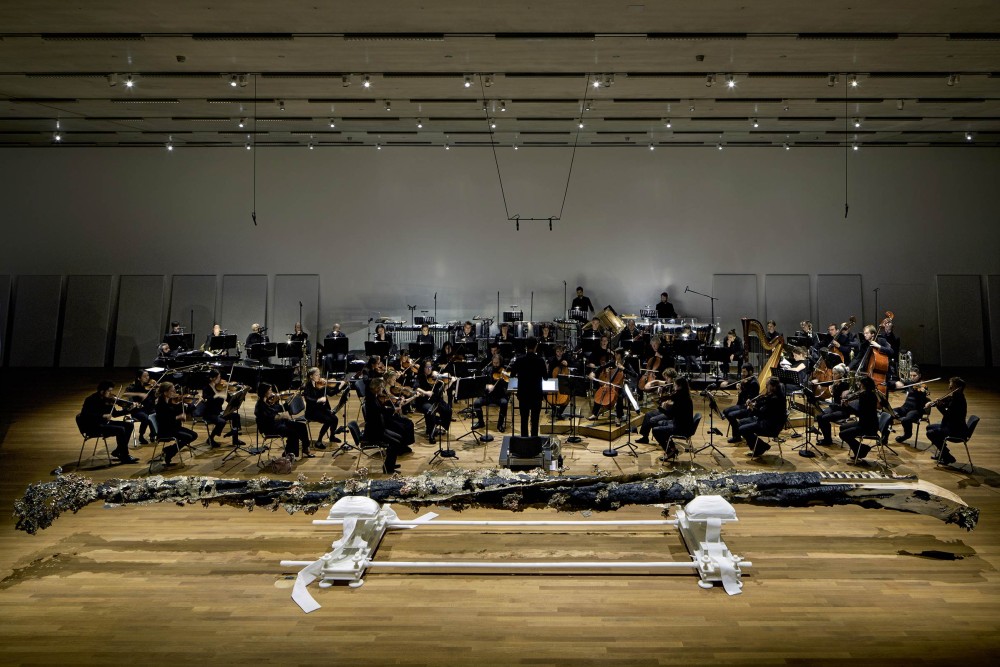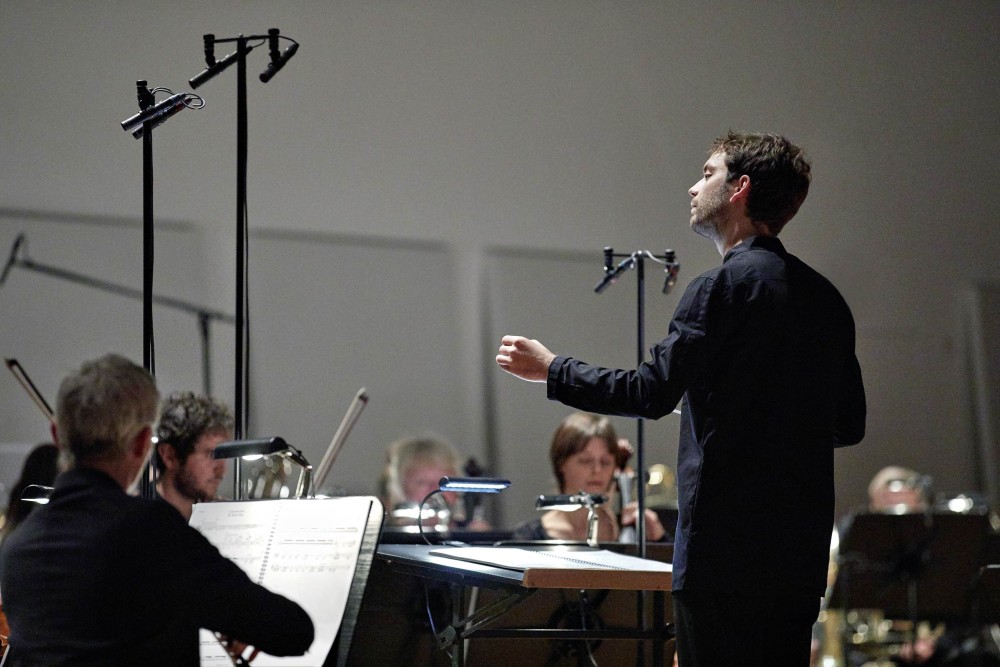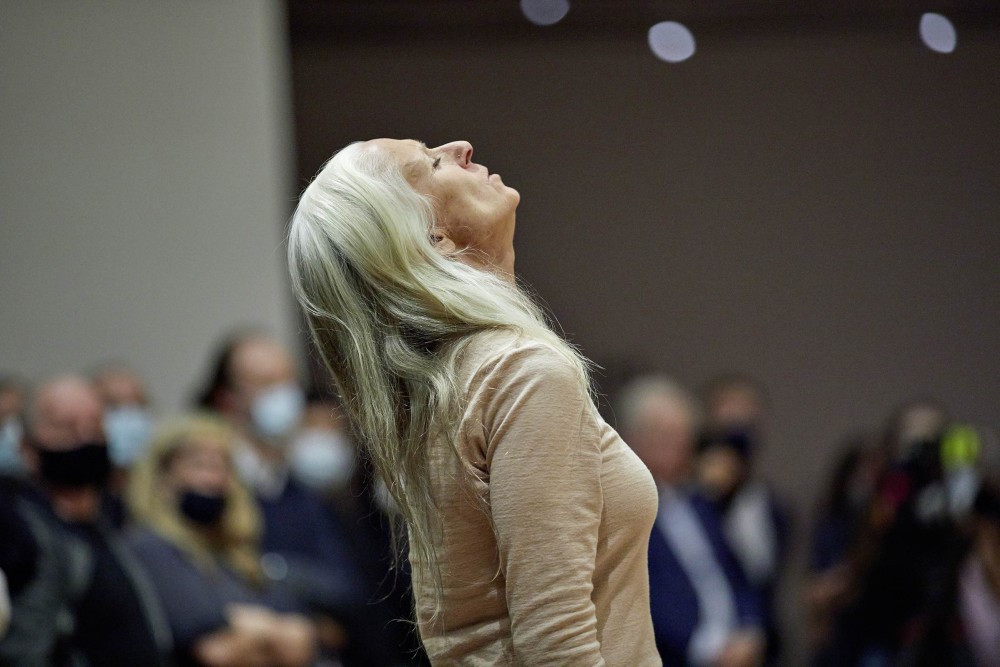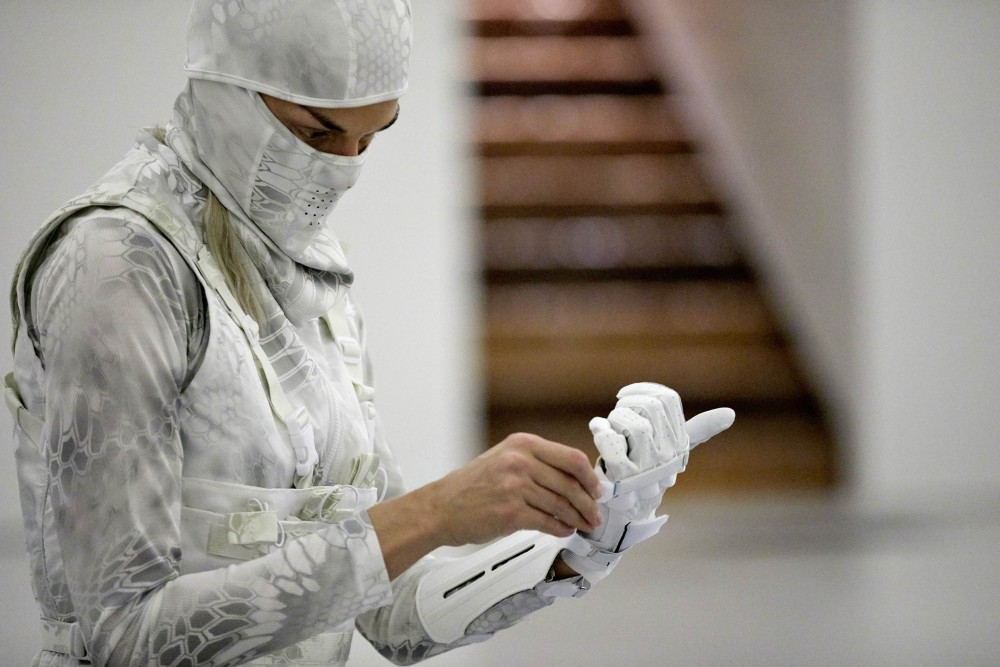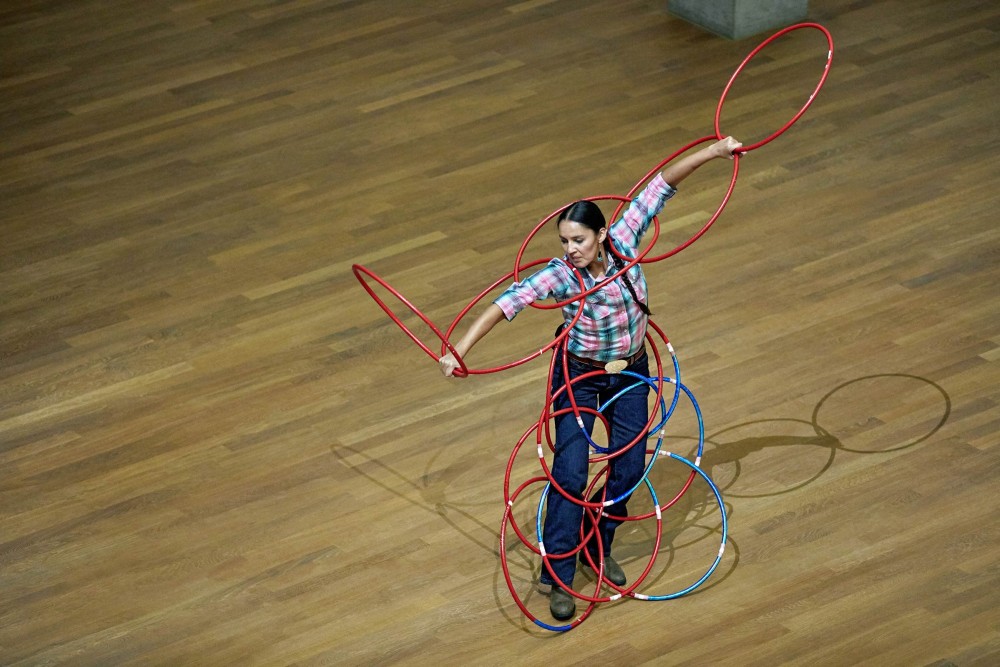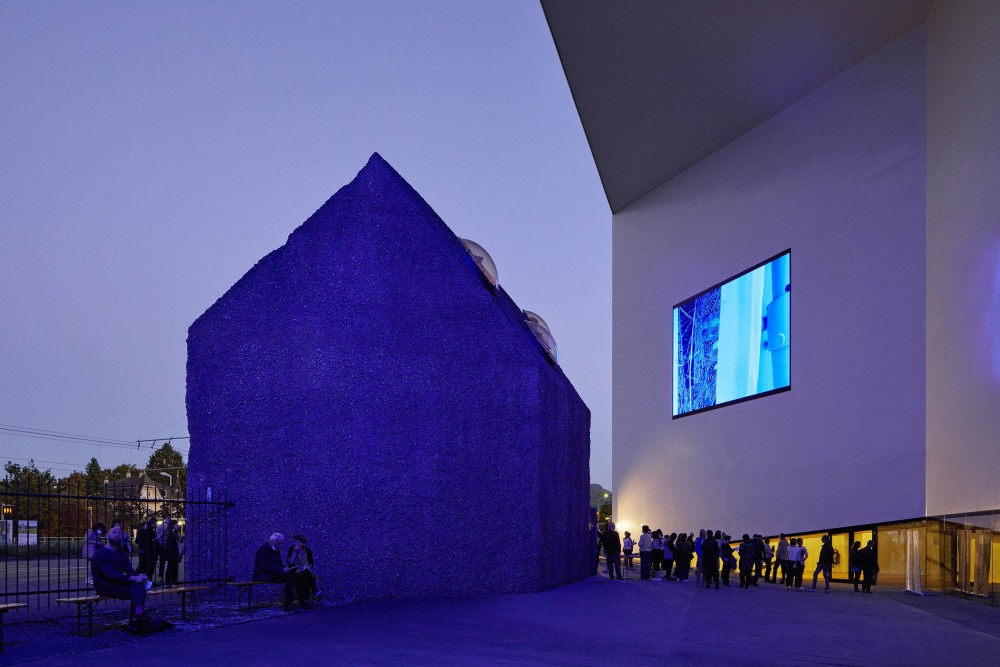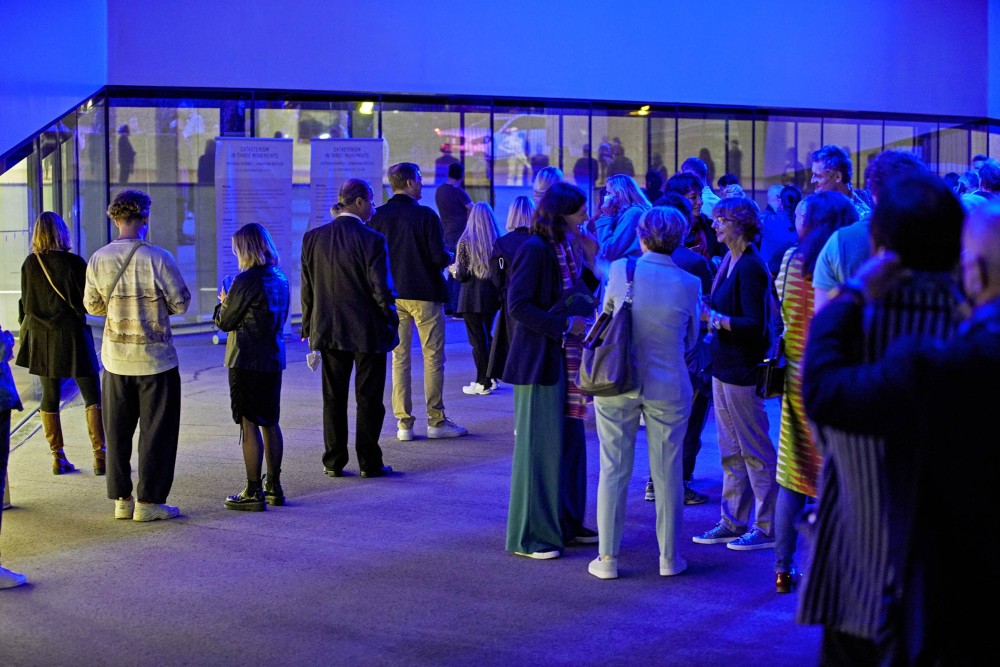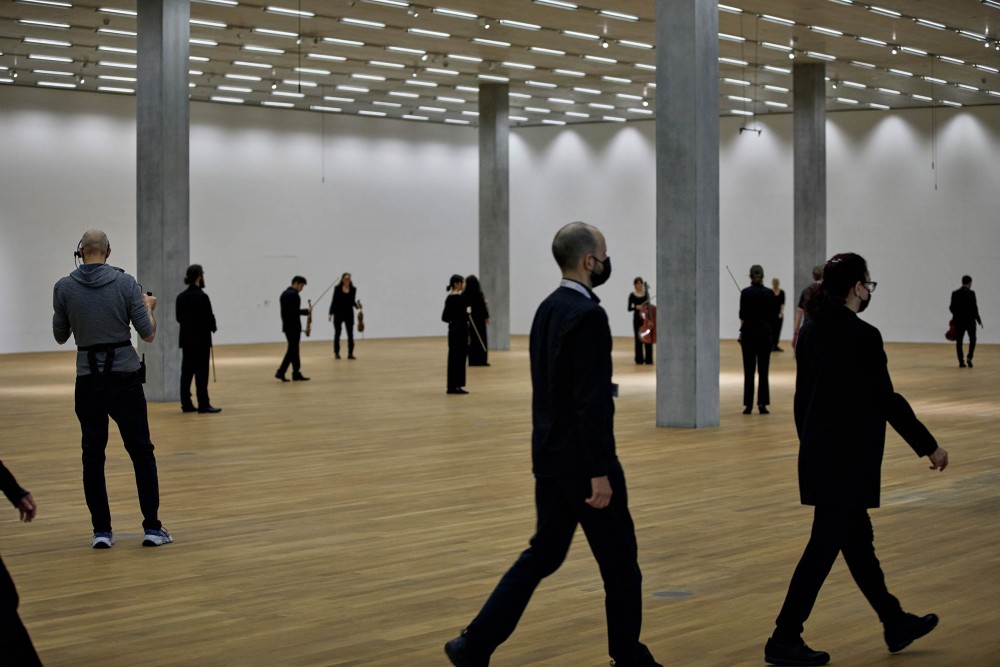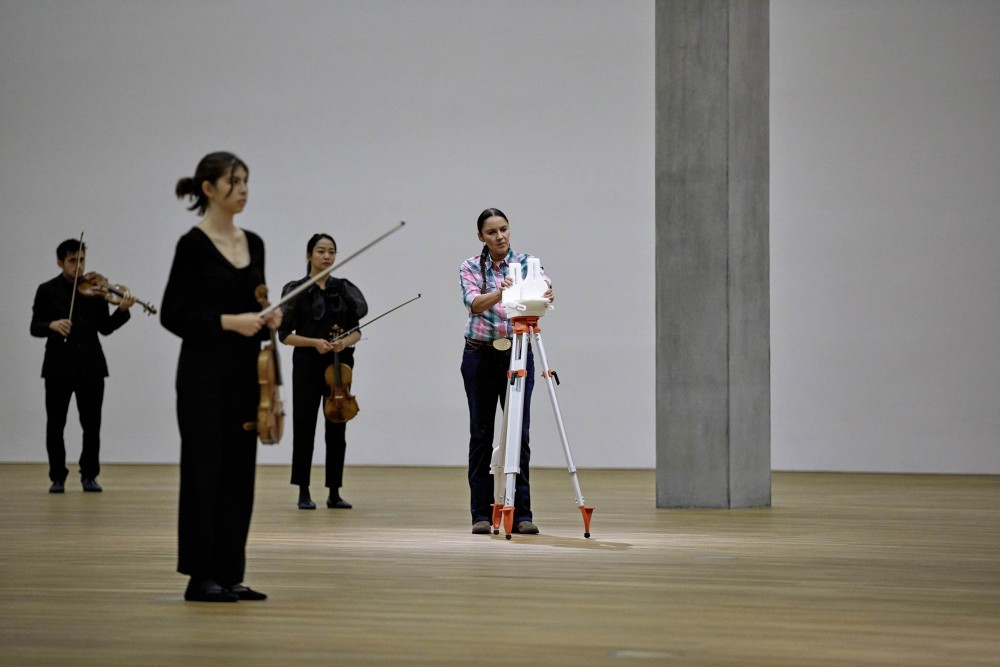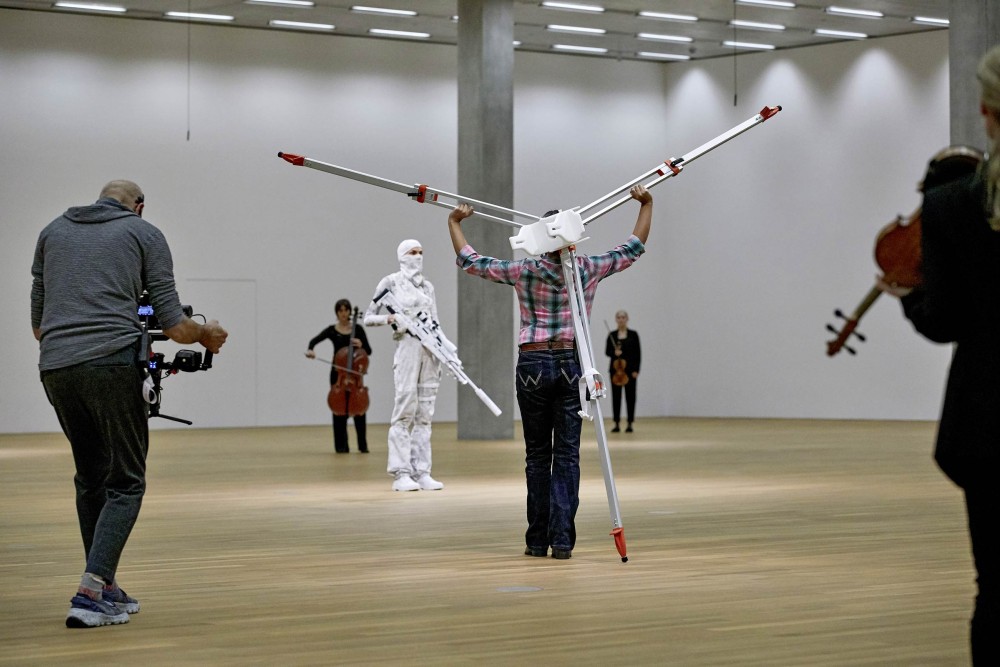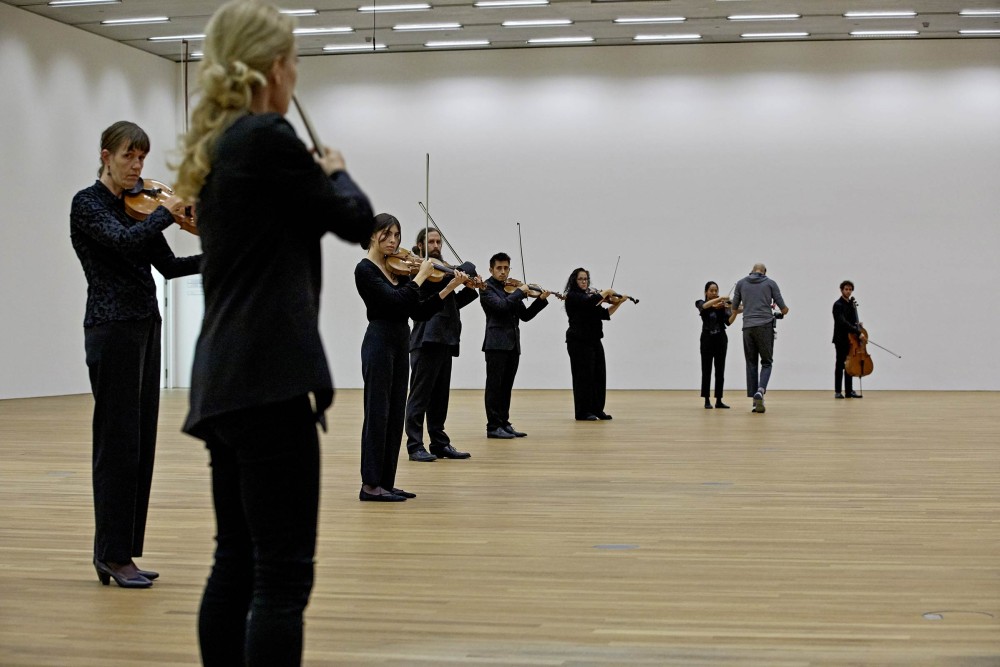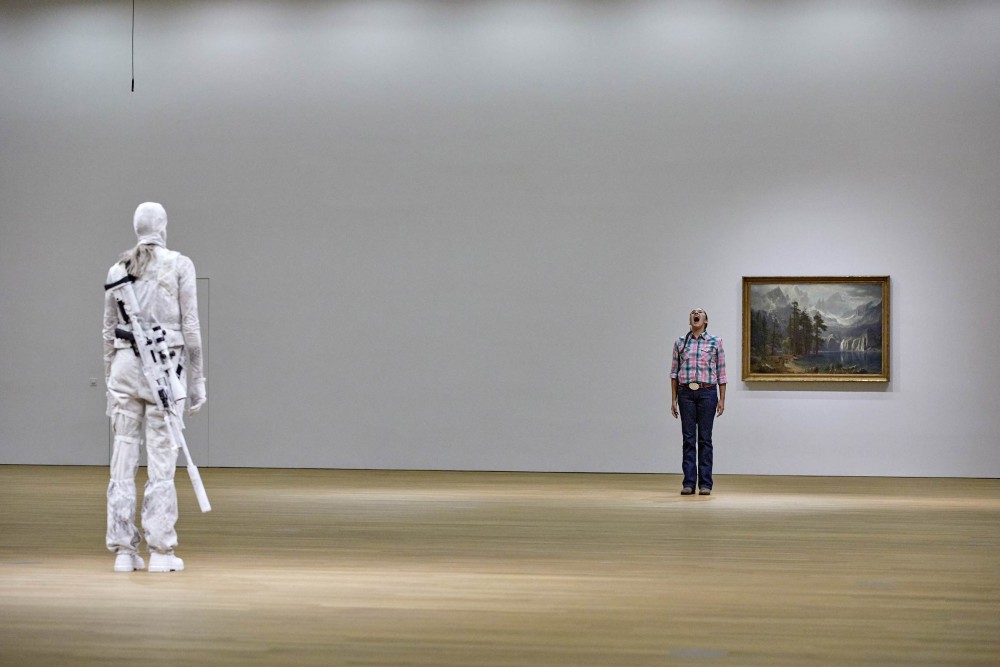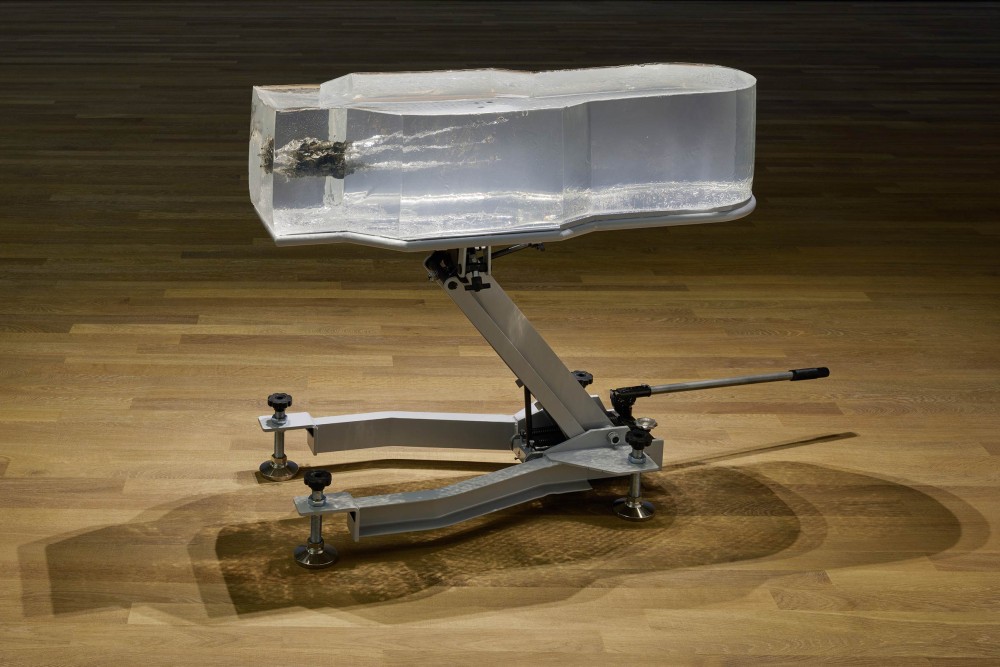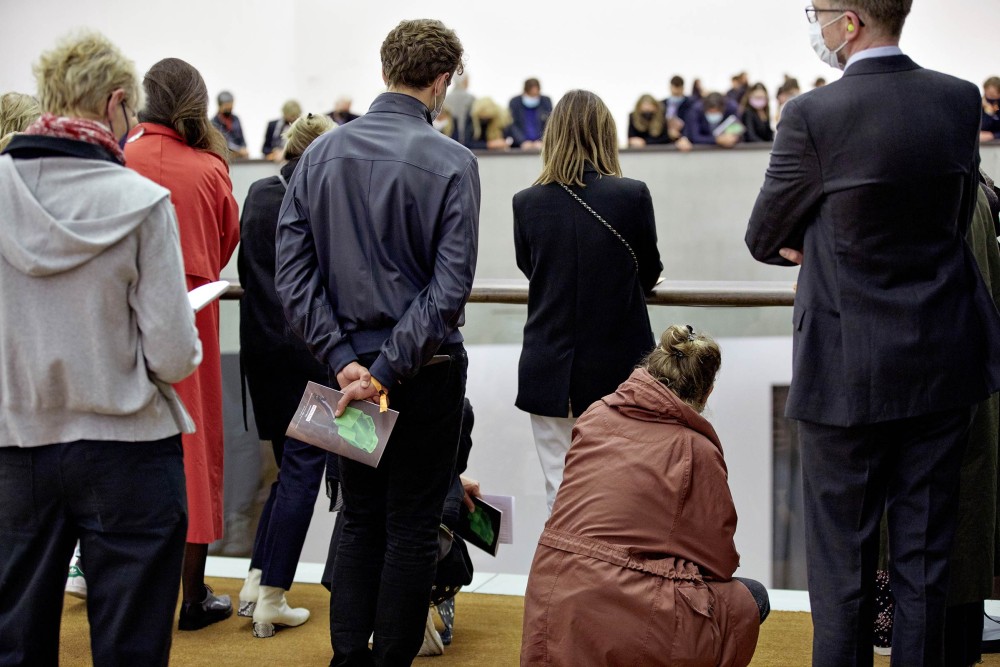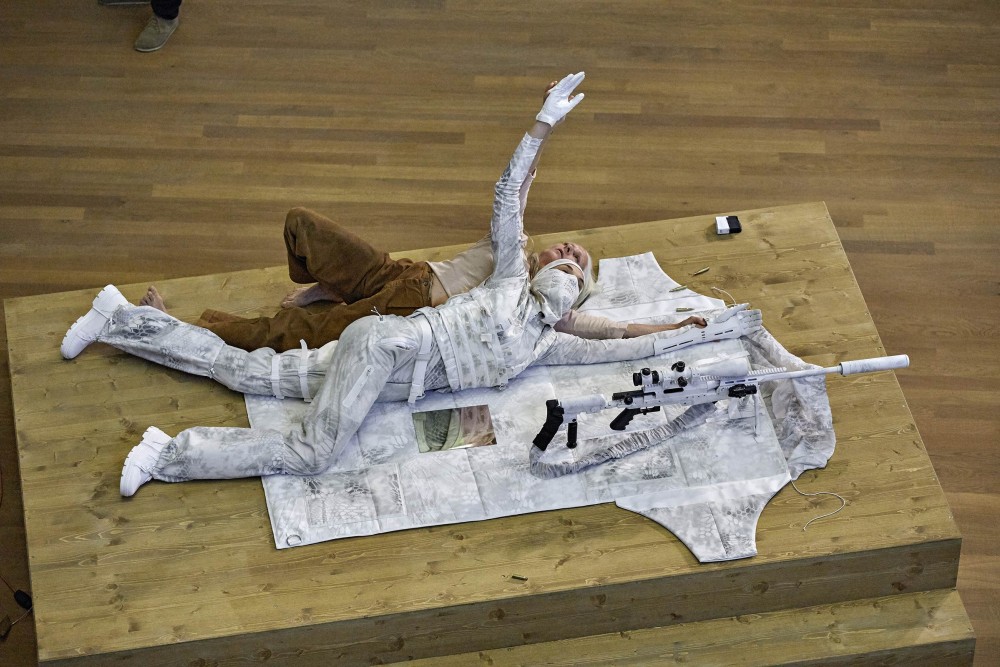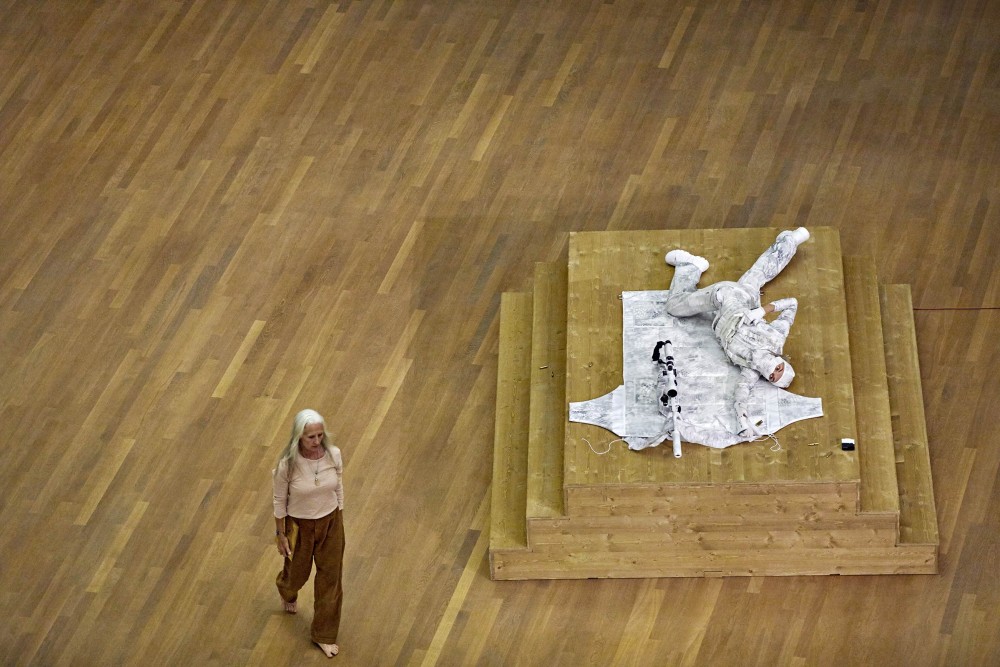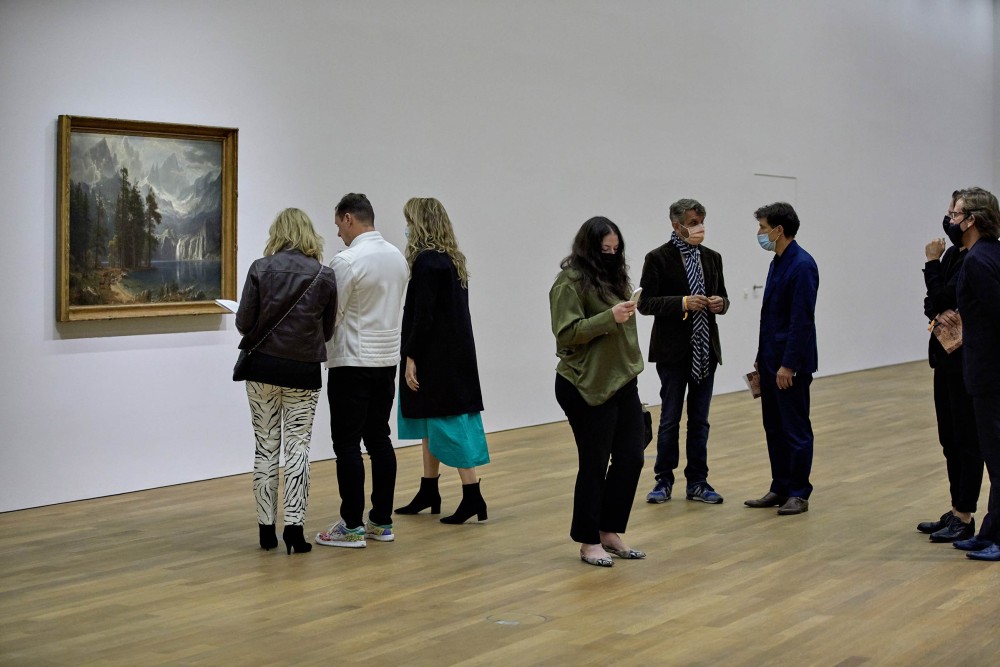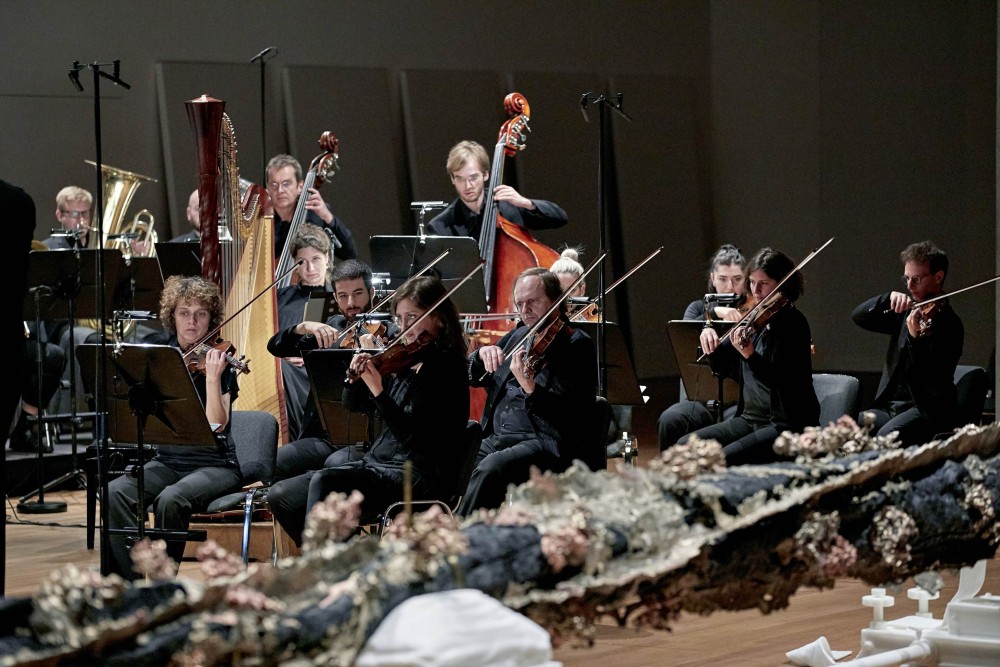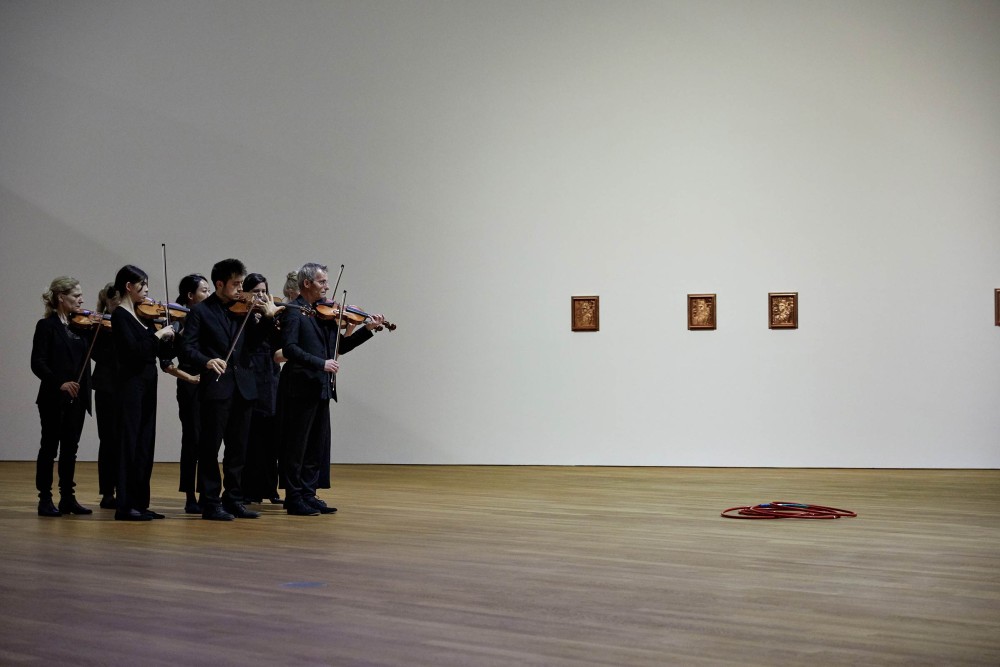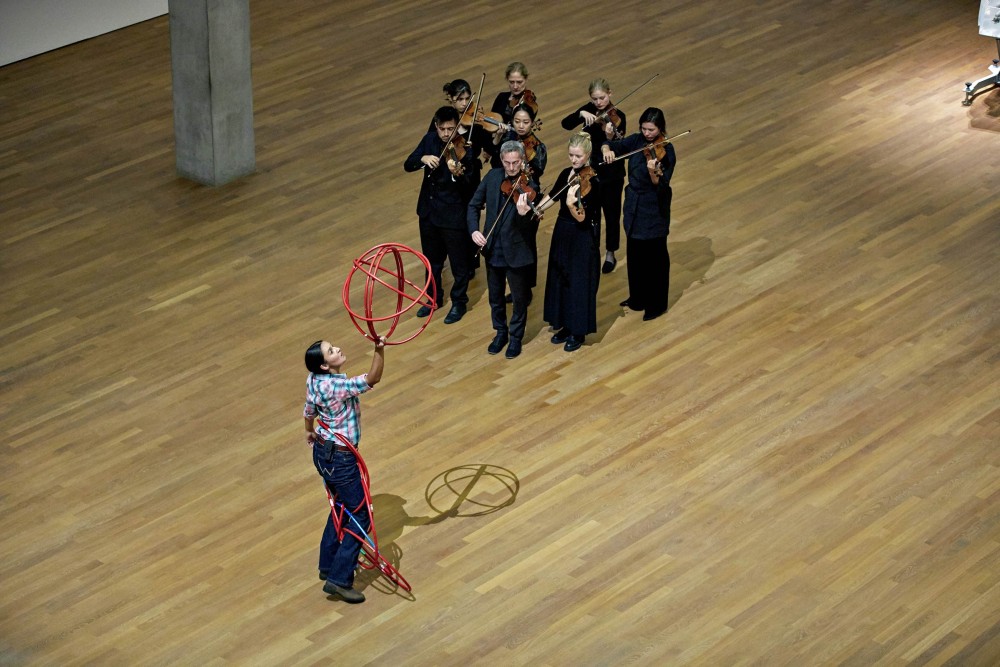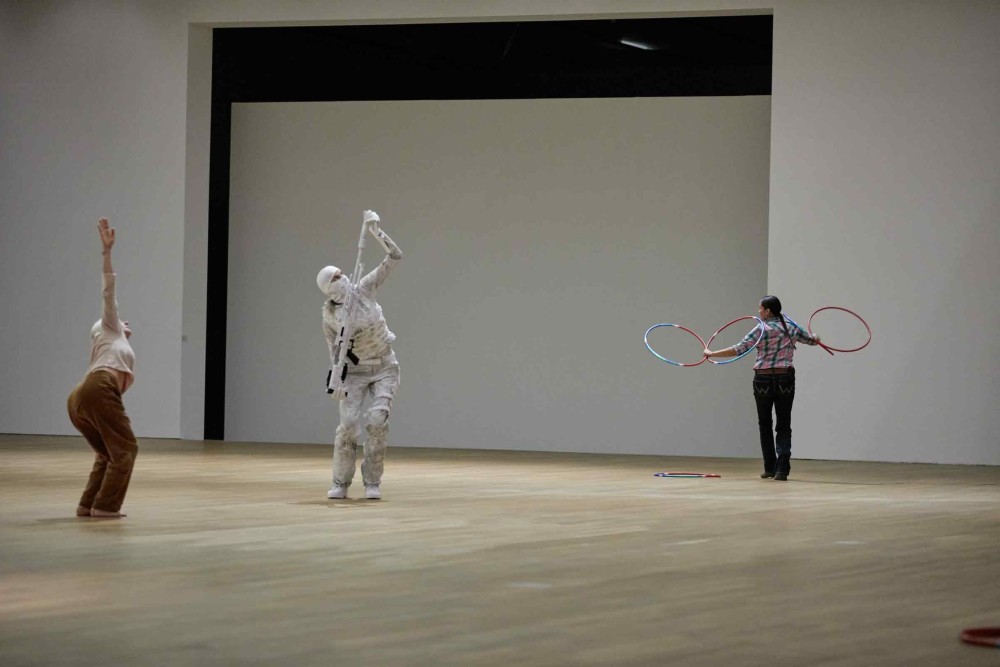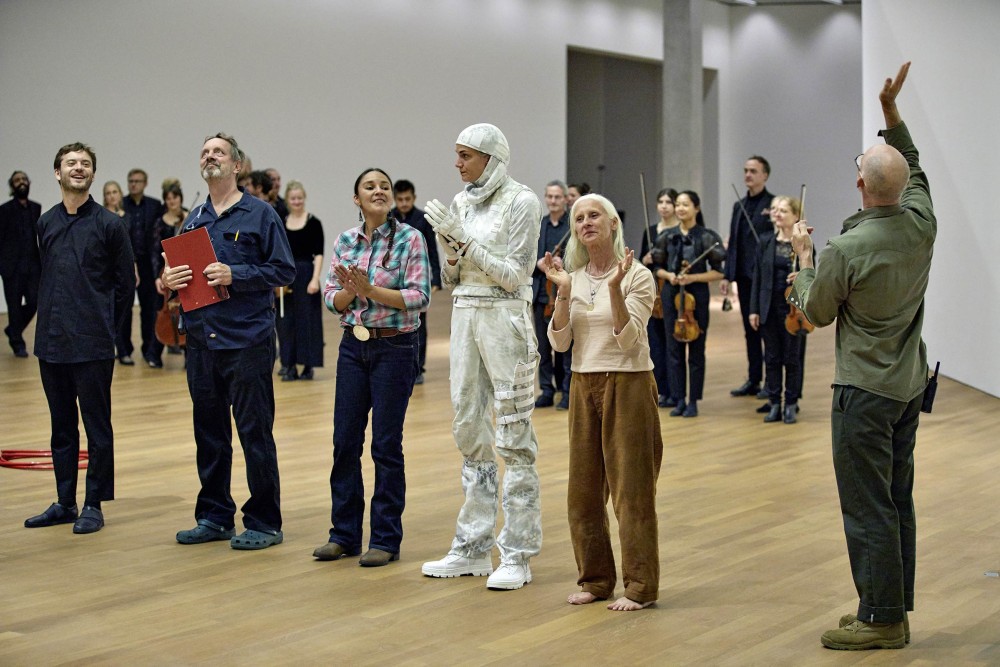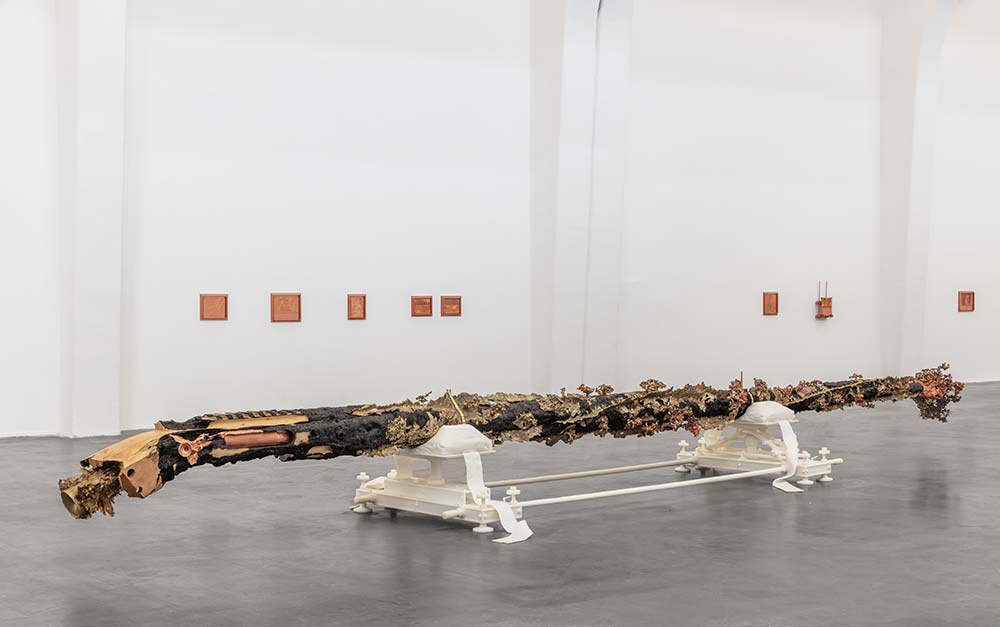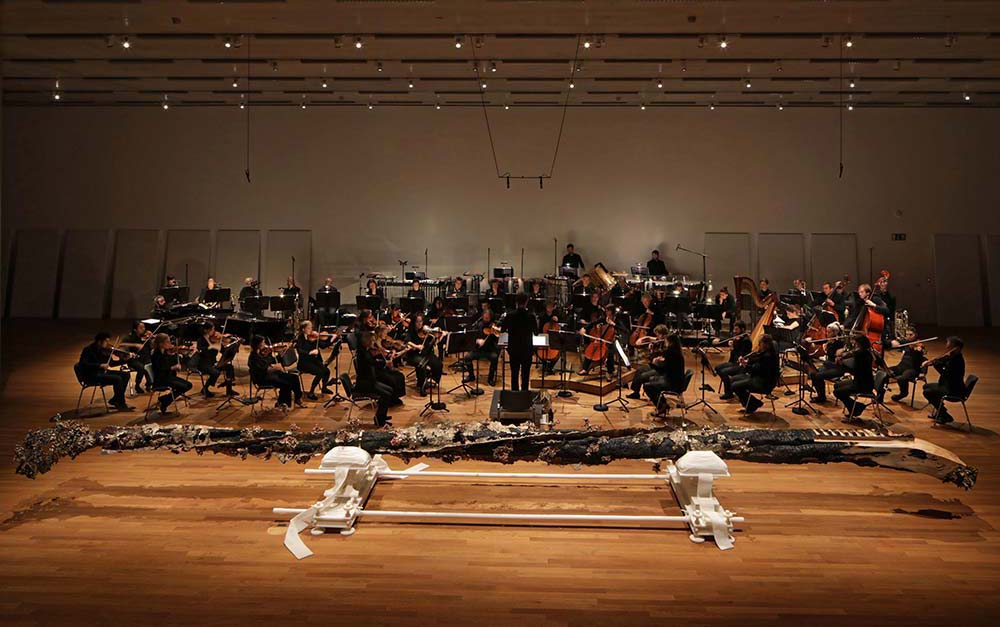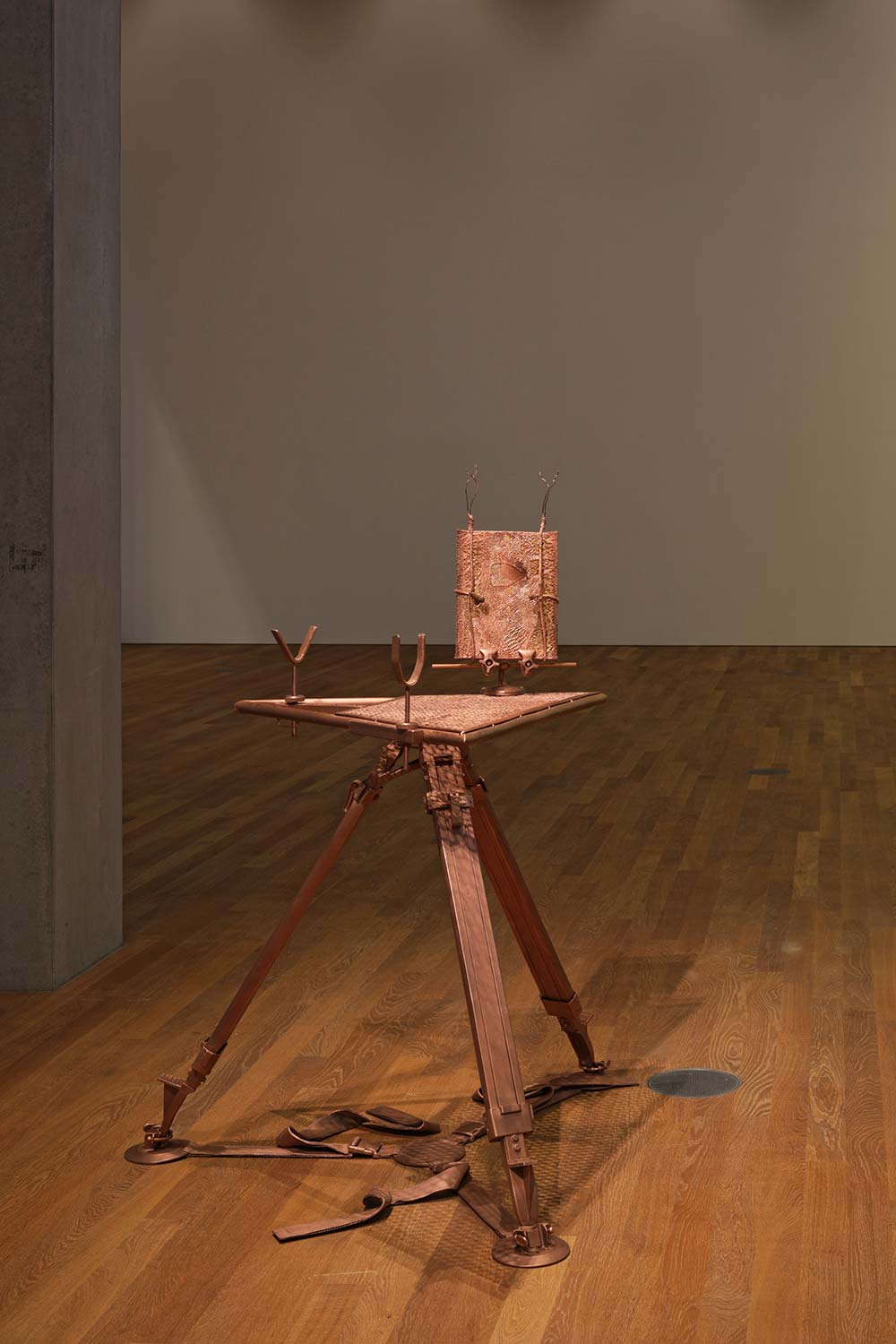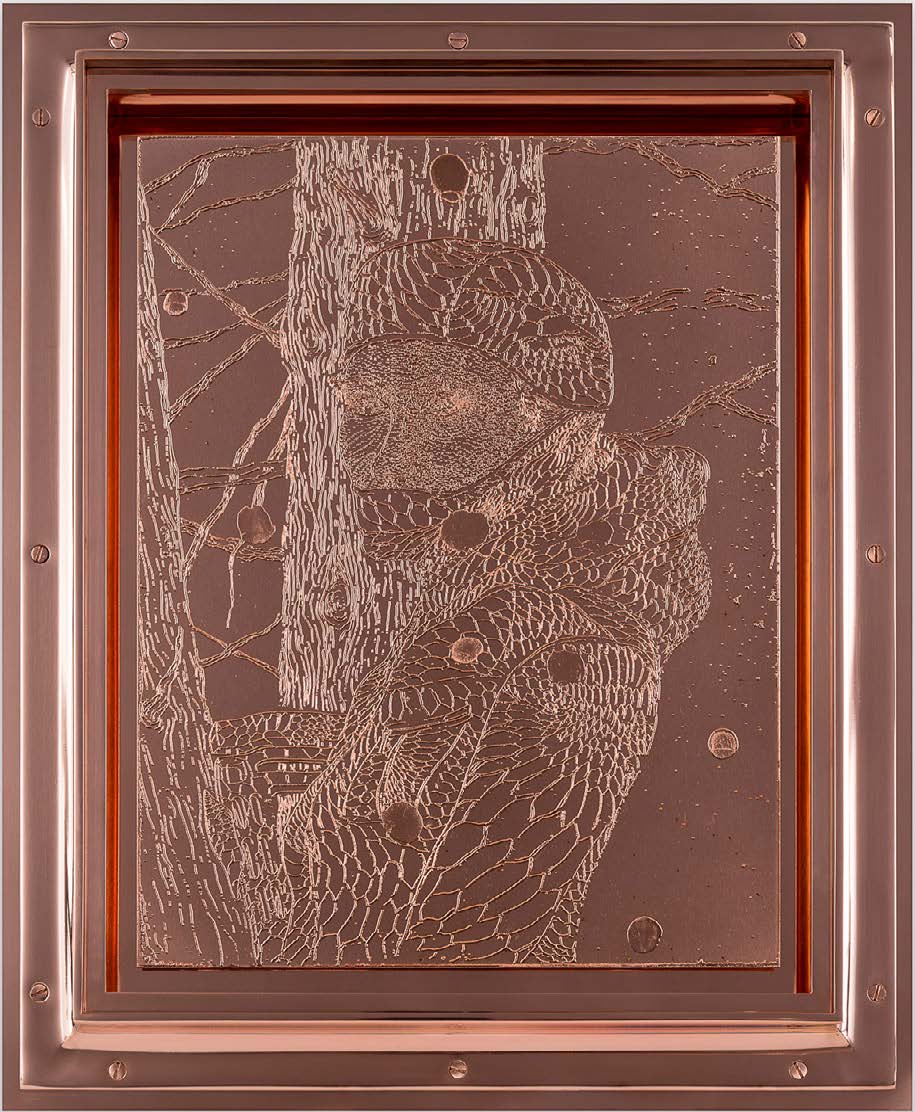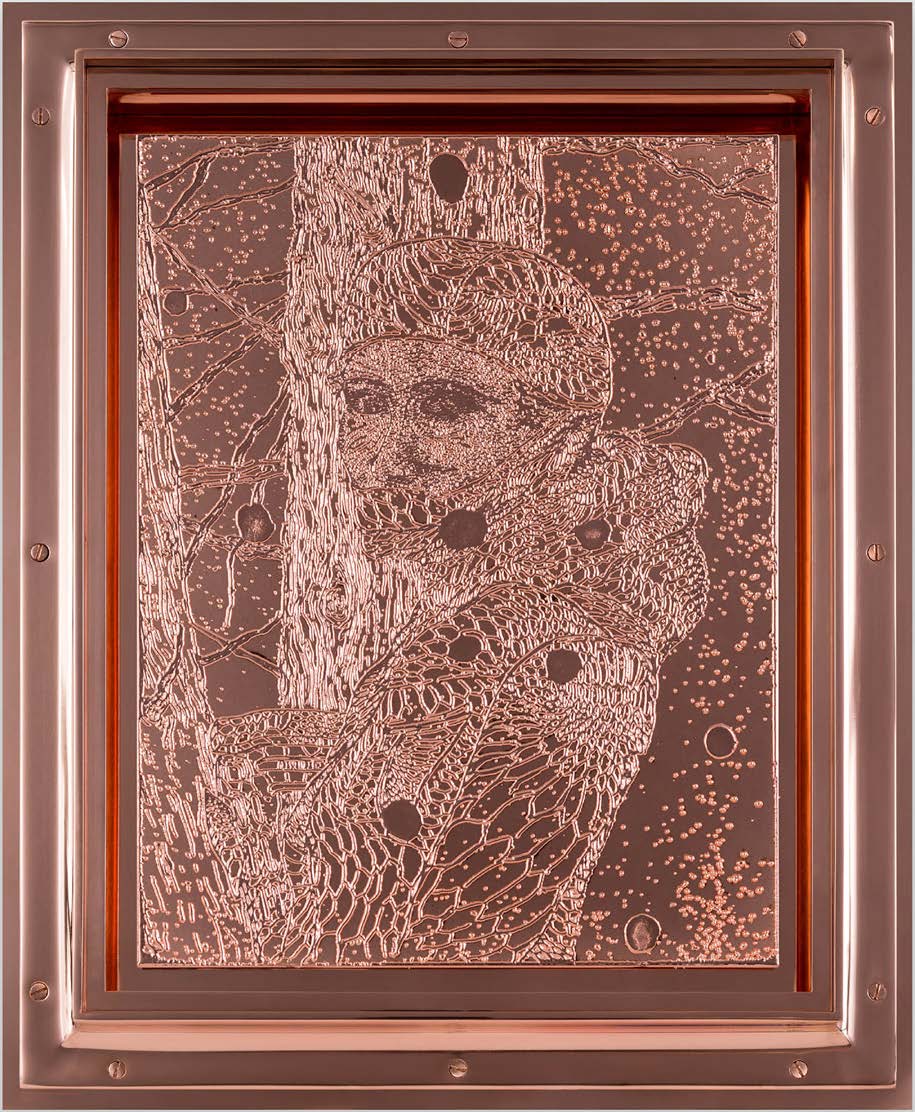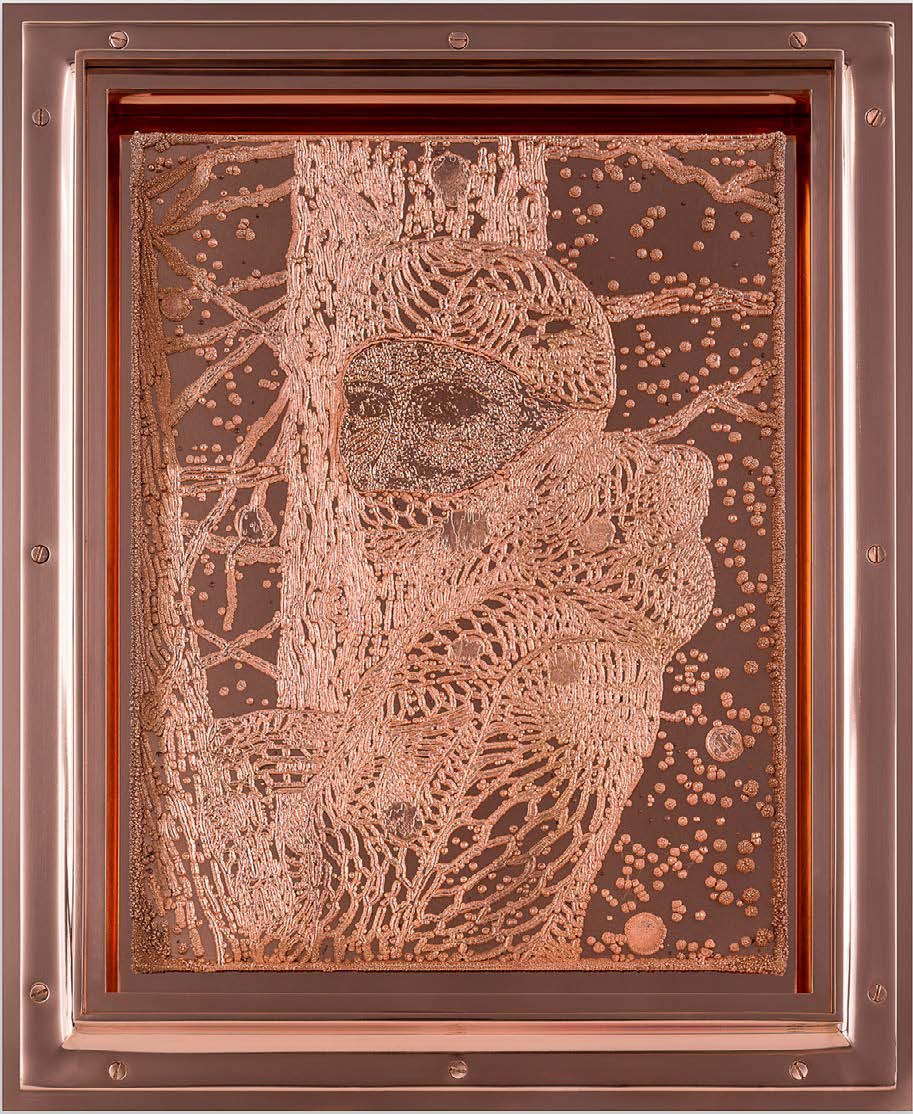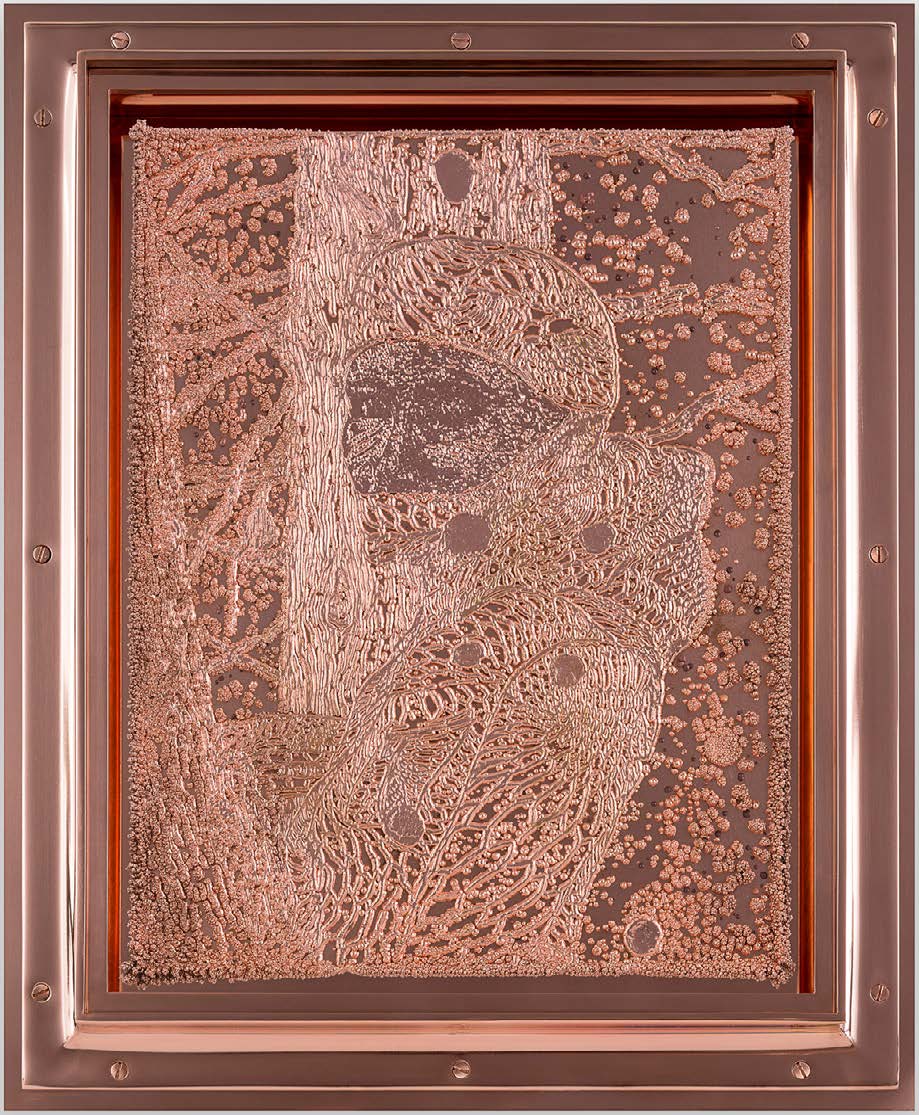The performance Catasterism in Three Movements by internationally renowned US artist and filmmaker Matthew Barney (*1967) and composer Jonathan Bepler (*1959) was presented at Schaulager during Art Basel 2021, 22-25 September. The project drew on Barney’s and Bepler’s long history of collaboration with distinguished musicians in experimental and unconventional settings.
The performance consisted of various components: Matthew Barney’s sculptures and electroplated copper reliefs; implements including a surveying tripod and a camouflaged sniper’s weapon; Jonathan Bepler’s symphonic composition, performed by the Basel Sinfonietta under the baton of Jack Sheen; the choreography that Barney designed together with performance artist K.J. Holmes and Hoop Dancer Sandra Lamouche; and a 19th-century painting by the German-American landscape artist Albert Bierstadt. These interacting elements merged into a single whole, so that the performance essentially became a Gesamtkunstwerk.
The iconic architecture of Schaulager, a building dedicated to preserving and storing contemporary art, played a significant role in this process. Not only was it the stage on which the performers enacted the various scenes; Schaulager also turned into a monumental, resonating body of sound, as the musicians traversed its huge spaces and unique atmosphere with their instruments. The sculptures and objects were part of this transformation. They expanded the scope of the narration and marked the stations of the performance as it moved through space and time. In the course of the three-part performance of some 90 minutes, the audience followed the actors and the musicians on their way through the ground floor and lower level atrium of Schaulager.
The whole event did not contain dialogue or have a linear narrative; the figures communicated and reacted to one another through a choreography of movements and visual axes. Sound and motion, with minimal impulses and reduced gestures at times and expansive movements at others, created an intensely concentrated atmosphere and heightened perception.
A catasterism is the story of how a mythological hero is transformed into a constellation; in its most basic definition, ‘a placing among the stars.’ This idea, merging mythology and measuring, formed the basis for the performance at Schaulager. Other issues resonating through Catasterism in Three Movements were artistic production, the relationship between human and nature, and the transformation of matter and media.
The project continued a series of commissioned works that Laurenz Foundation, Basel, has initiated and enabled since its founding, alongside major exhibitions at Schaulager.
- Playbill Catasterism(pdf, 6.49 MB)
Part 1: Cadastre
(n. A comprehensive land recording. A cadastral parcel is defined as a continuous area identified by a unique set of homogeneous property rights.)
Topics such as land use, measurement and survey determined the first part of the performance. At the beginning, the space of Schaulager was explored with the instruments. The musicians stood far apart one from each other, almost like a forest through which the wind rustles: individual tones, elicited from different strings thus found each other over several stations and connected to form sequences of notes. Three loud, consecutive gun shots formed an impressive acoustic intermezzo. Albert Bierstadt’s painting Sierra Nevada (1871–1873) occupied a prominent wall on the ground floor, while Barney’s Diana works were installed on the lower floor of the atrium. Sandra Lamouche, K.J. Holmes and Jill Bettonvil mapped out and probed the space with the use of technical devices: Lamouche, in her role as Hoop Dancer, set up and re-positioned a kind of surveying instrument; Bettonvil, enacting Diana, wielded a firearm; a sniper rifle equipped with a green laser. With a copper plate, Holmes deflected the rifle’s green laser beam to the wall allowing it to travel all the way to the ceiling/sky.
Part 2: Catasterism Suite (for Orchestra with Sculpture)
(catasterism. N. The process by which a hero is turned into a constellation or celestial object; a placing among the stars.)
The second part was determined by the theme of the actual metamorphosis or catasterism, expressed by the manifold dynamics of the music. It took place in a chamber where Basel Sinfonietta, directed by Jack Sheen, played in orchestral formation. Ushers escorted the visitors to the custom-built concert hall where the 50-member orchestra performed Jonathan Bepler’s composition as a premiere. Bepler’s point of departure was Barney’s sculpture Elk Creek Burn, which was installed between orchestra and audience. In contrast to the reduced sequences of notes and the expansive scenography of the first part, musicians, audience, instruments and sculpture were now together in an intimate space with highest concentration. The interaction between the instruments and the sound spectrum of each one created a stunning diversity and opulence of sound.
Part 3: Catastastis
(n. The dramatic complication immediately preceding the climax of a drama.)
In the last part, the musicians played on four floors, embracing the performers, the audience, and the sculptures in an ethereal, harmonic carpet of sound with their violins, percussion, and wind instruments. The three performers came together dancing in the atrium. Jill Bettonvil, as Diana, carried out a choreography of repetitive movements with her sniper rifle. Next to her, Sandra Lamouche performed a Hoop Dance, a Native American form of dance, impressively symbolizing balance and the unity of body and spirit in a holistic worldview. K.J. Holmes moved between the two, reflecting forms and figures like a mirror image, and appropriating contradictory traits.

